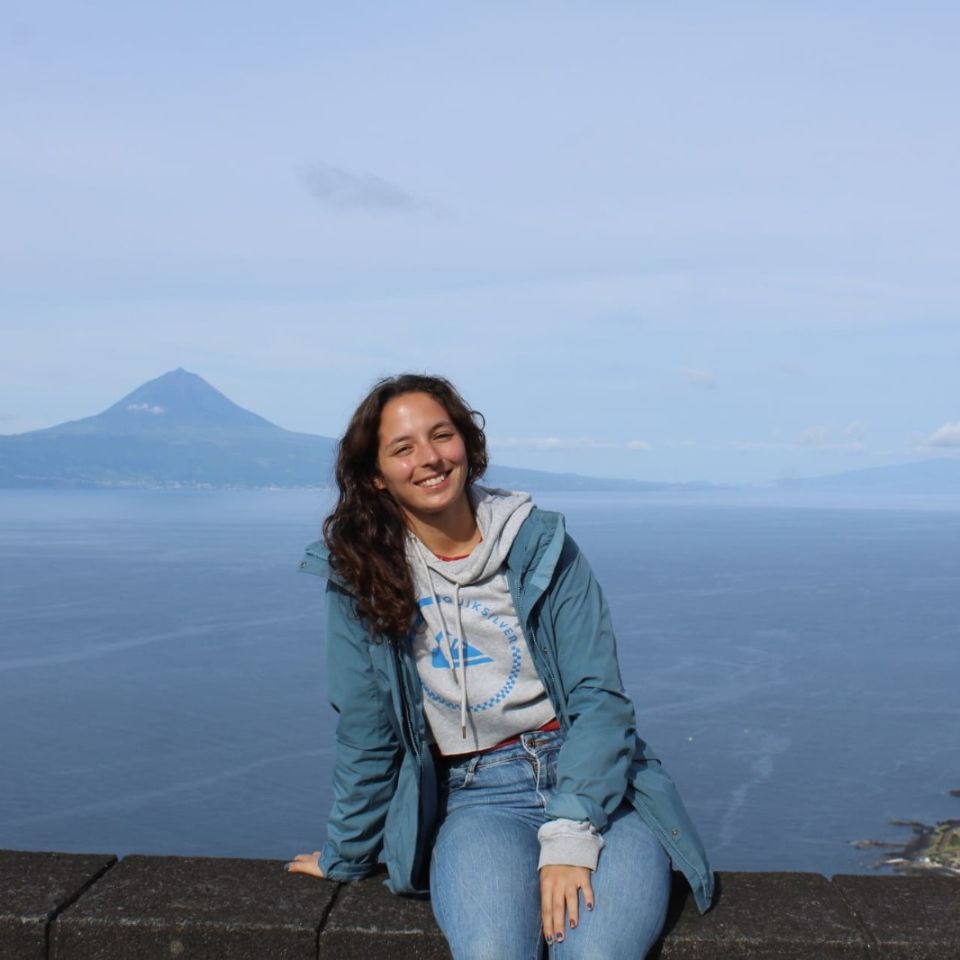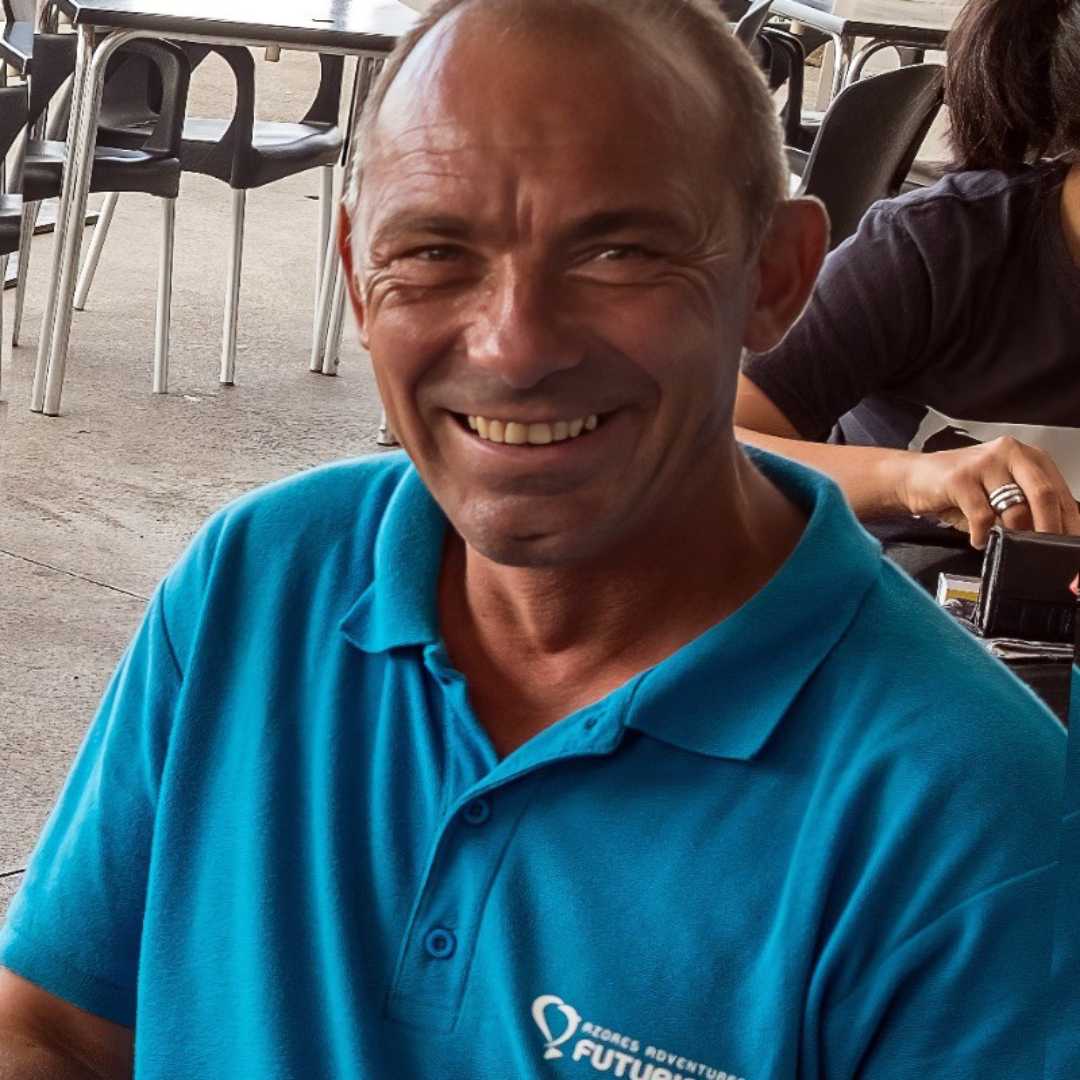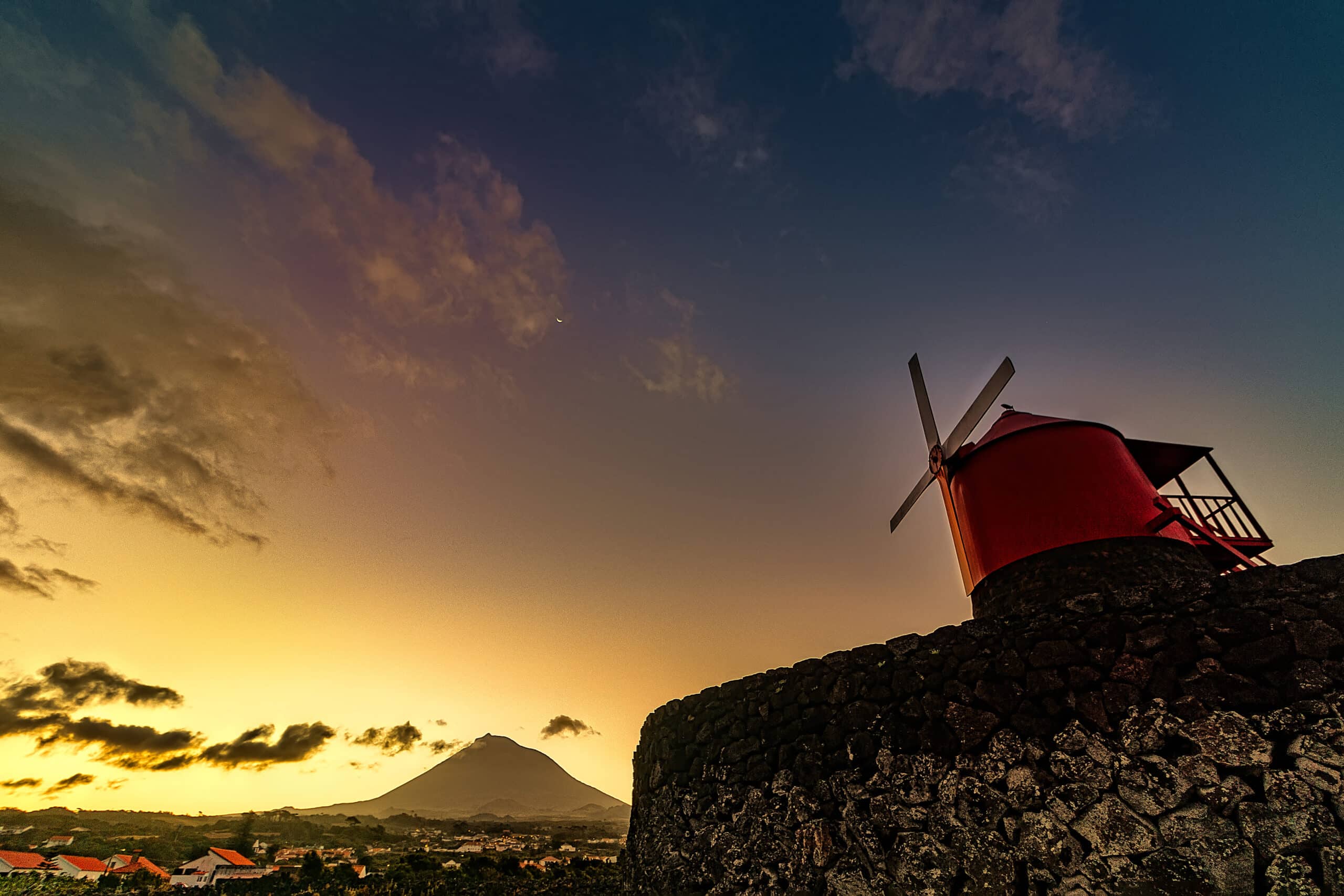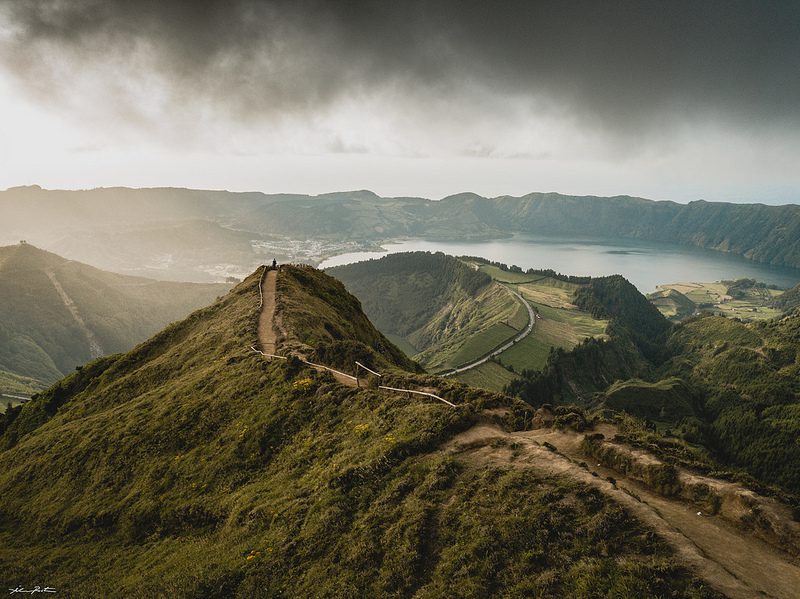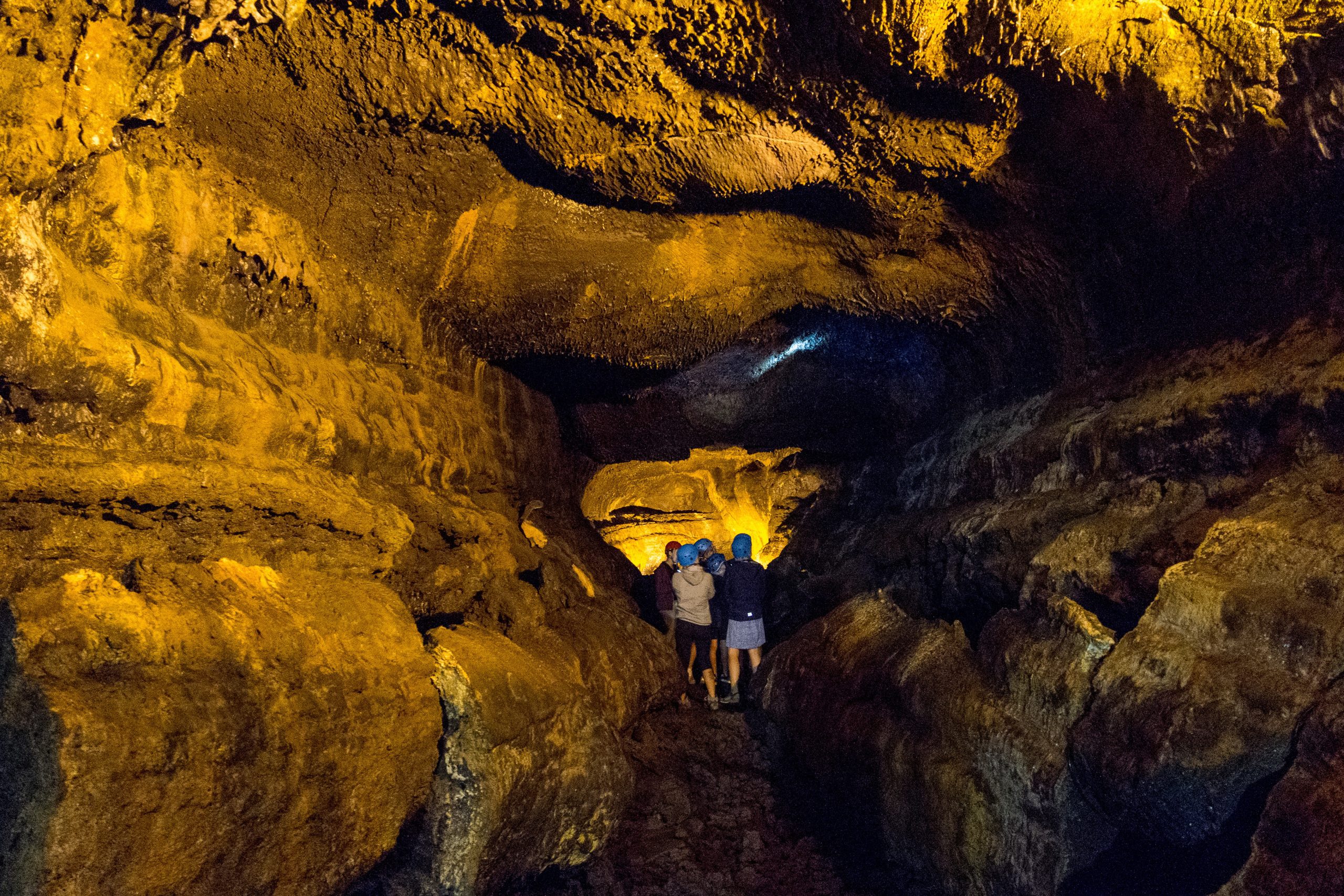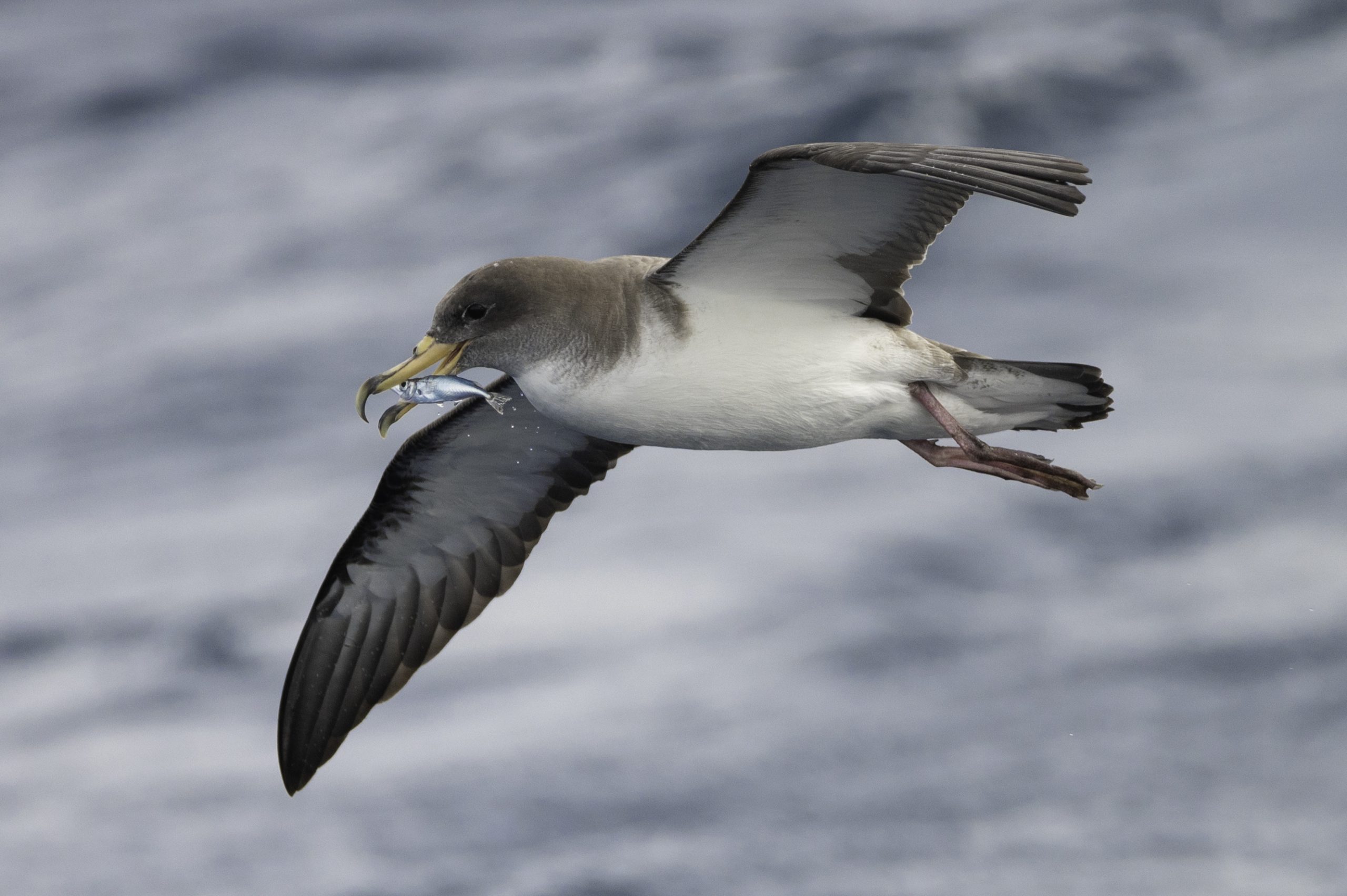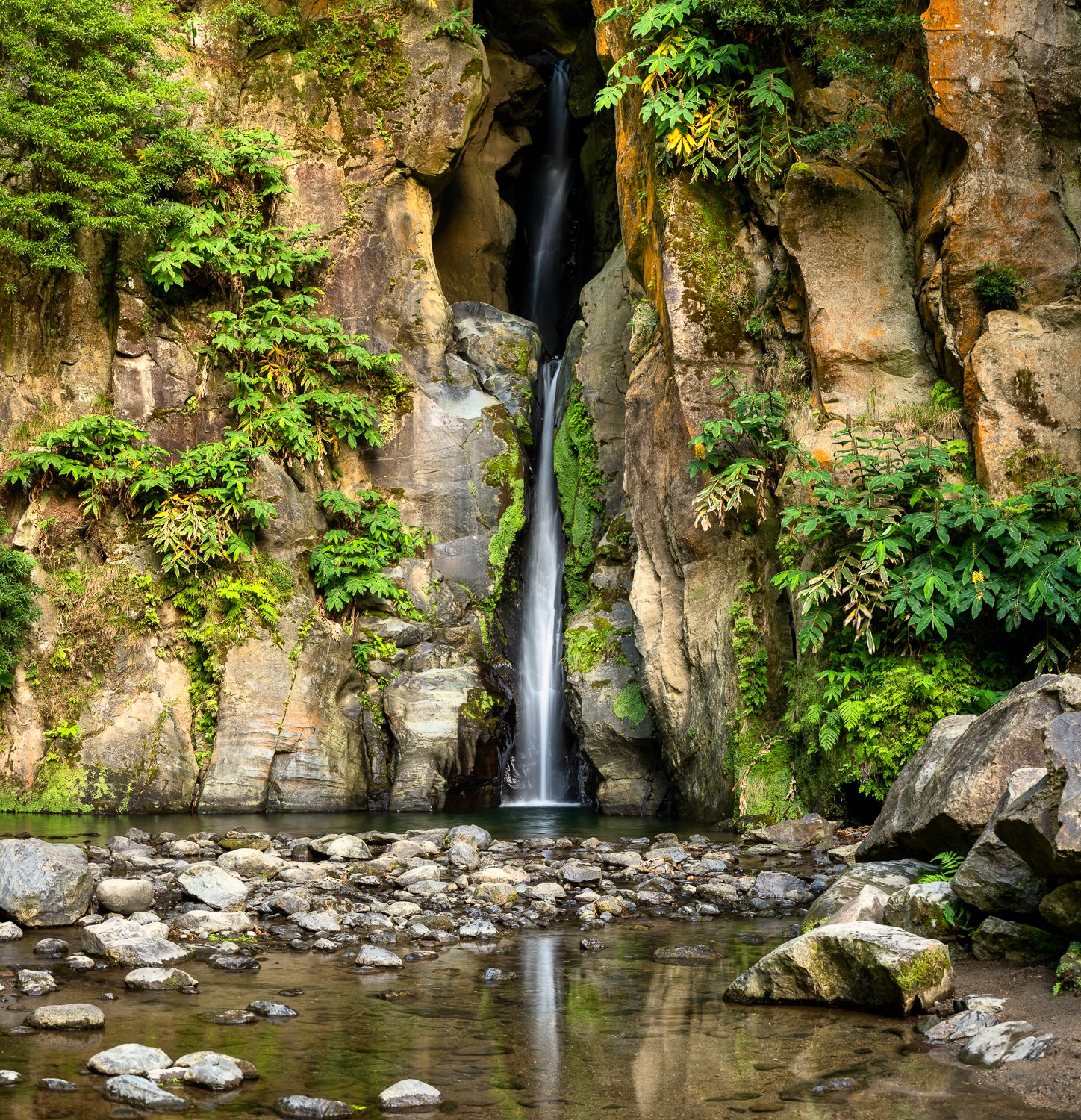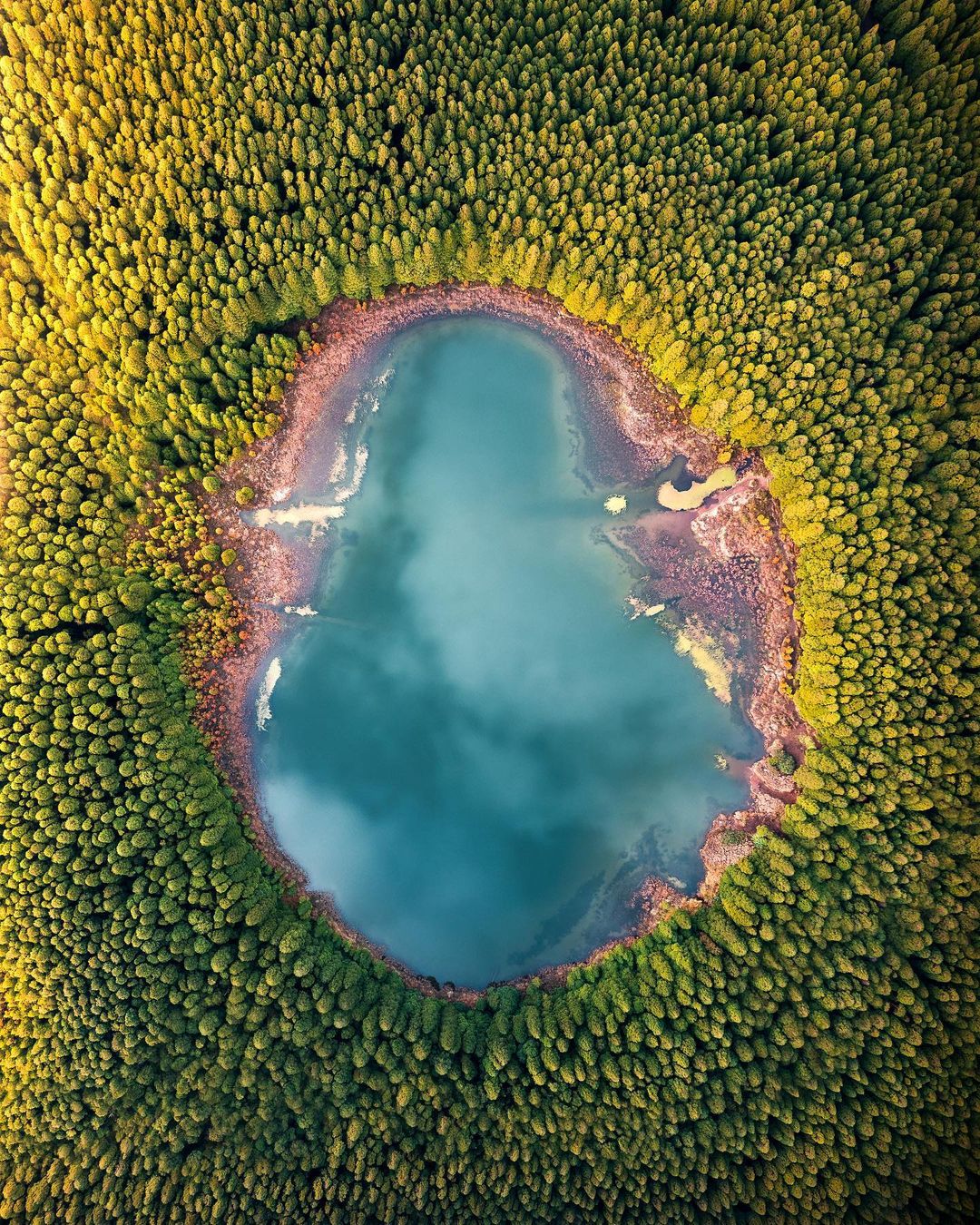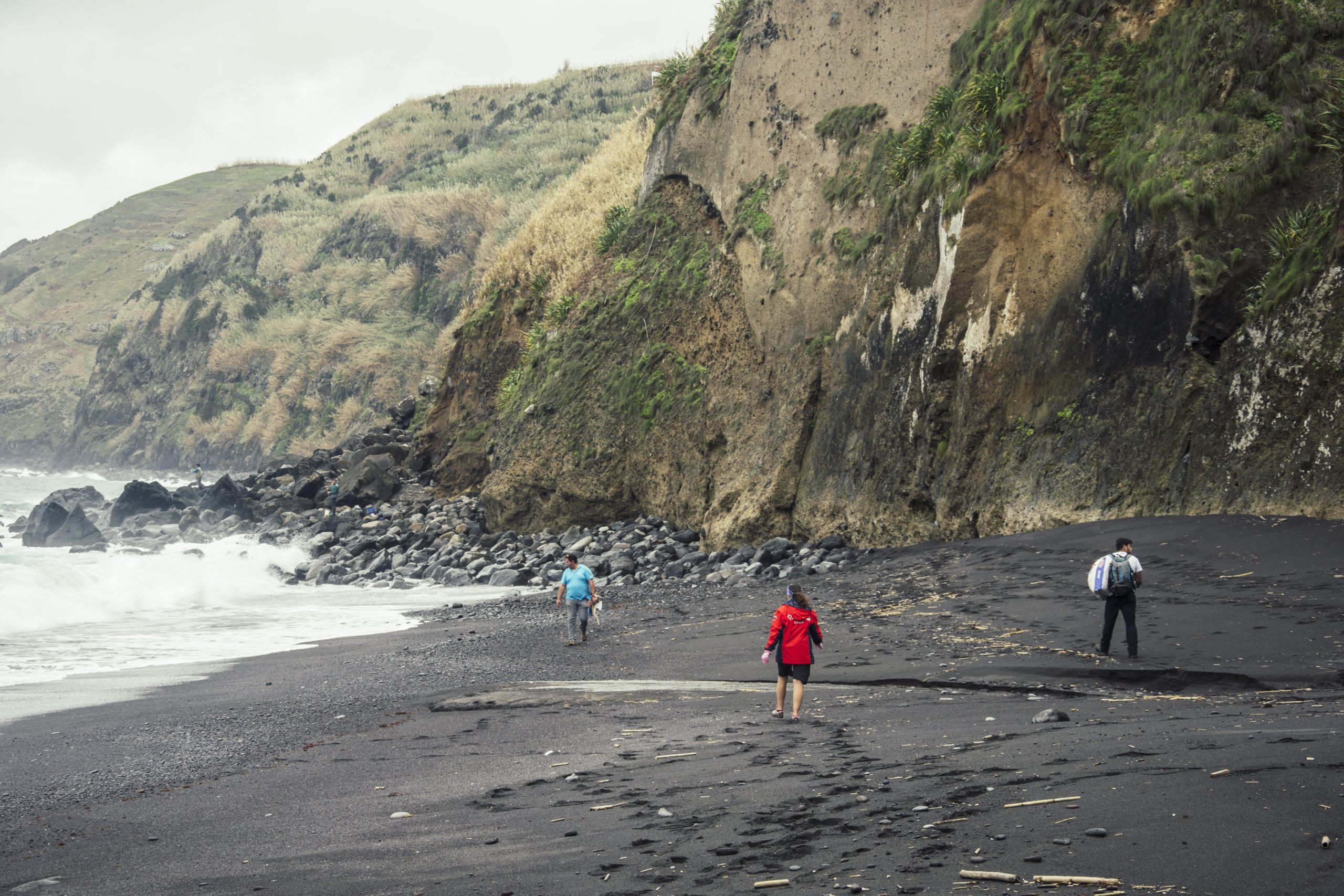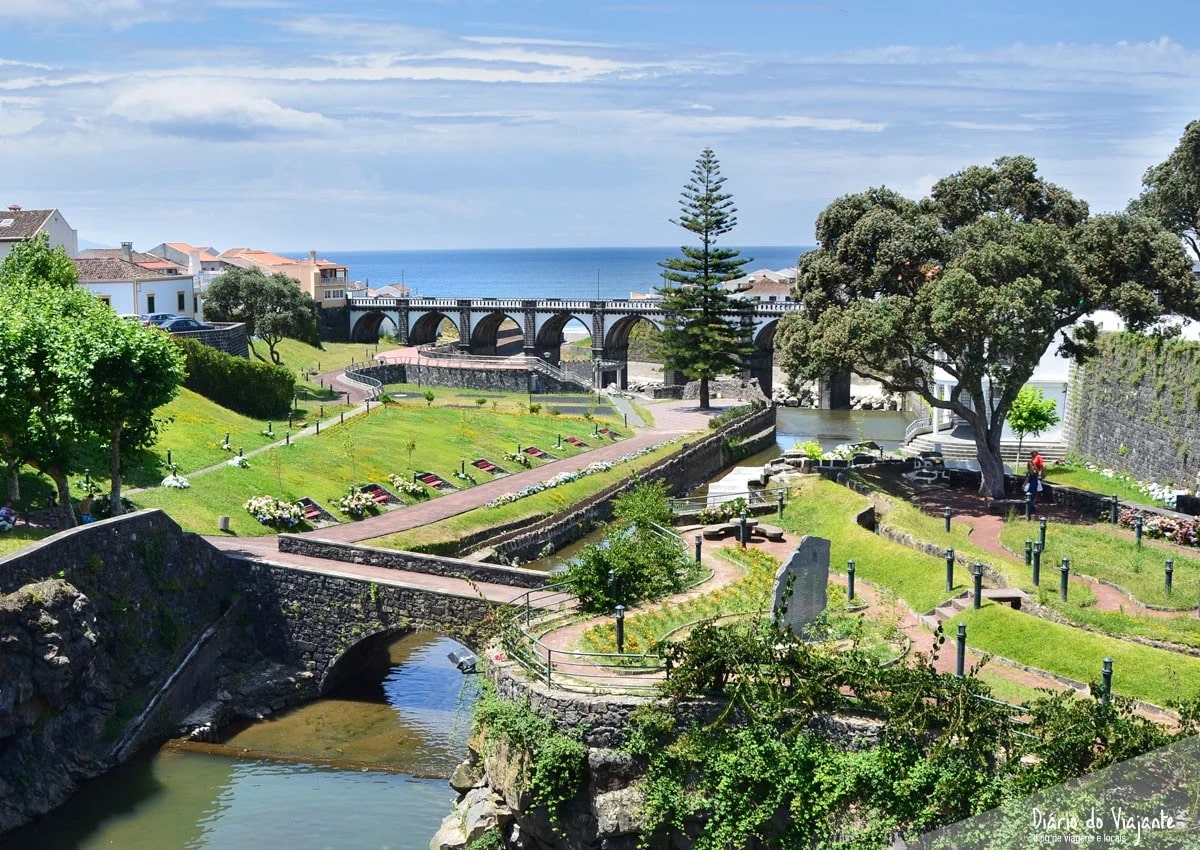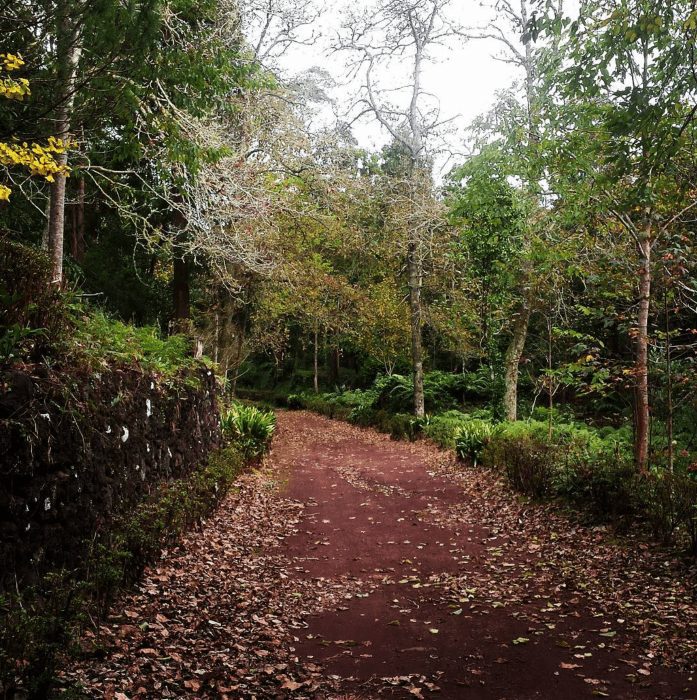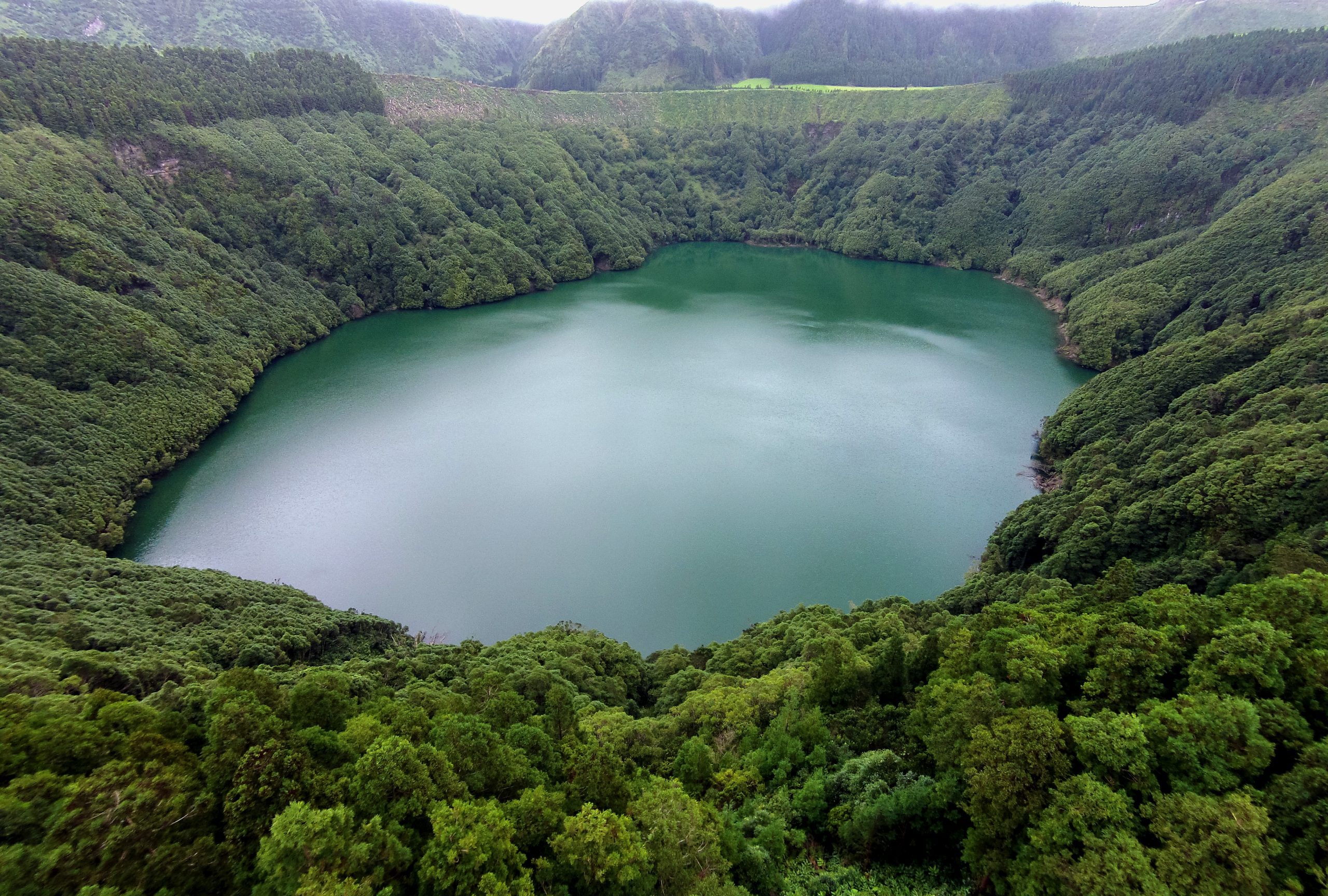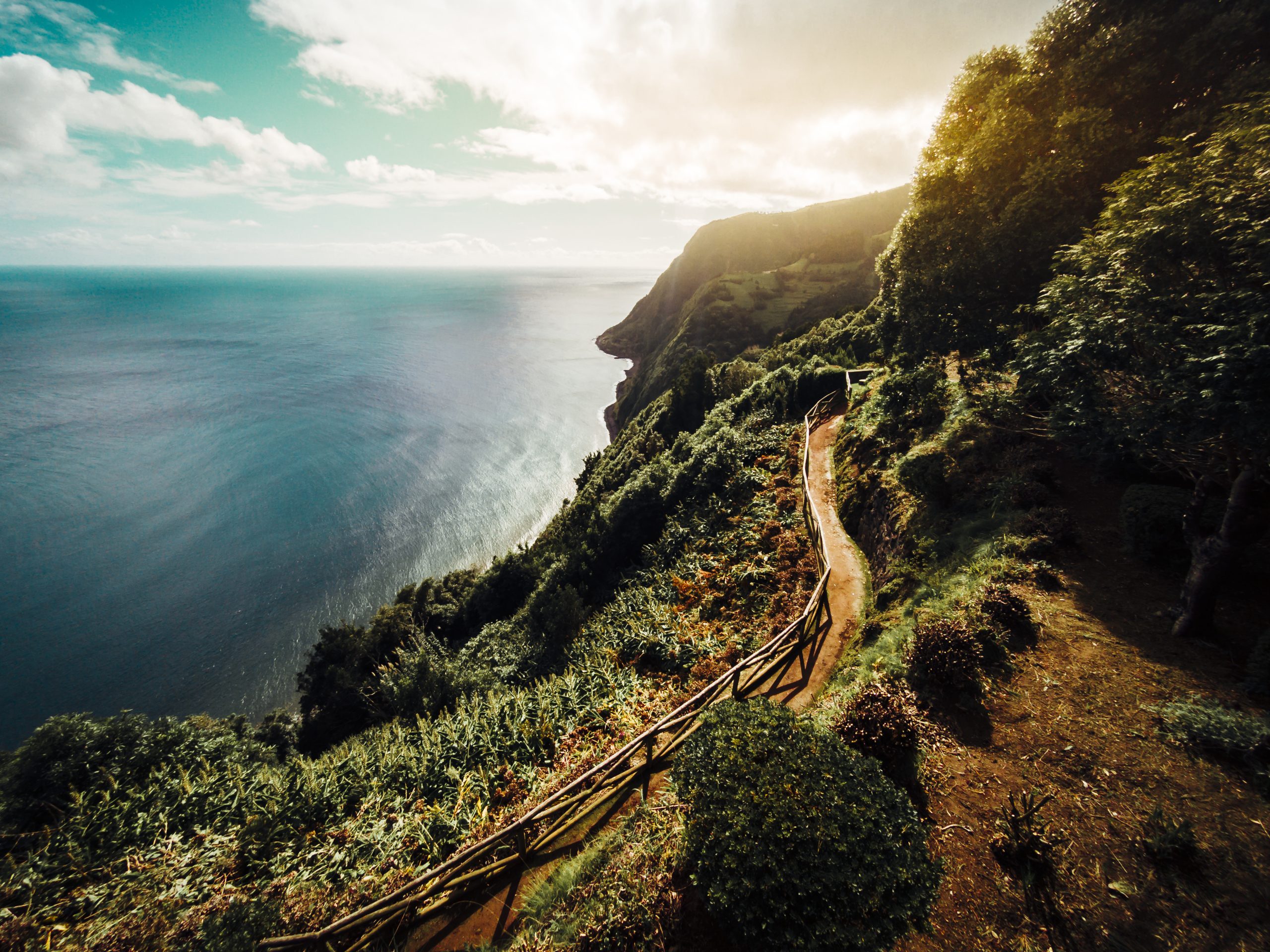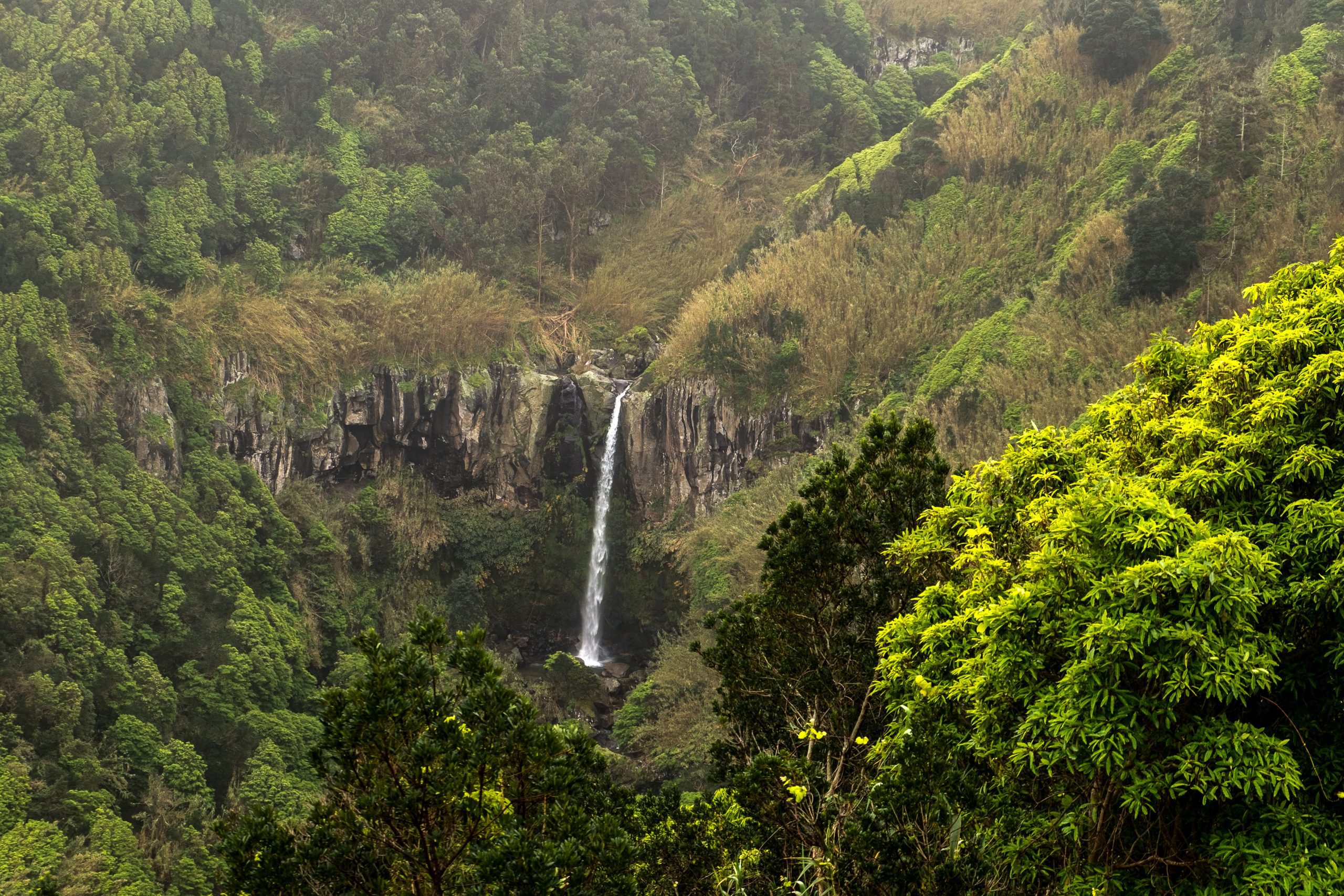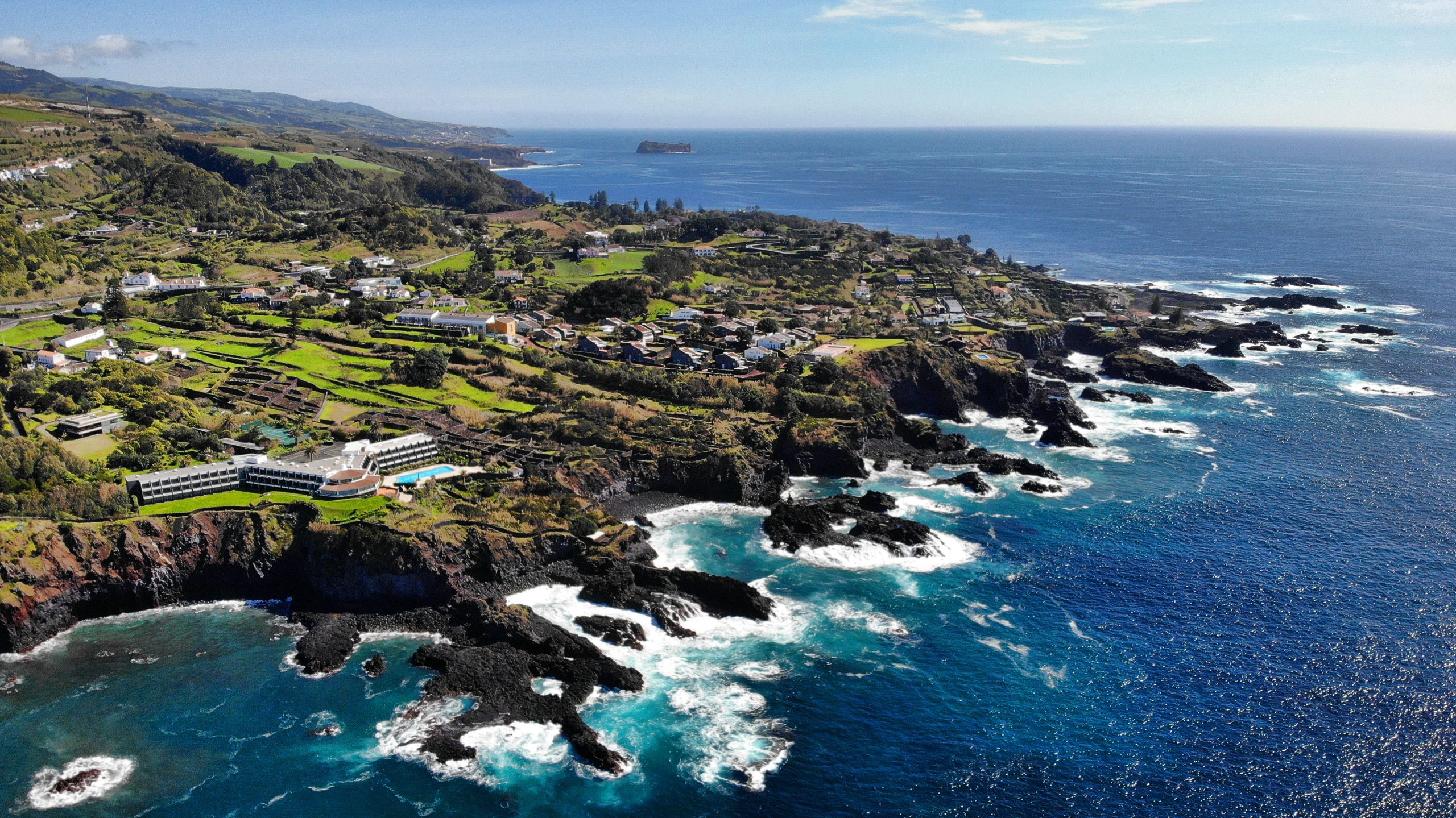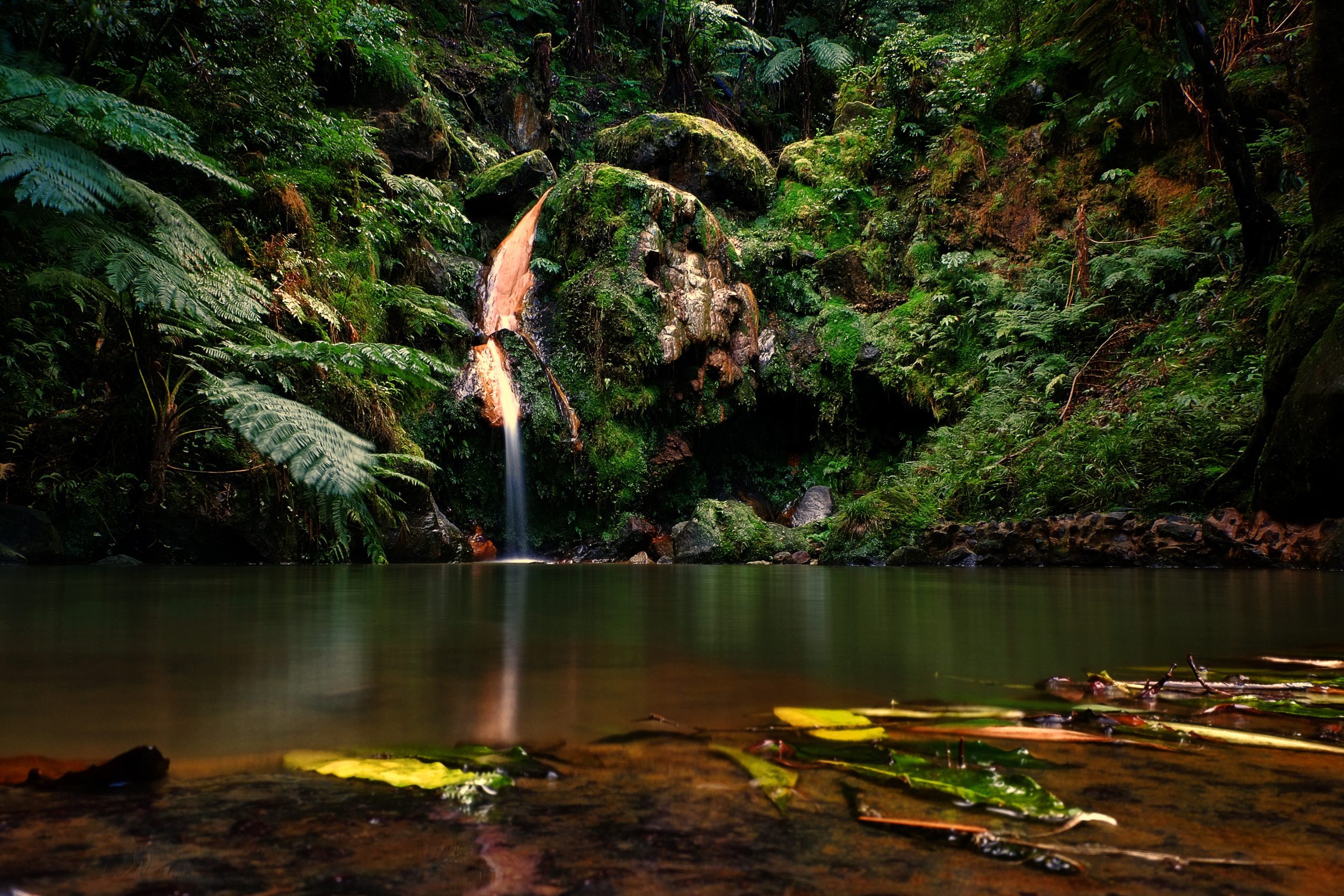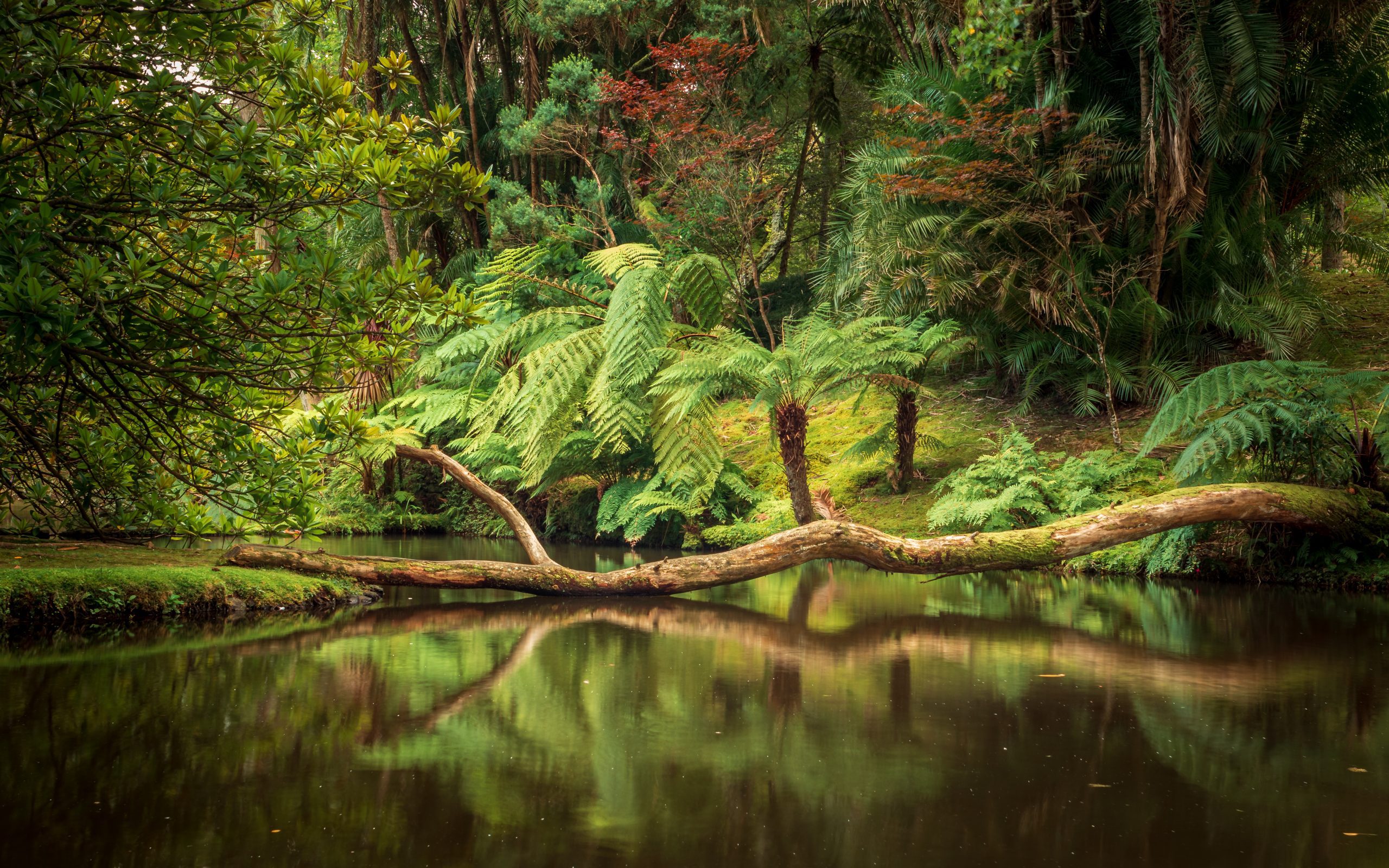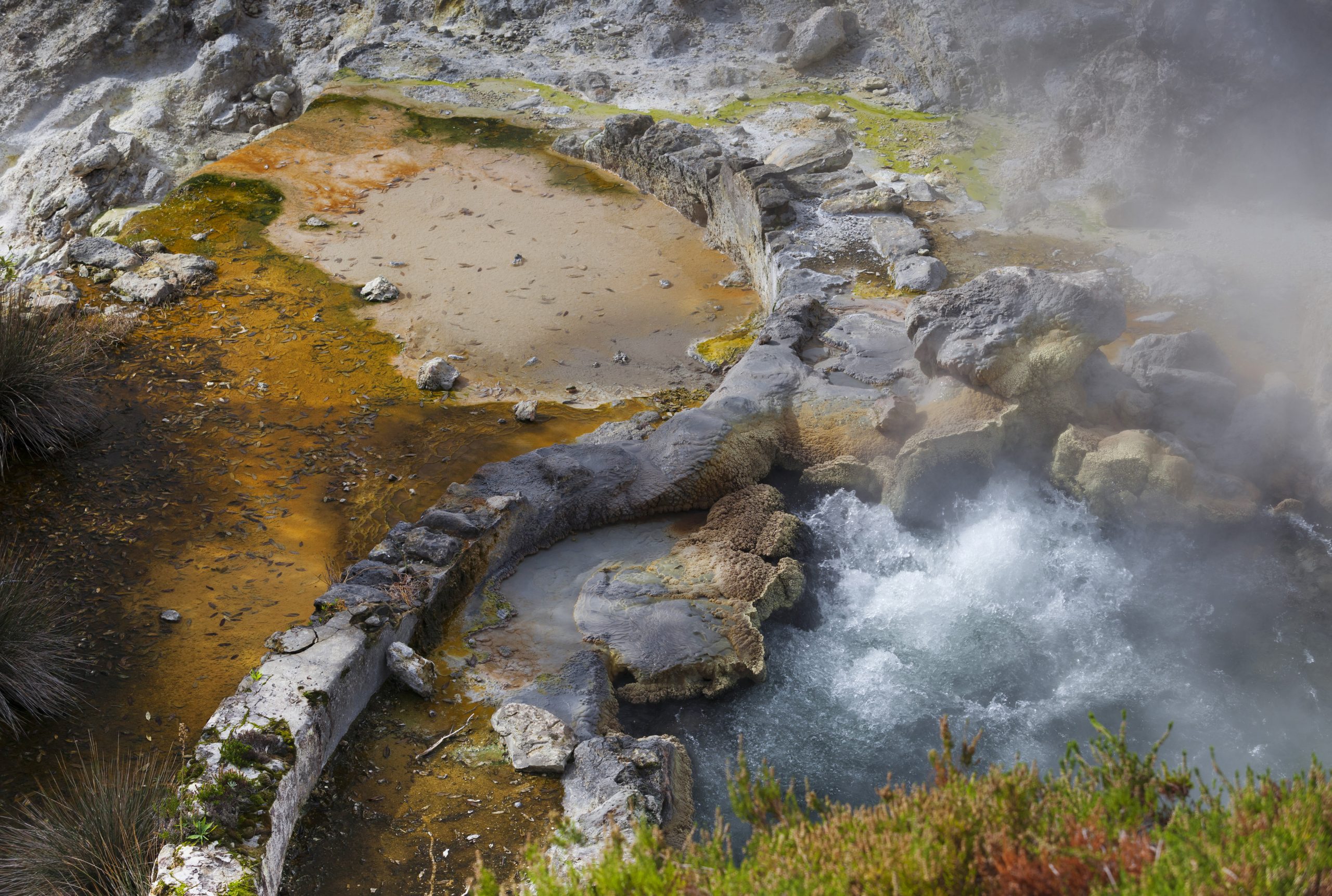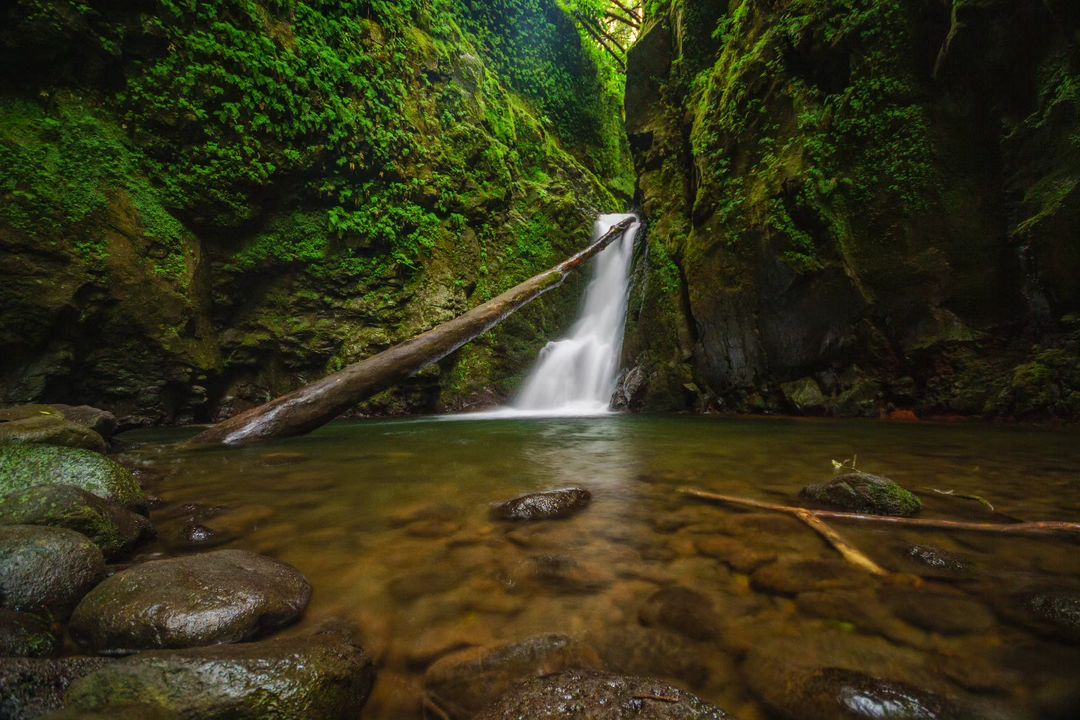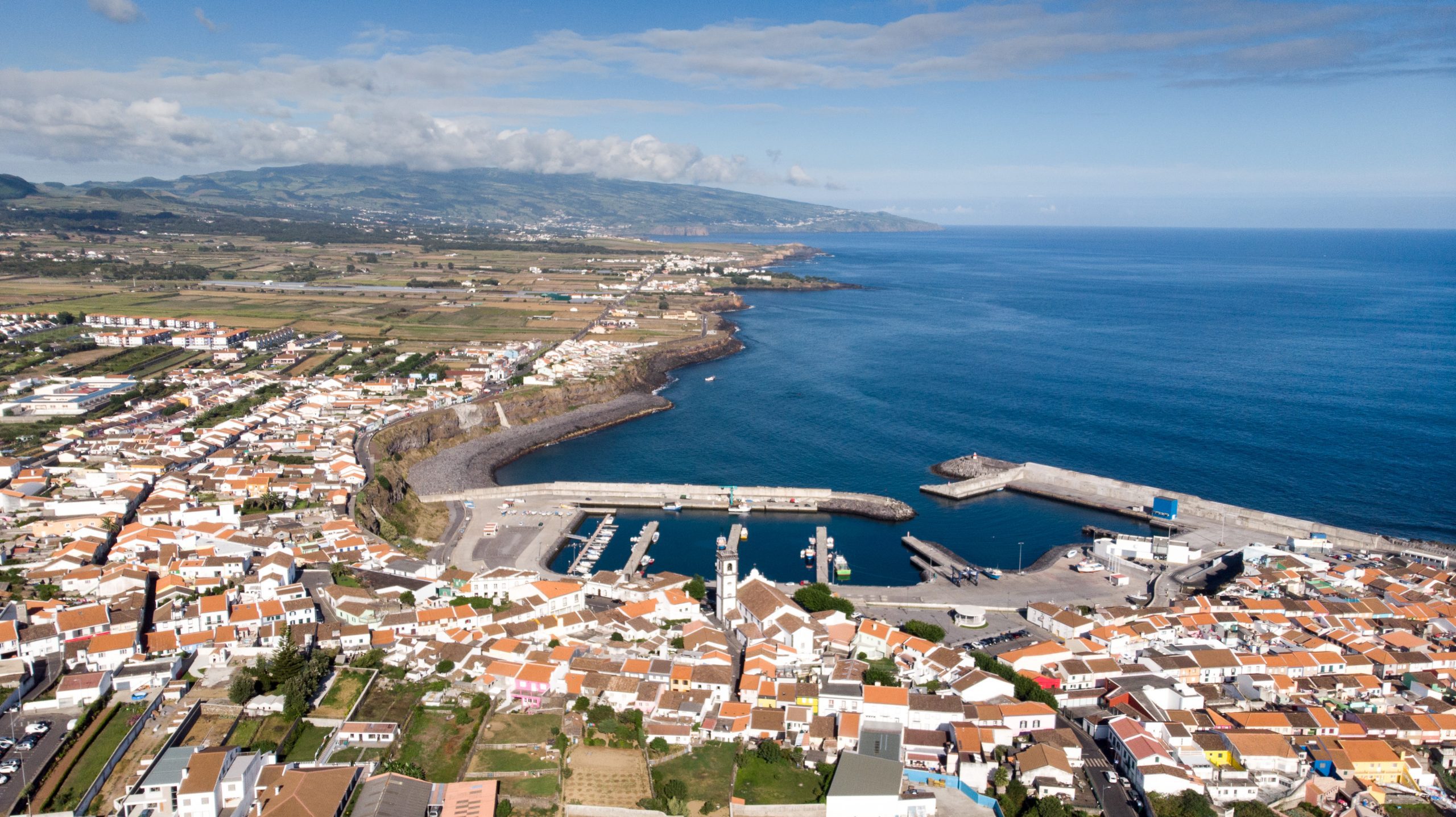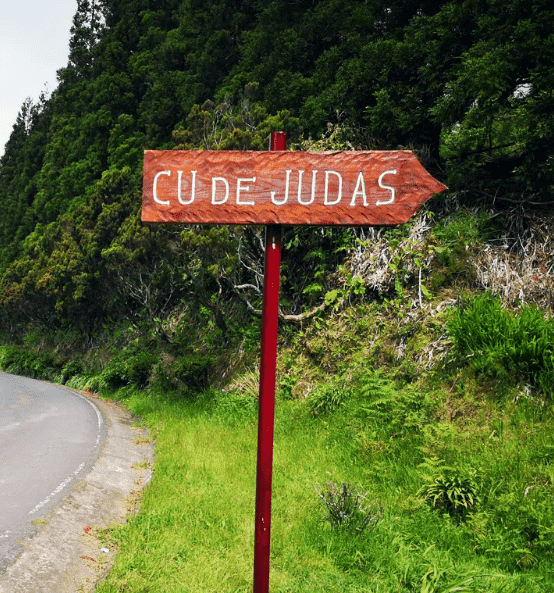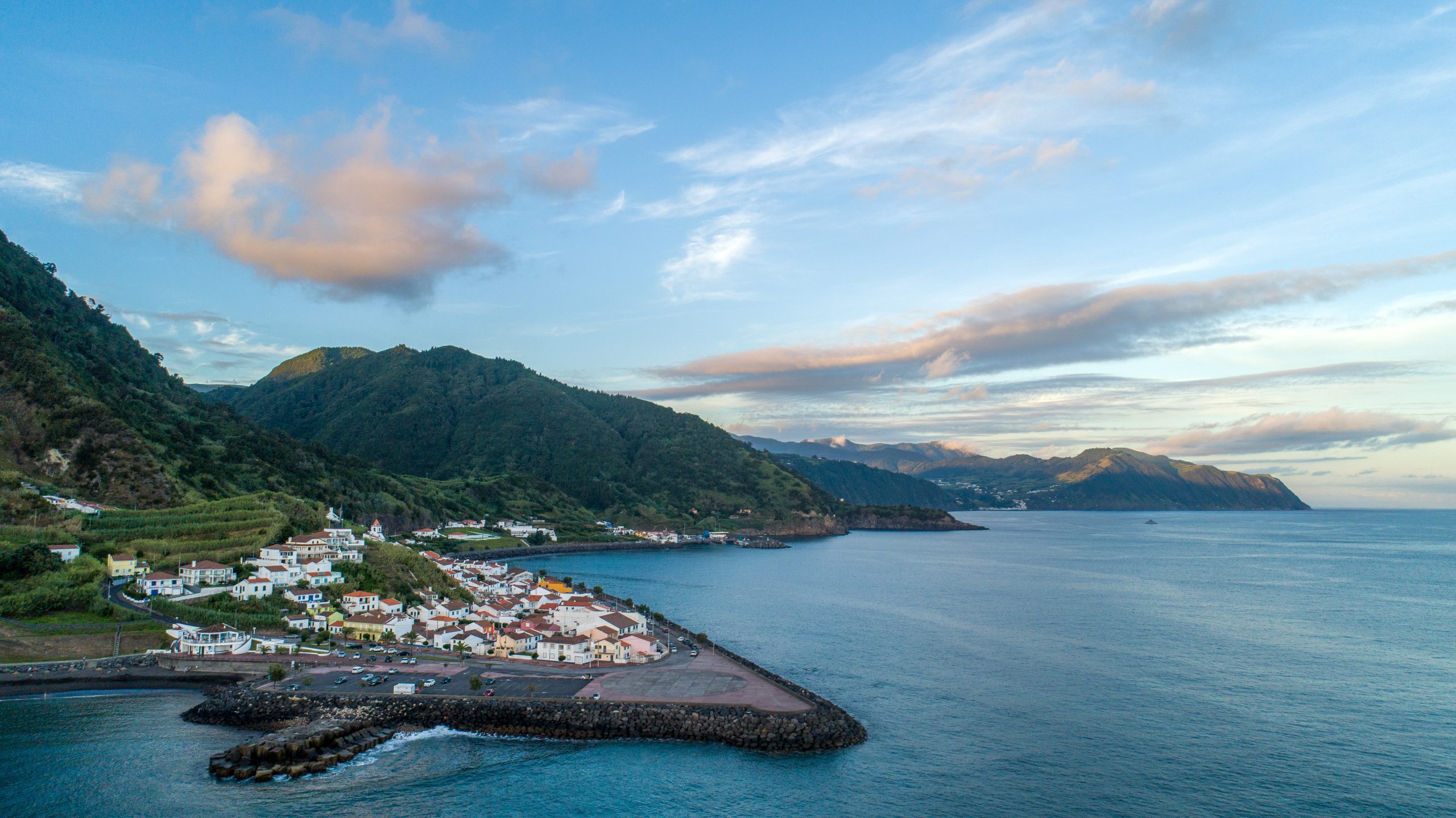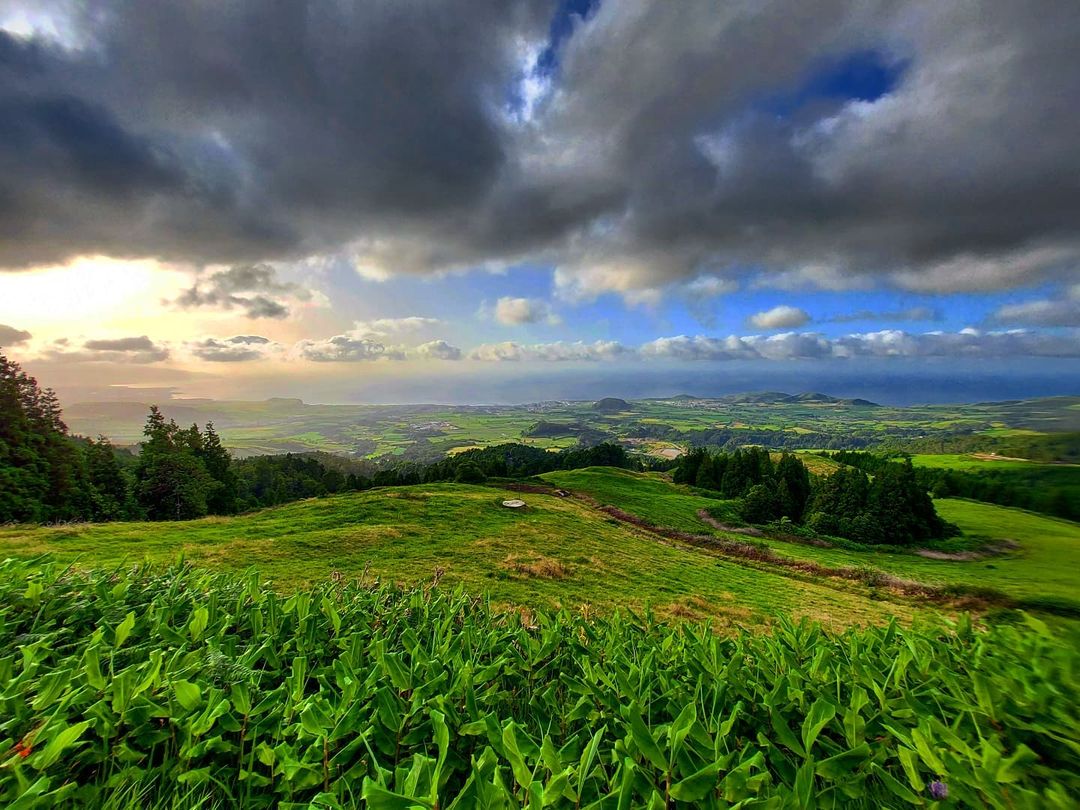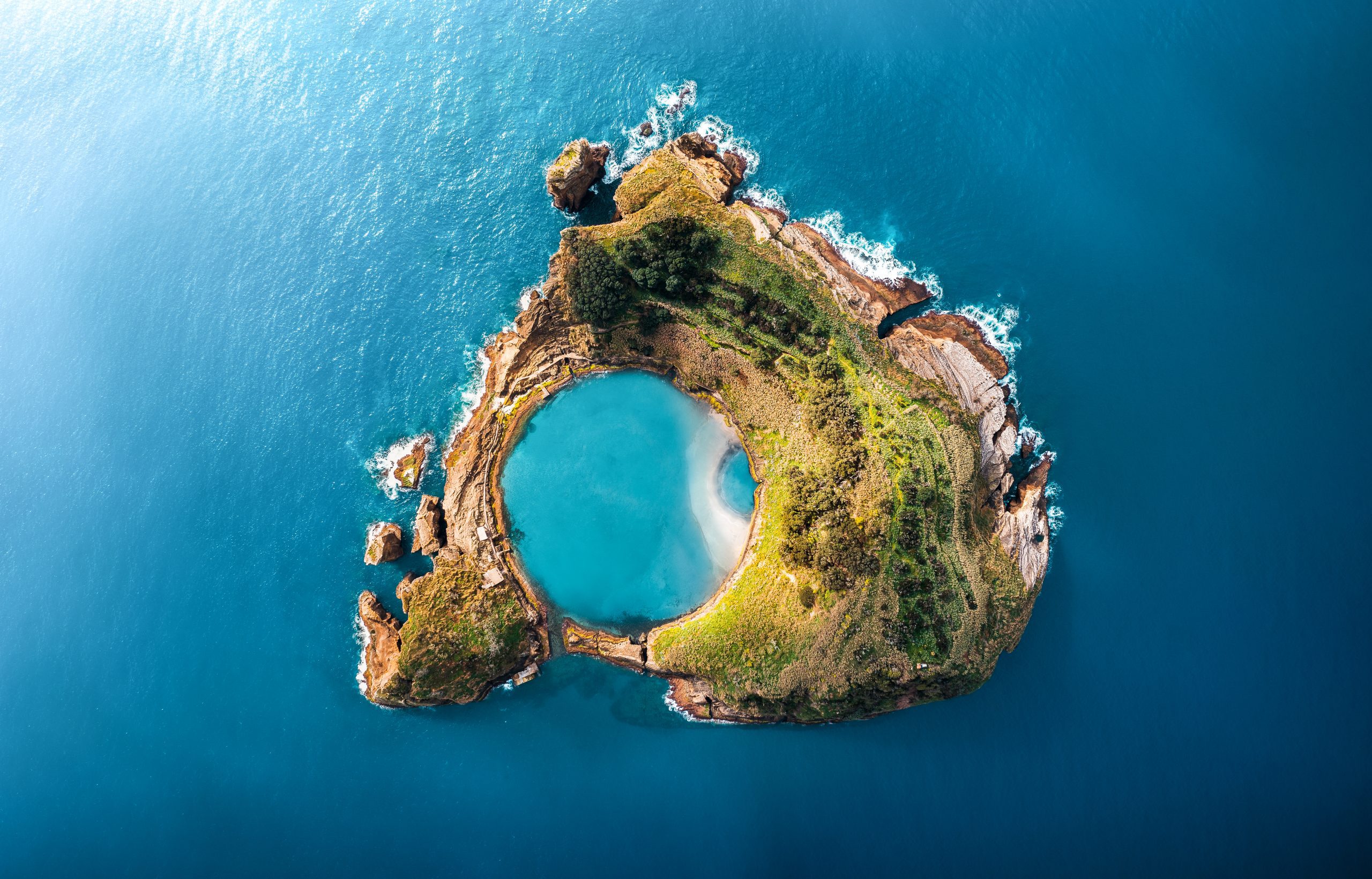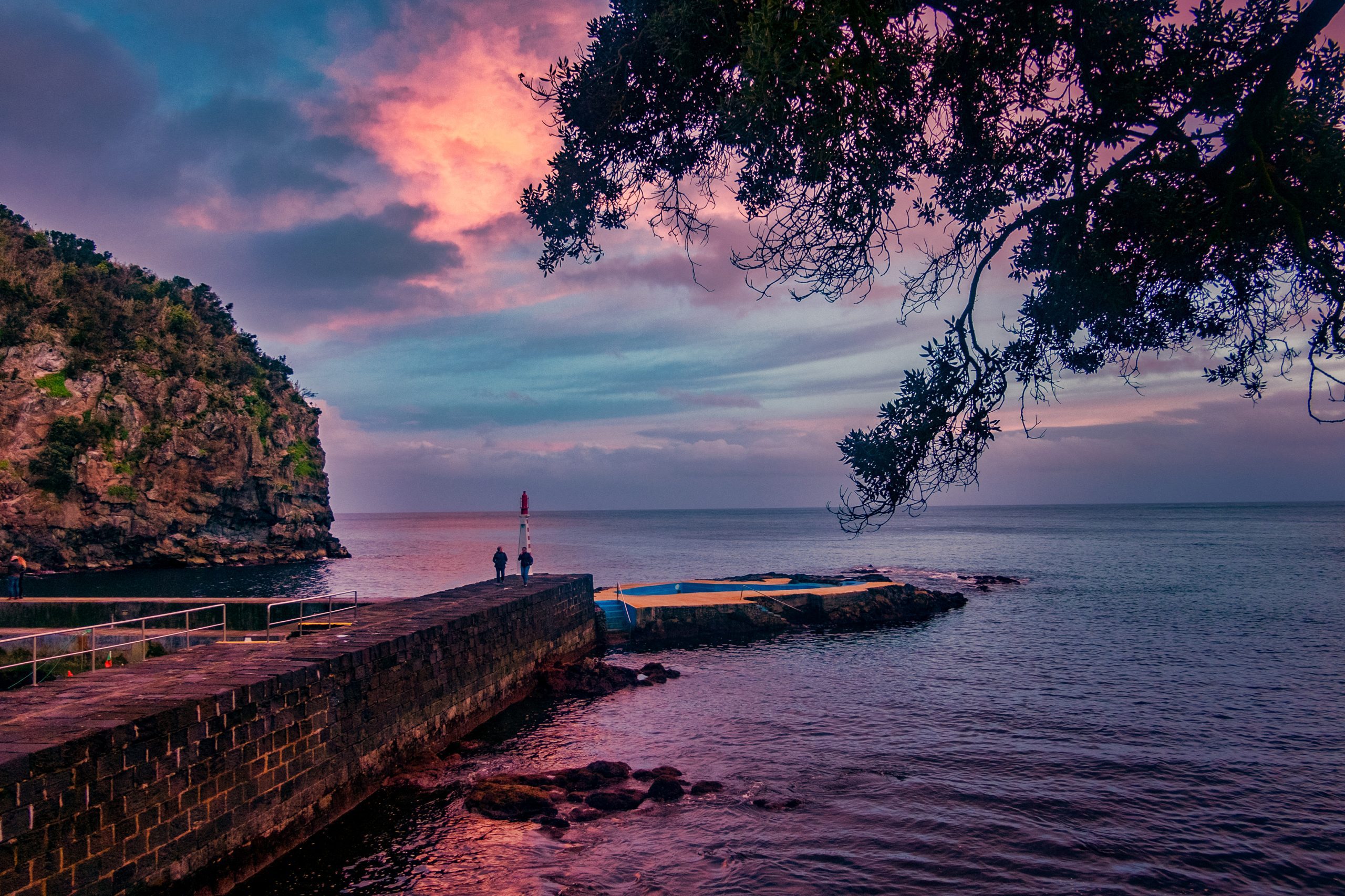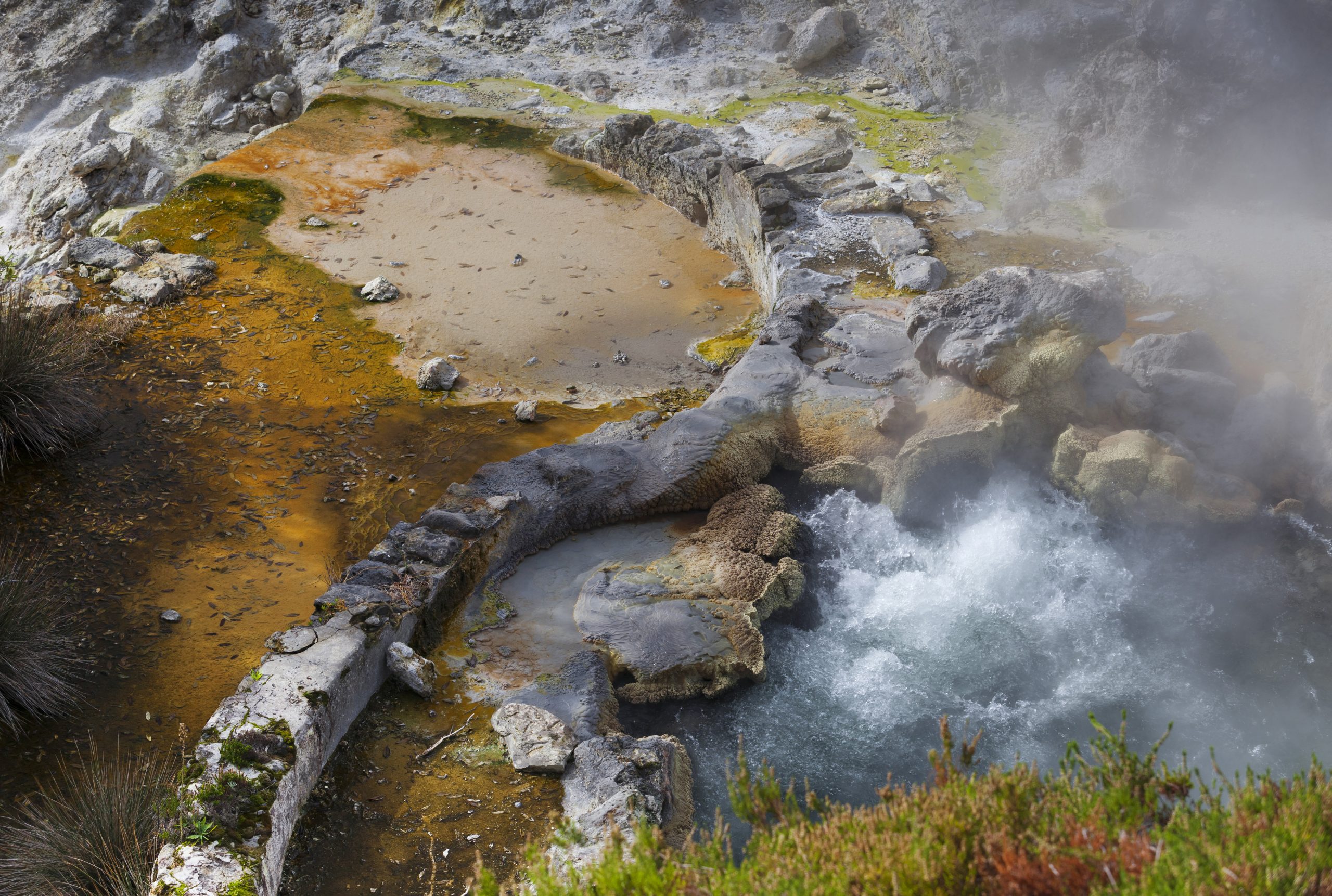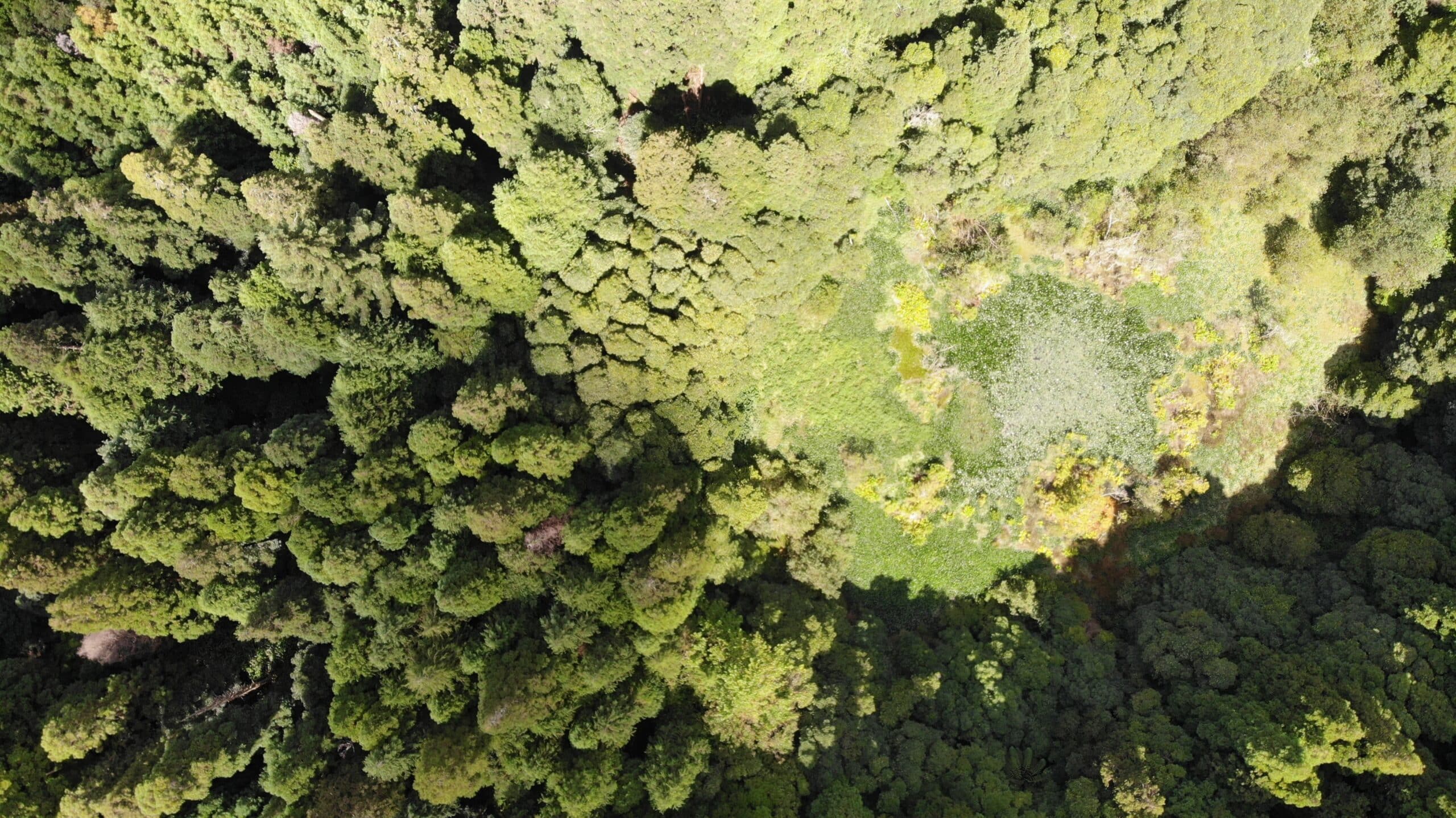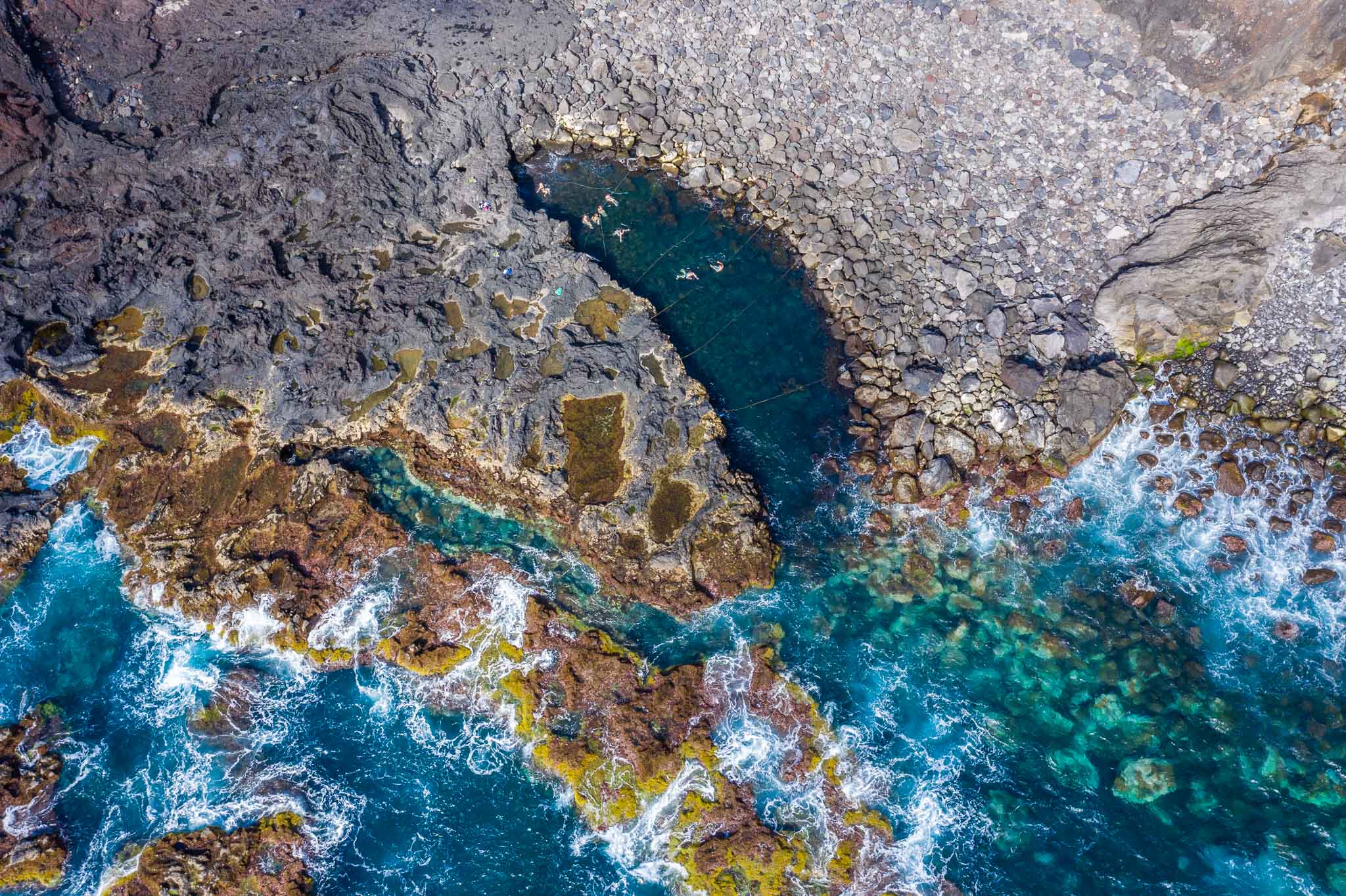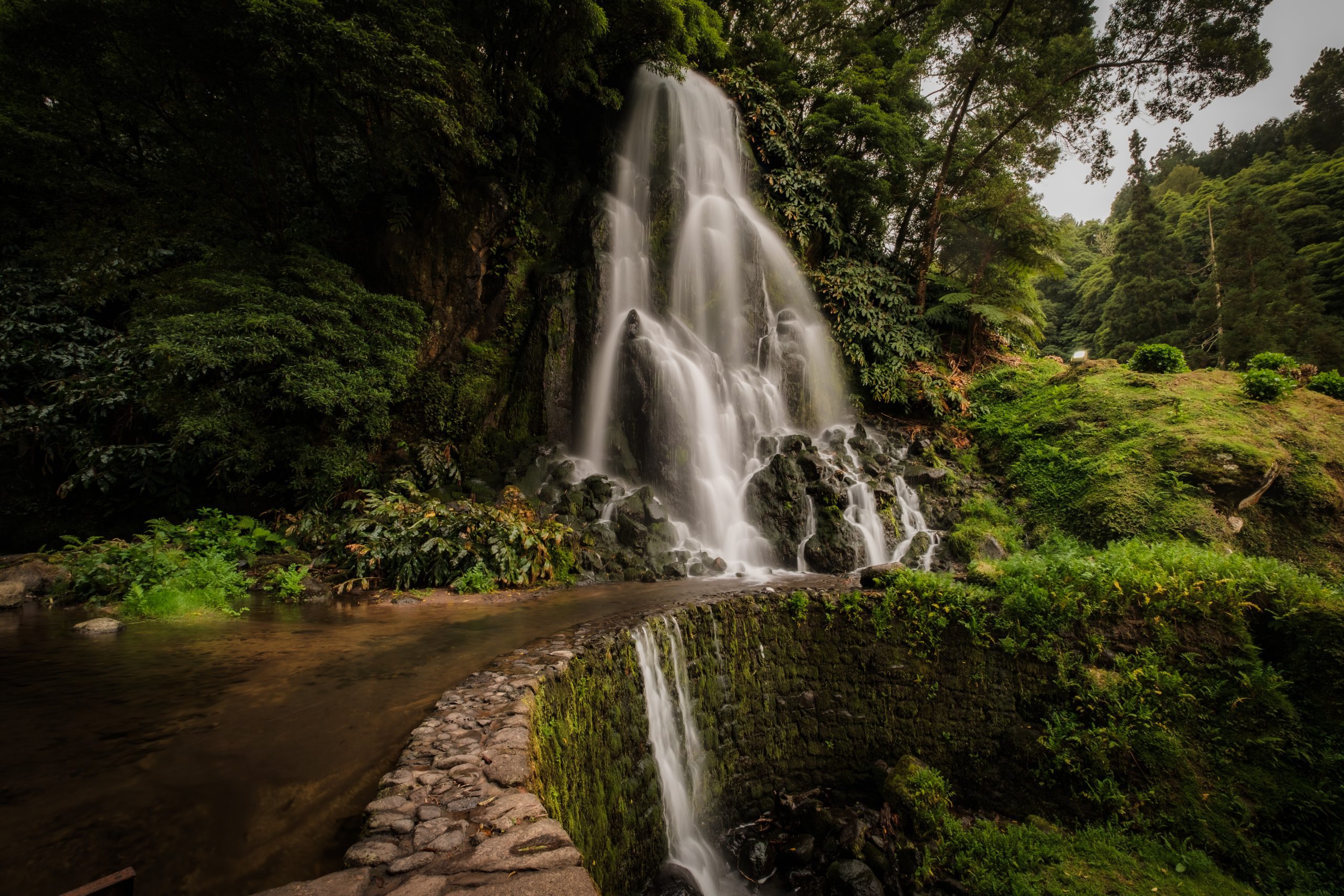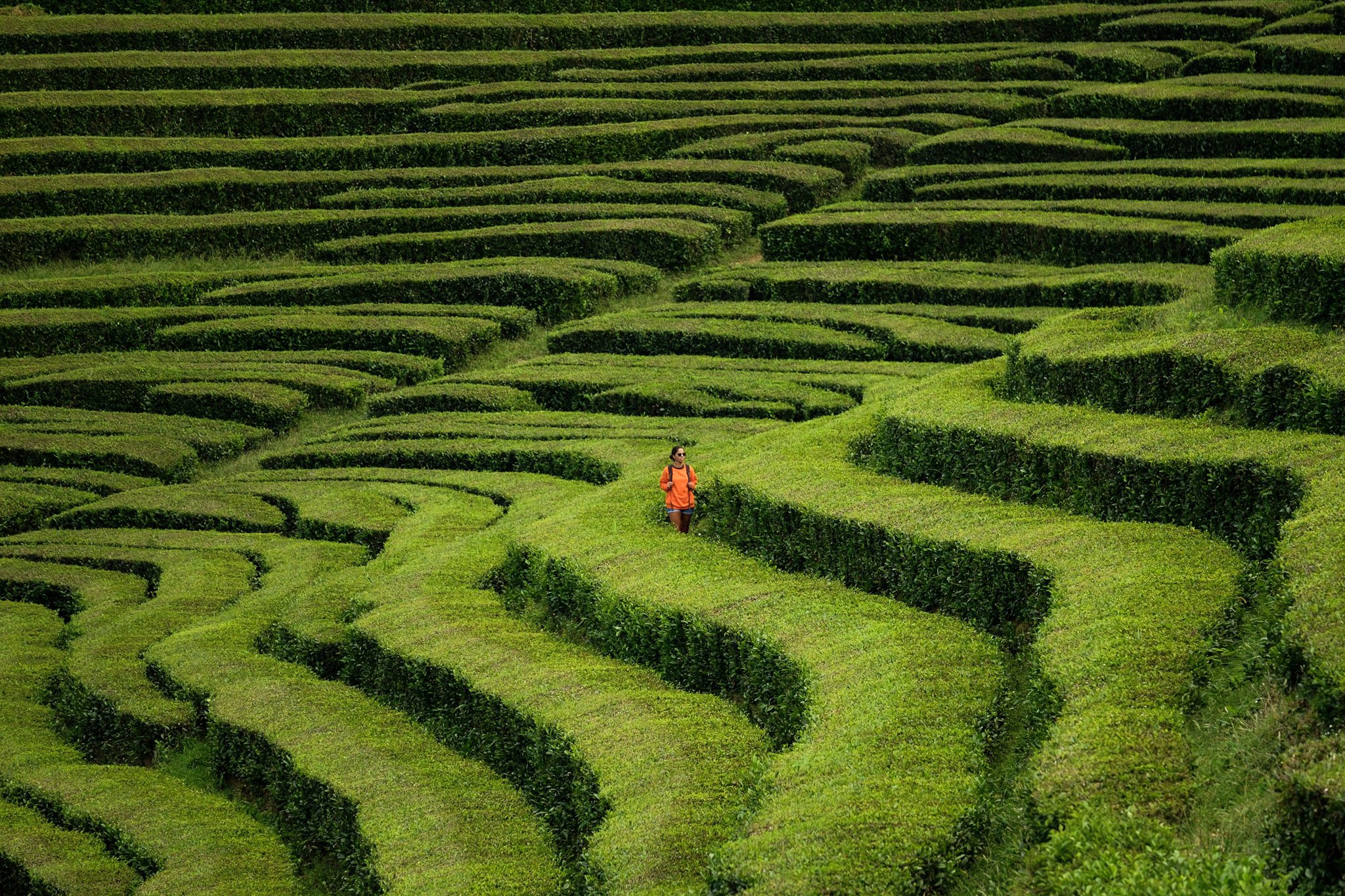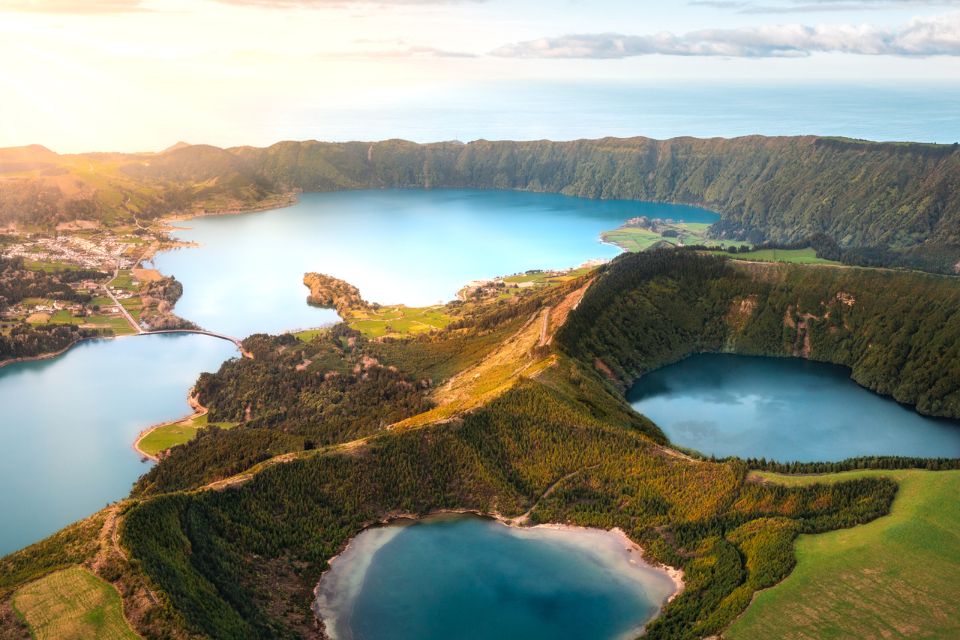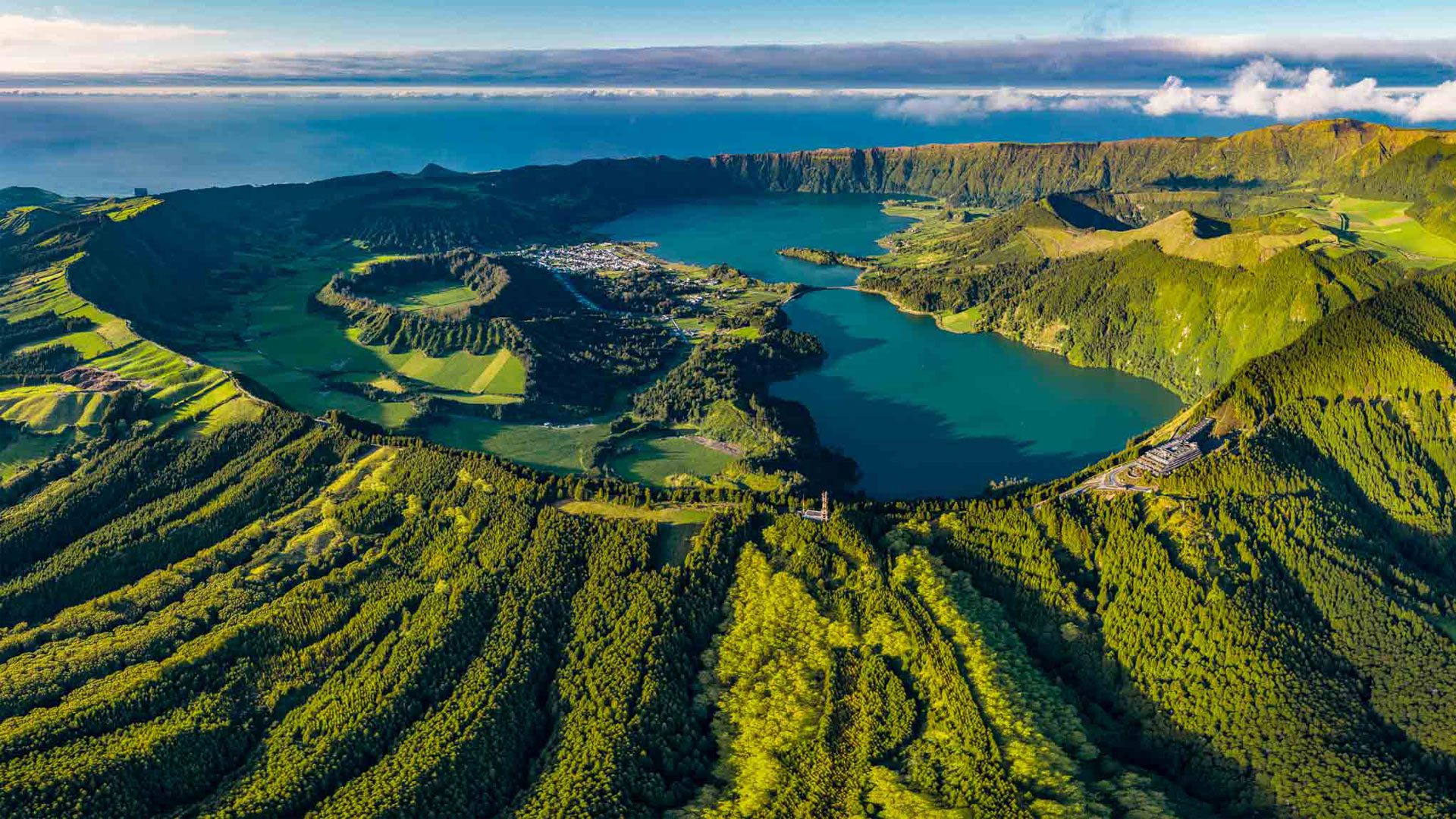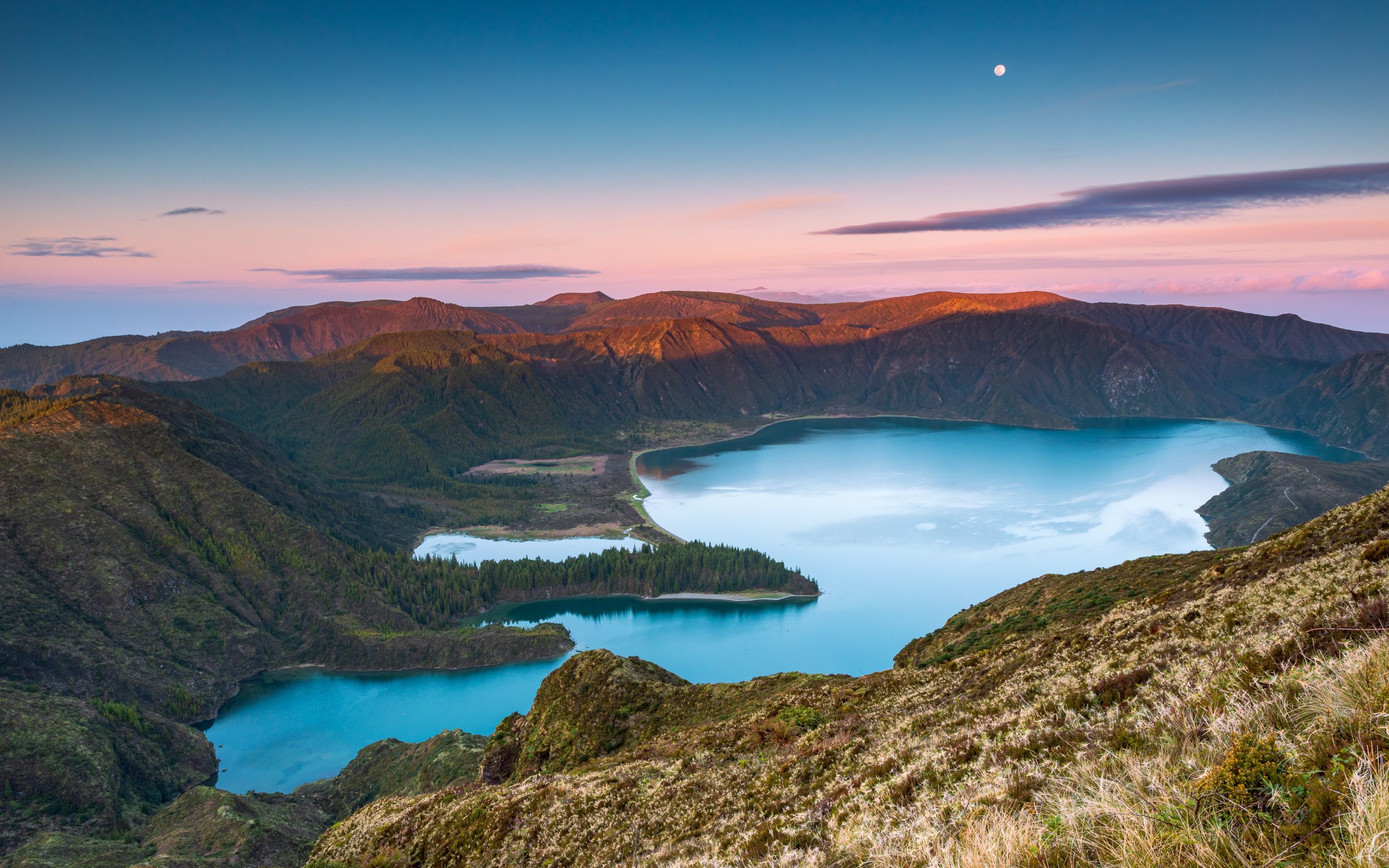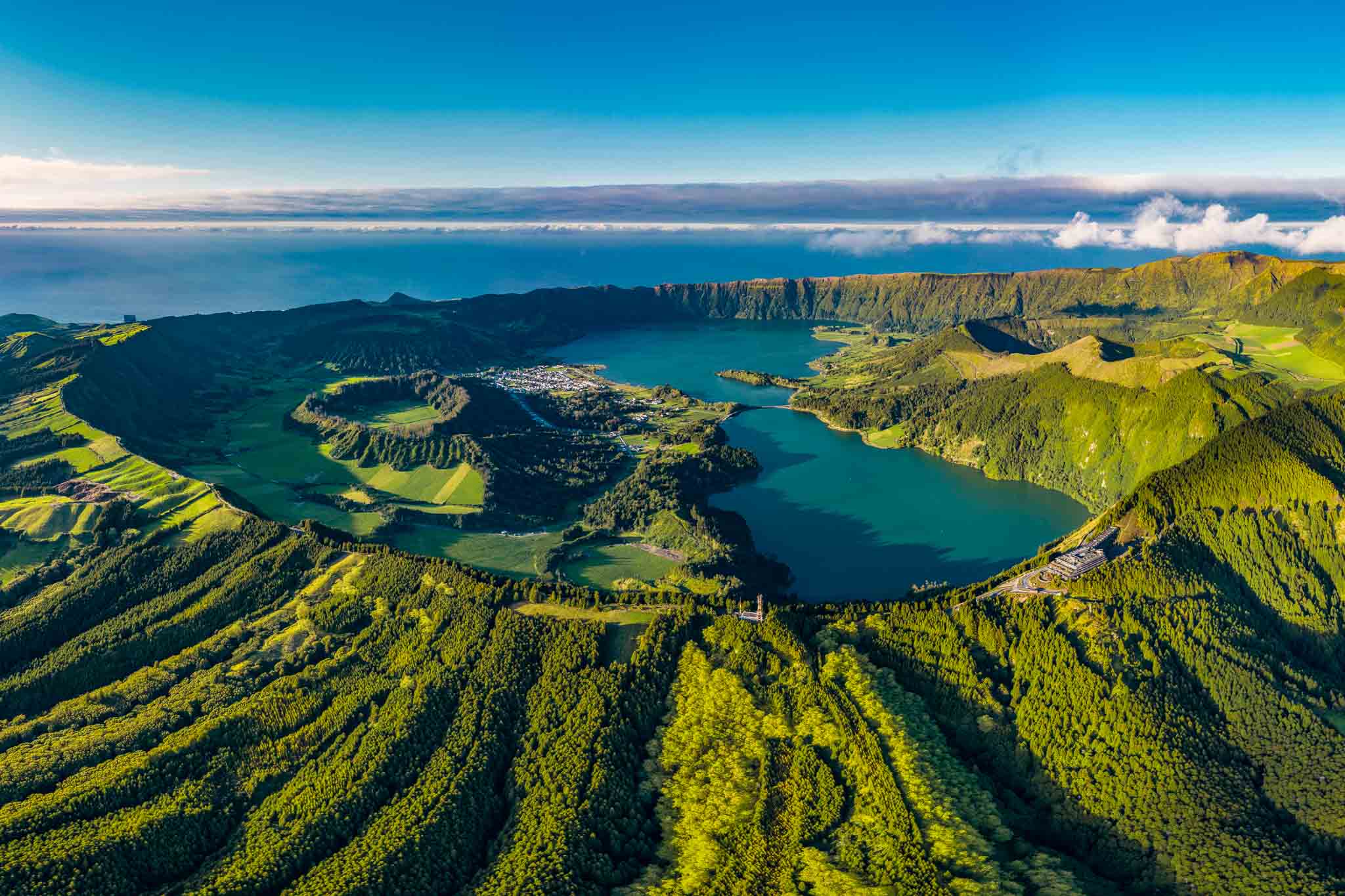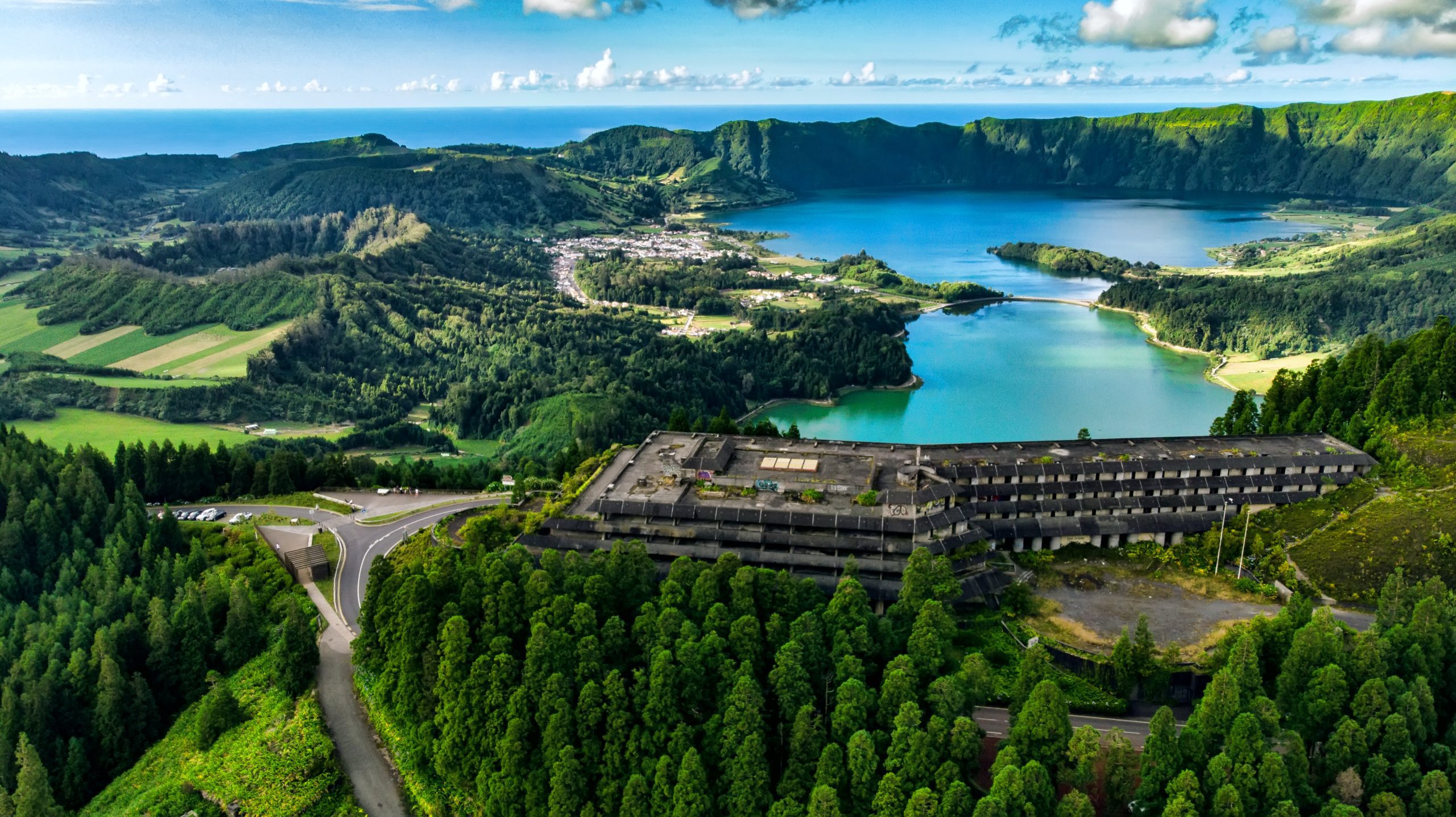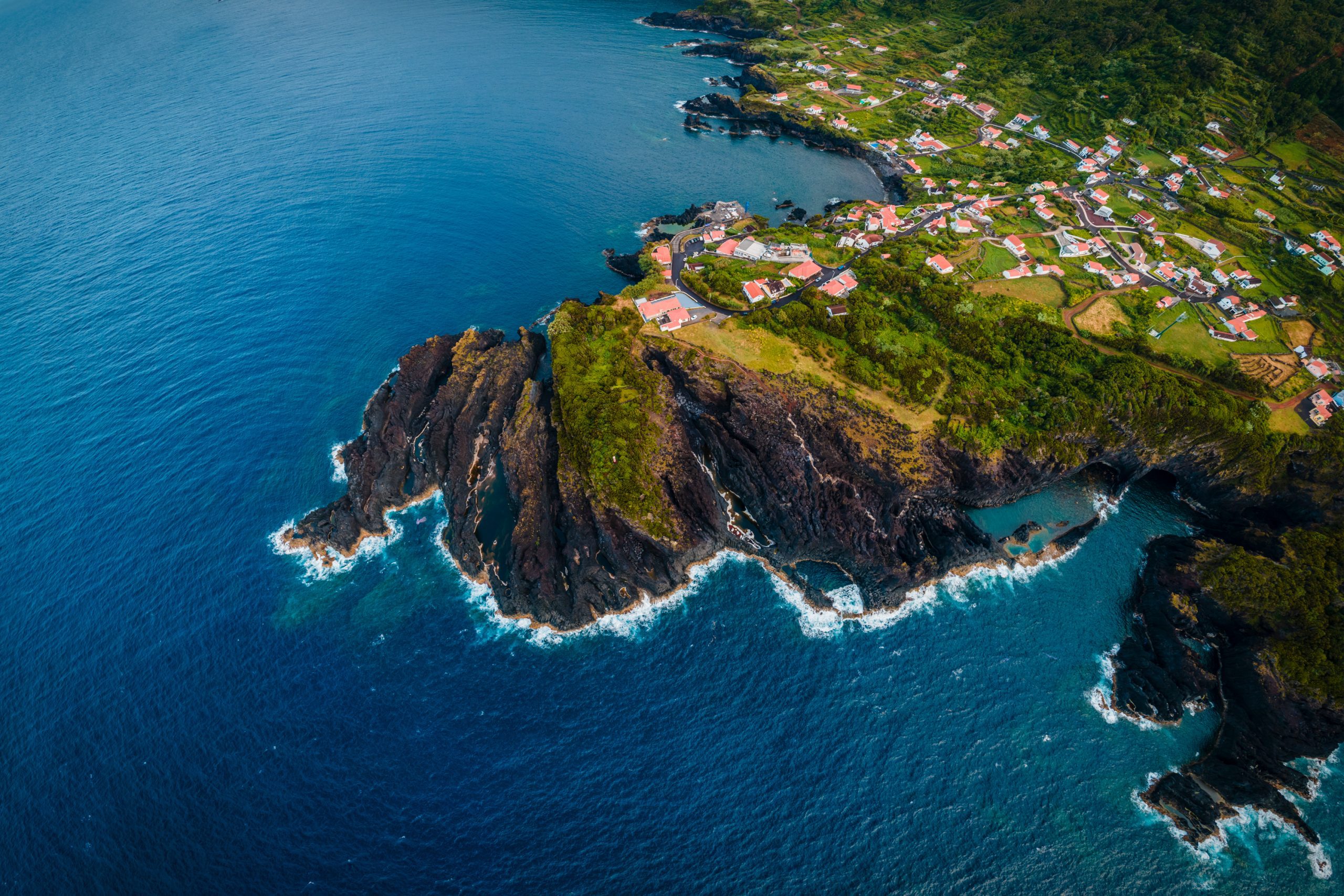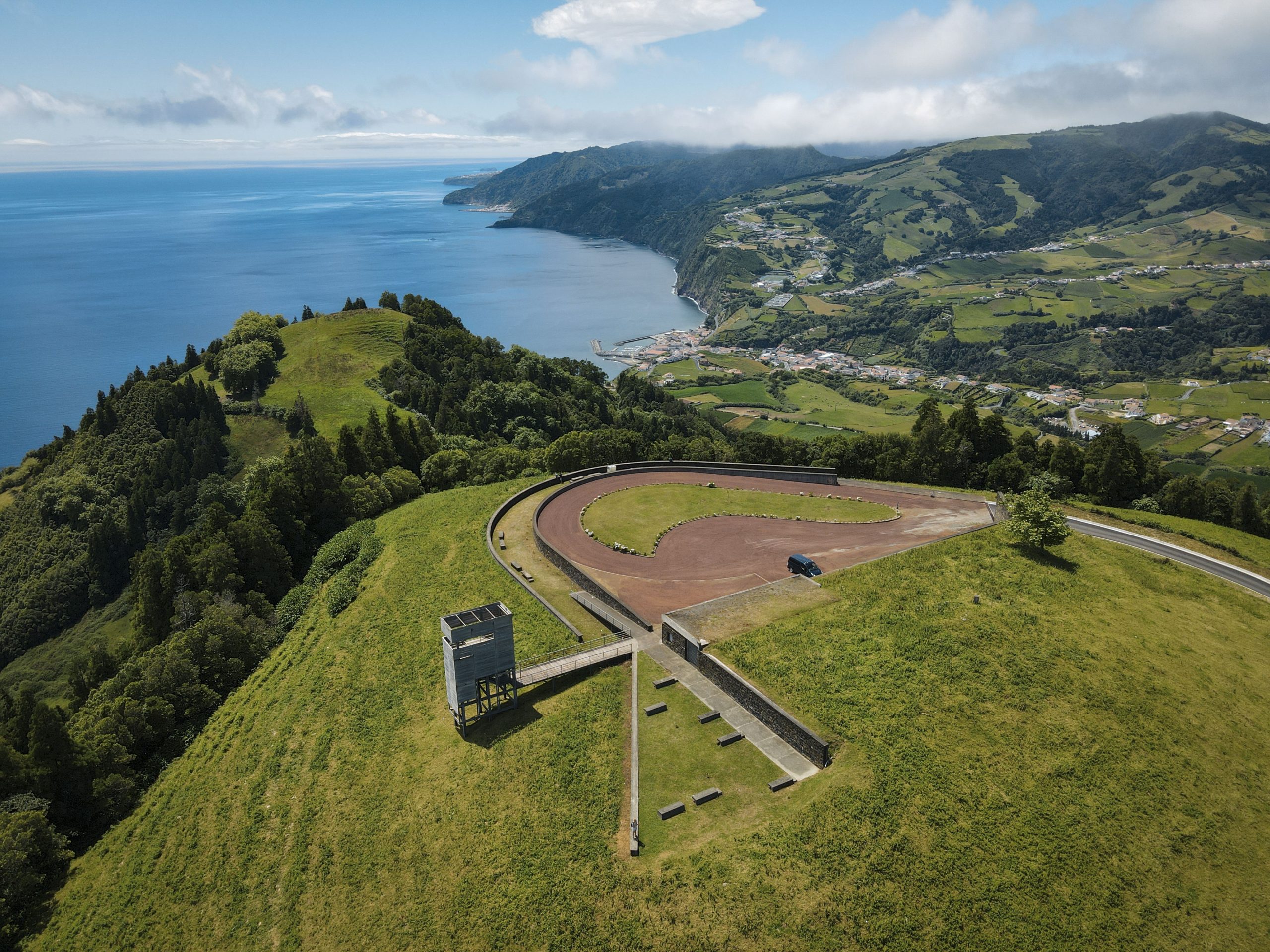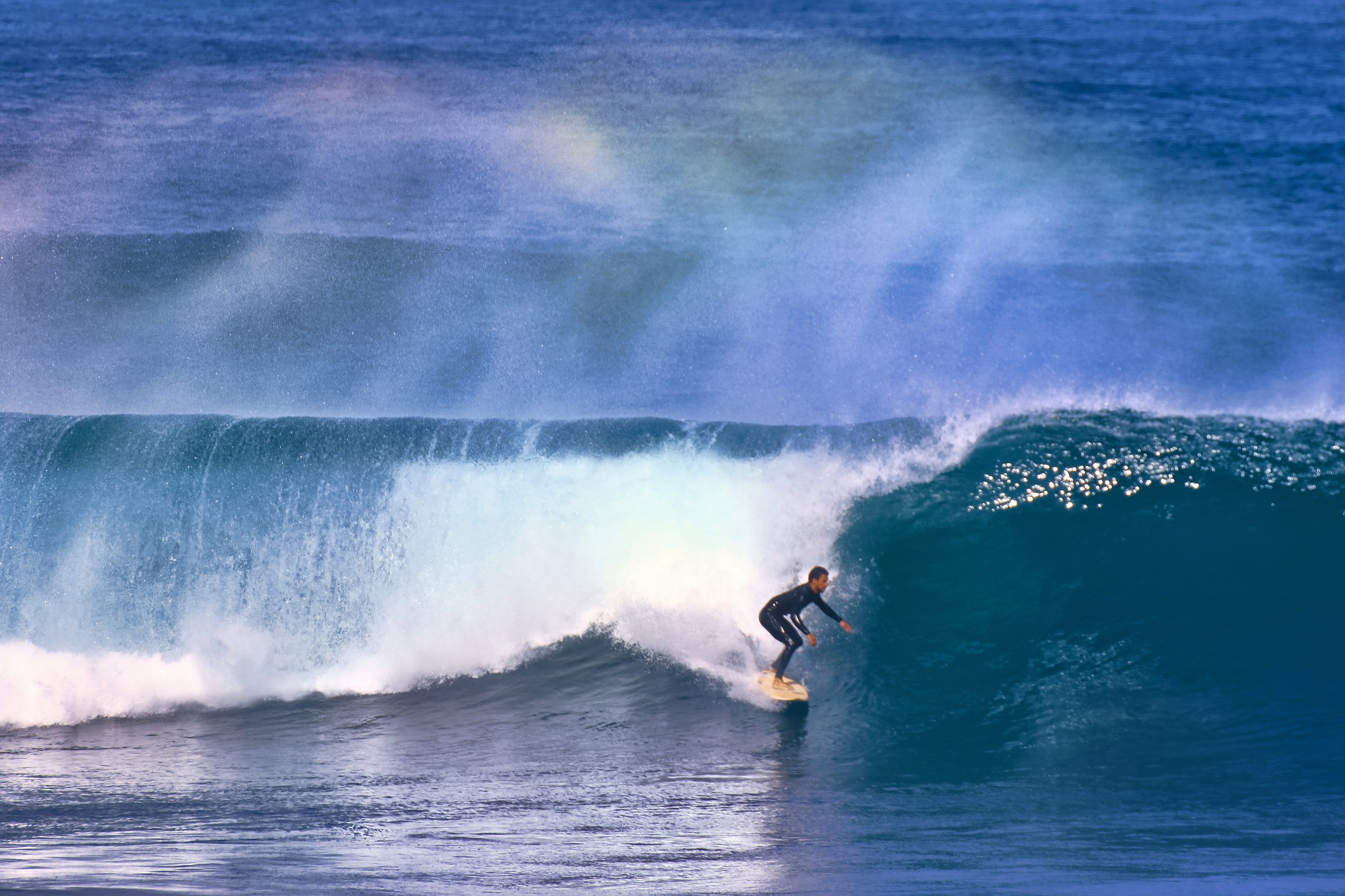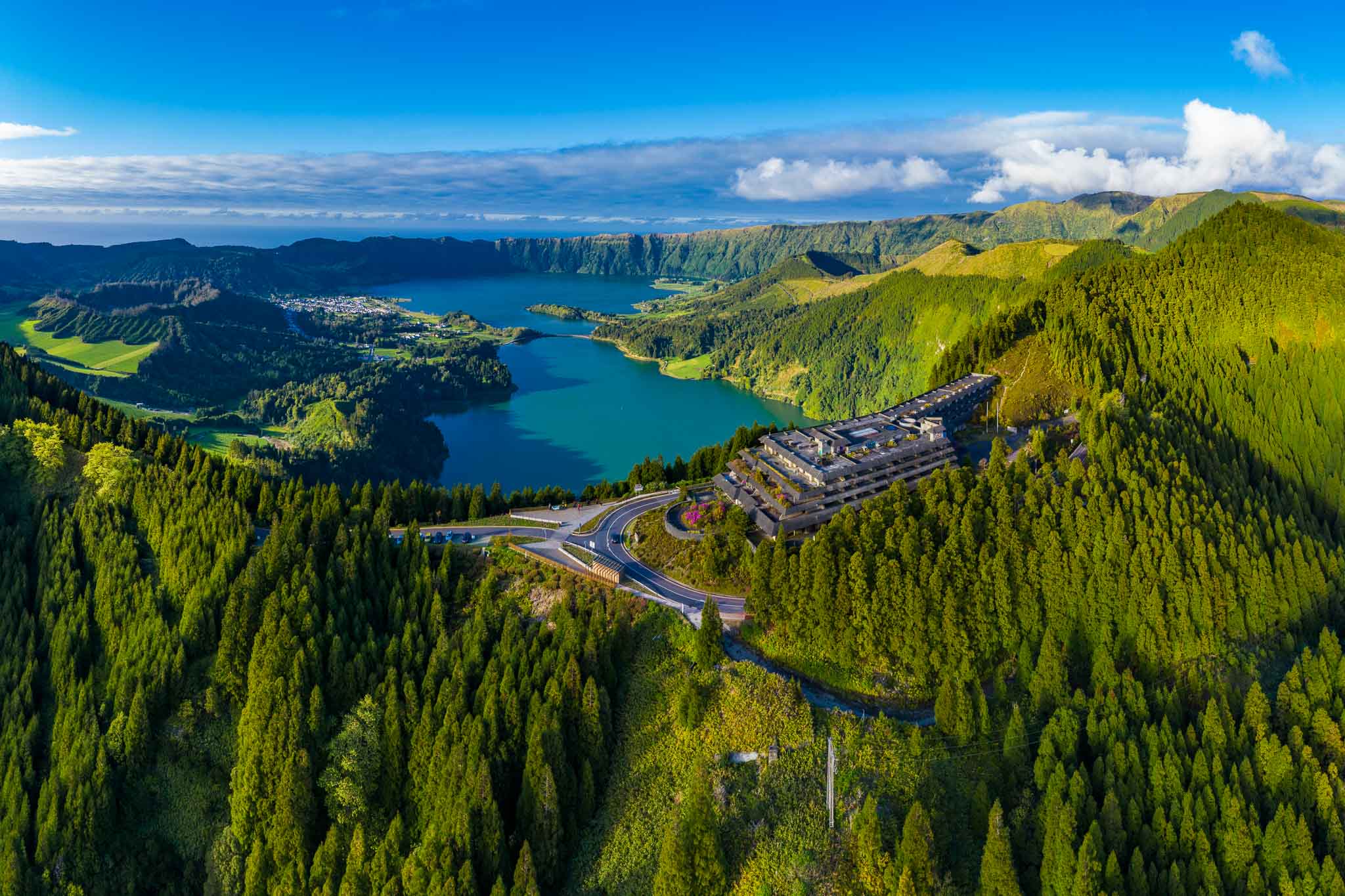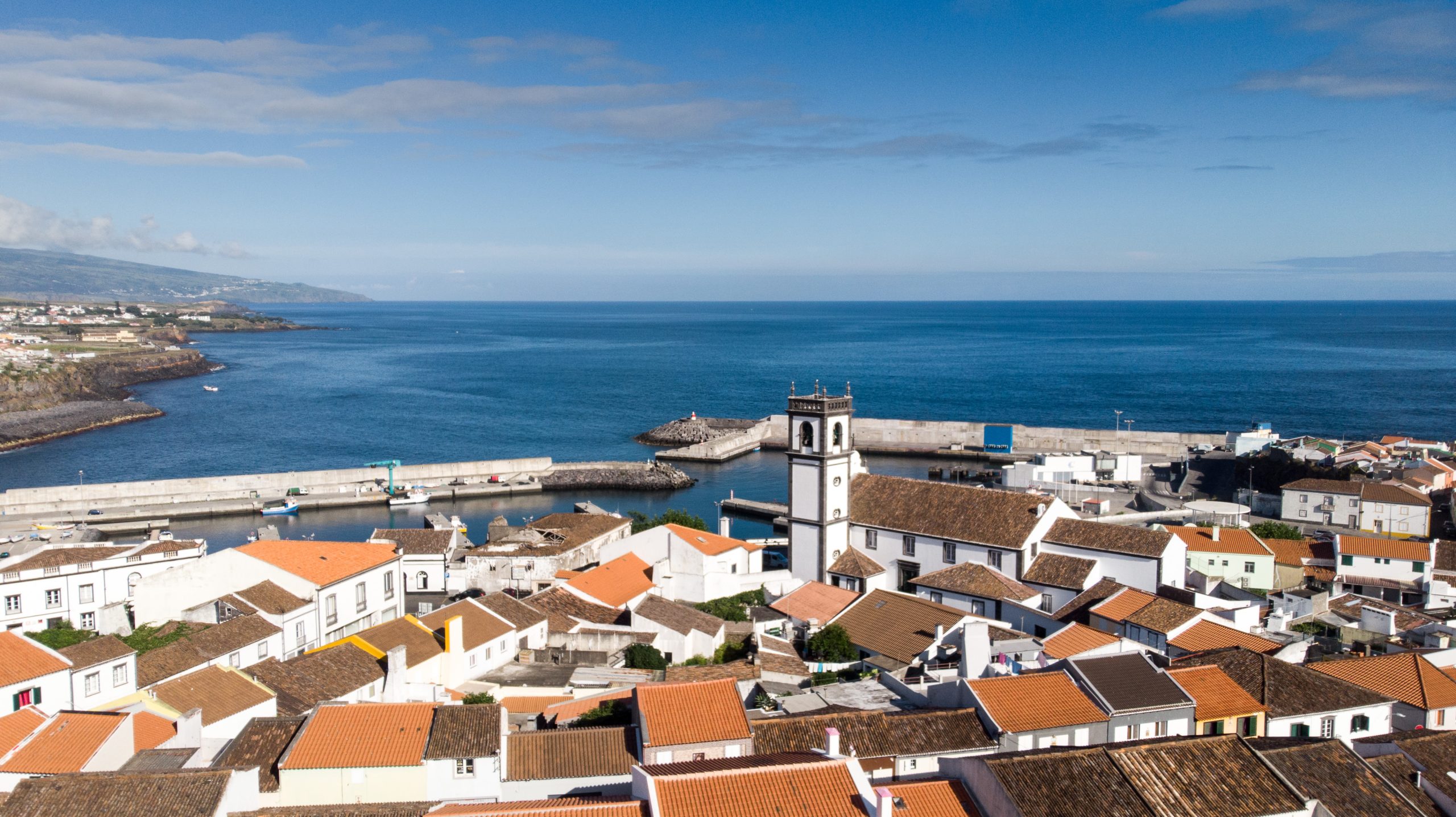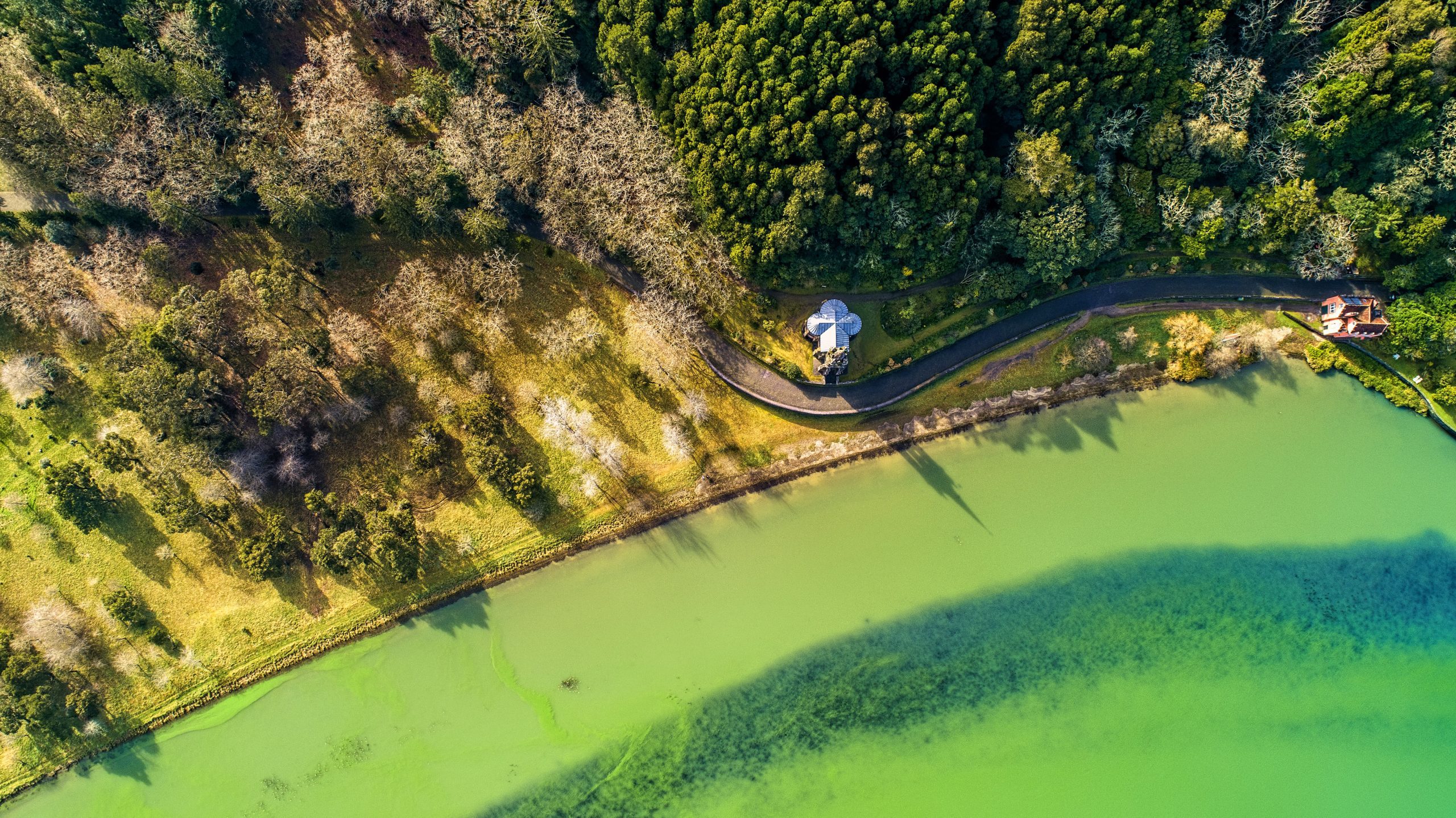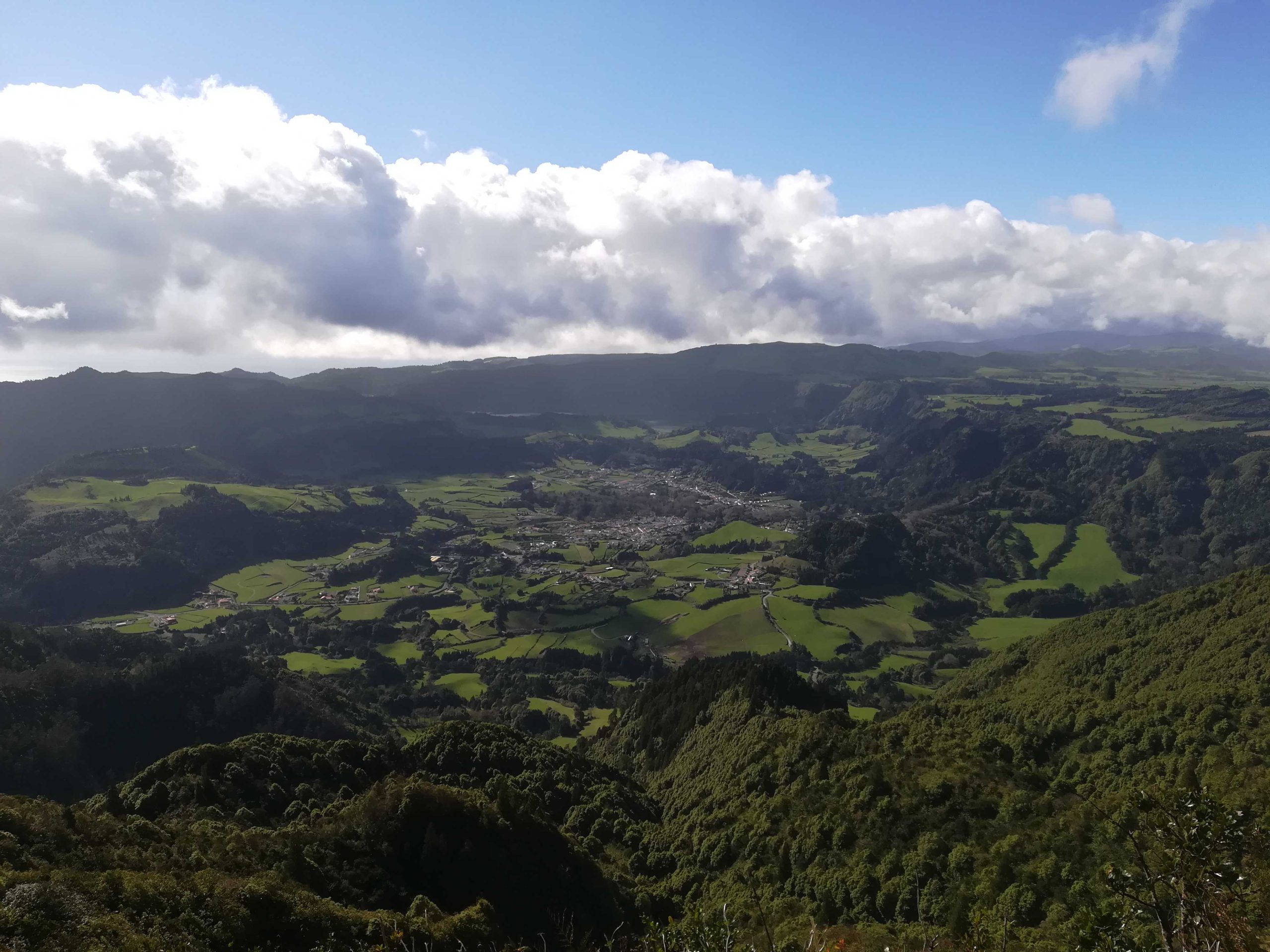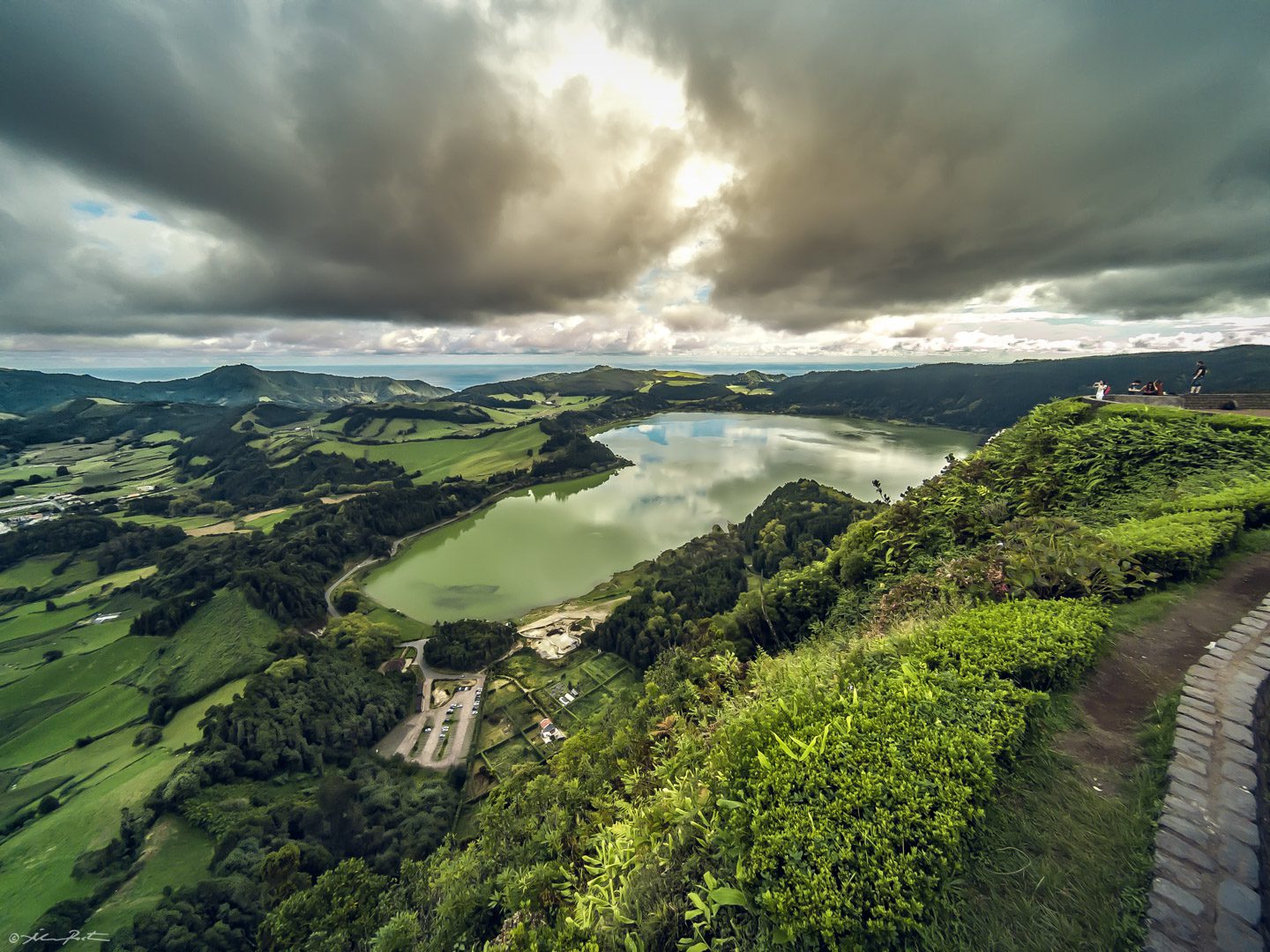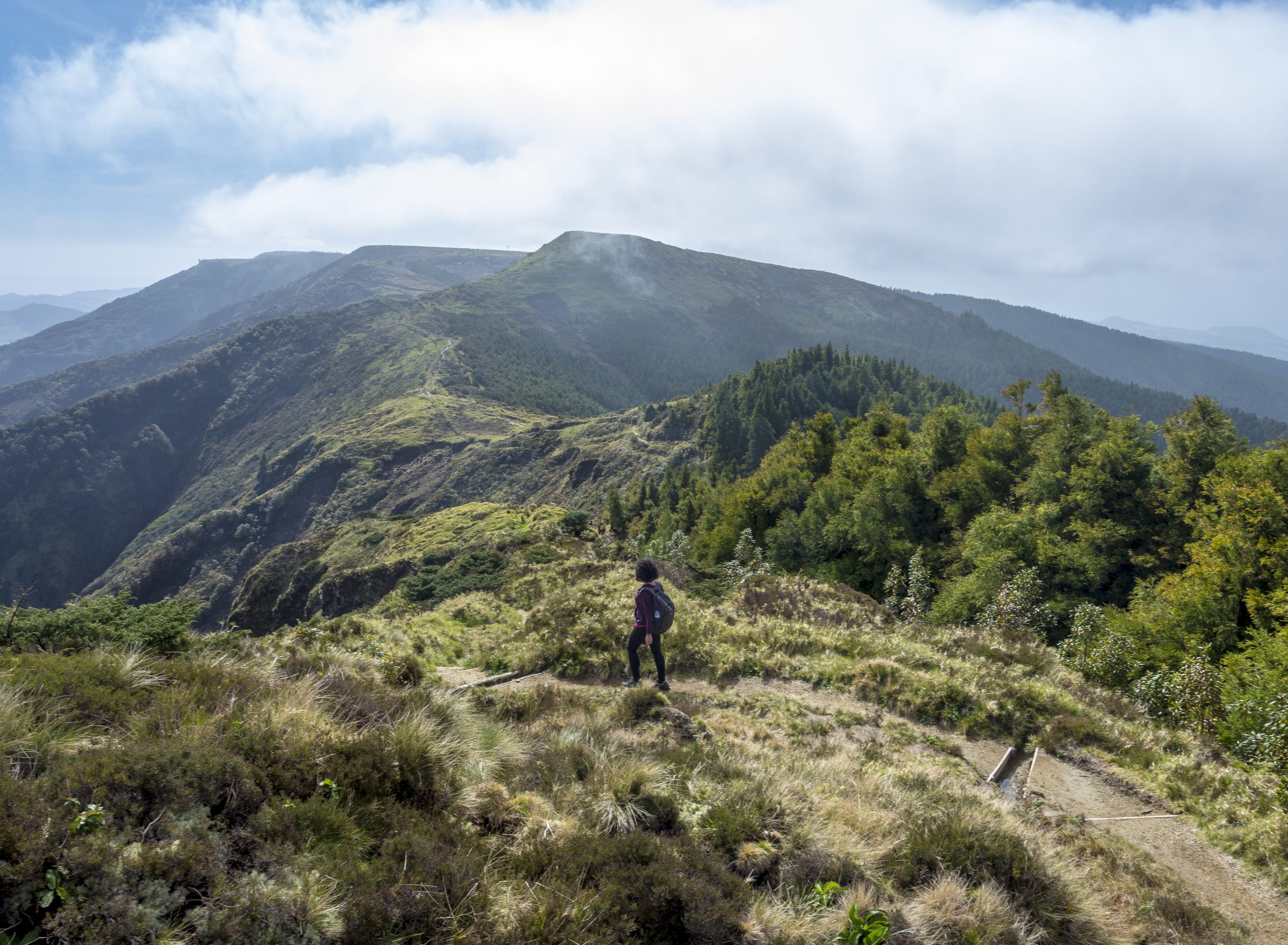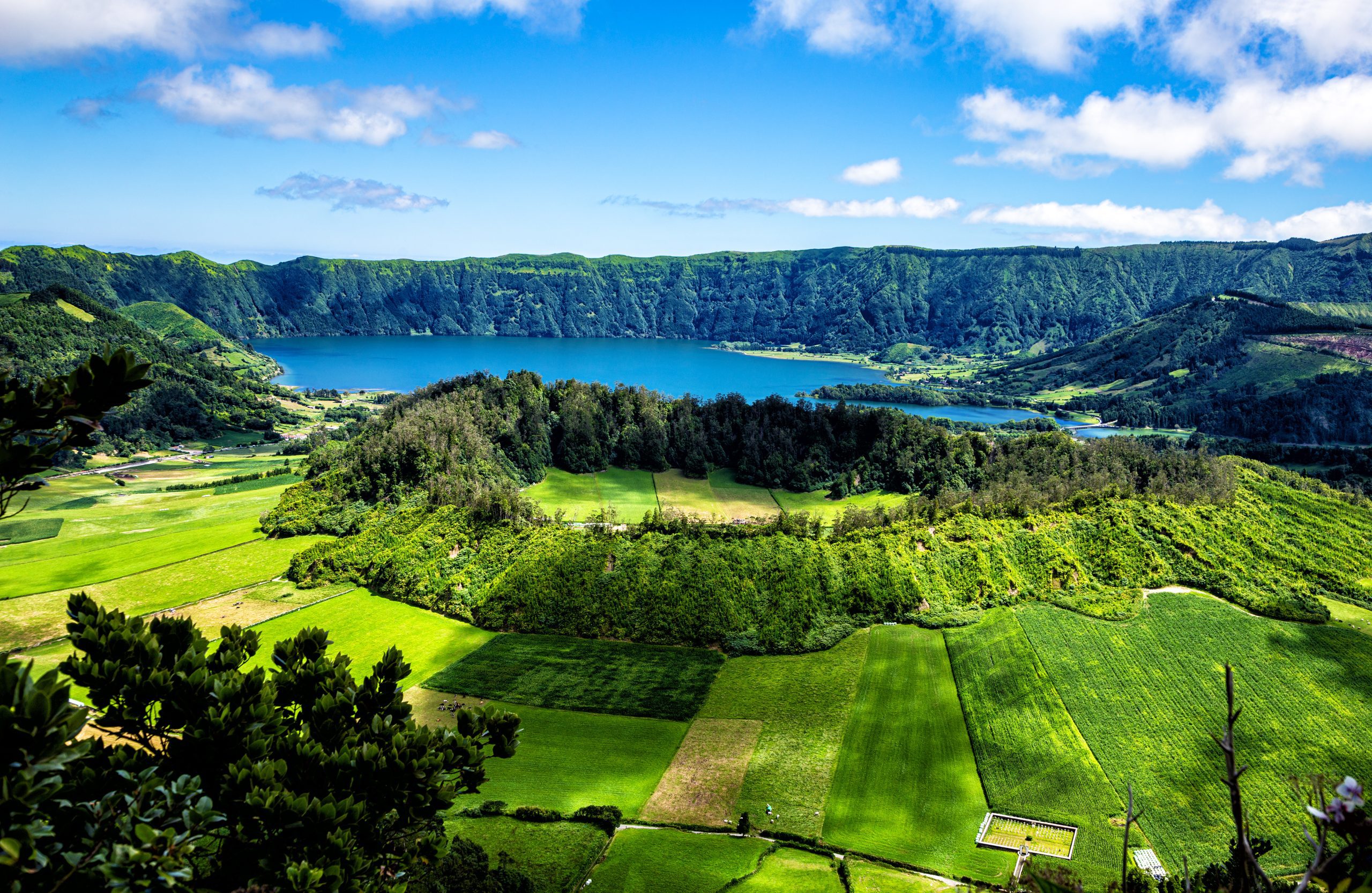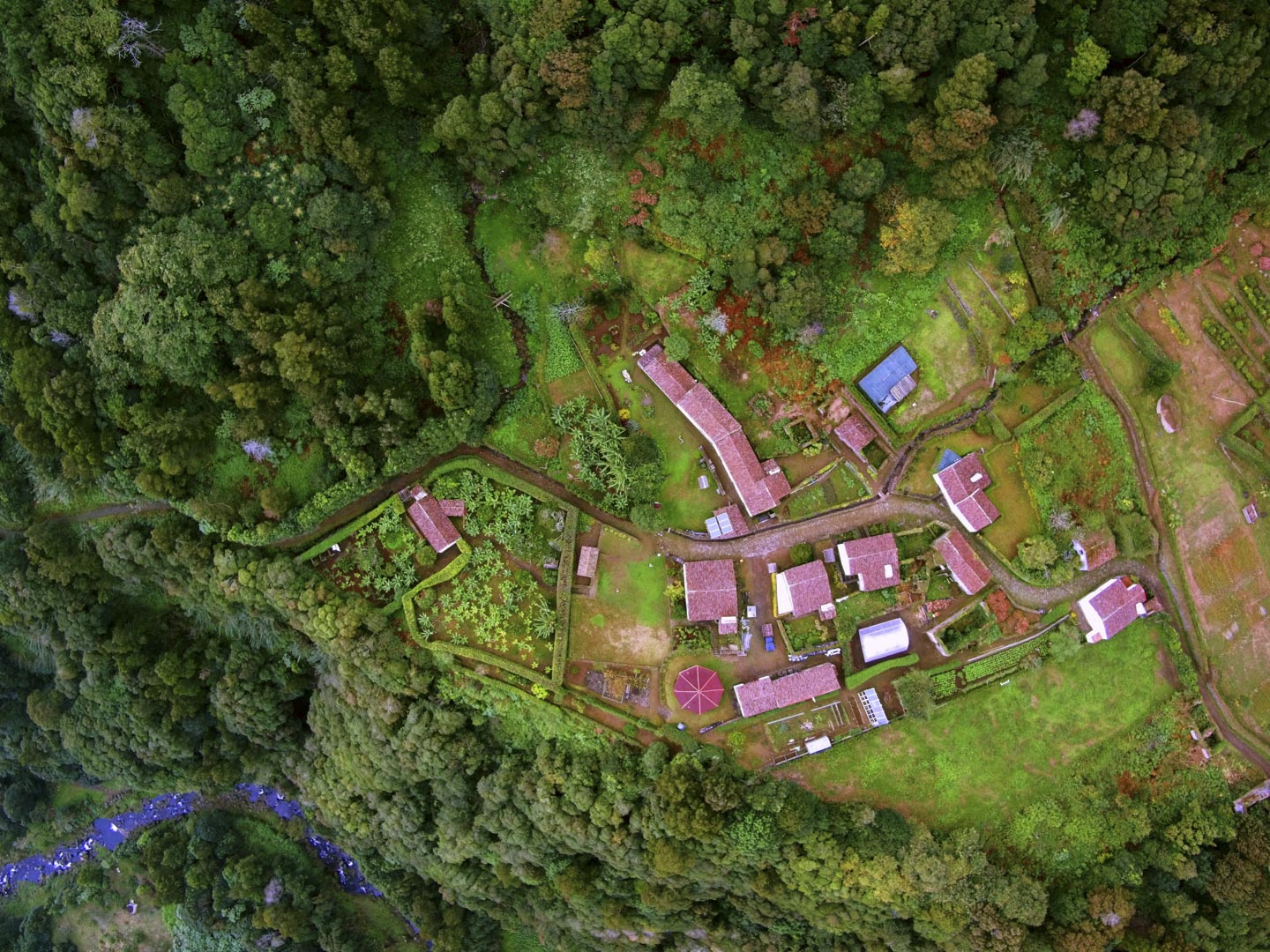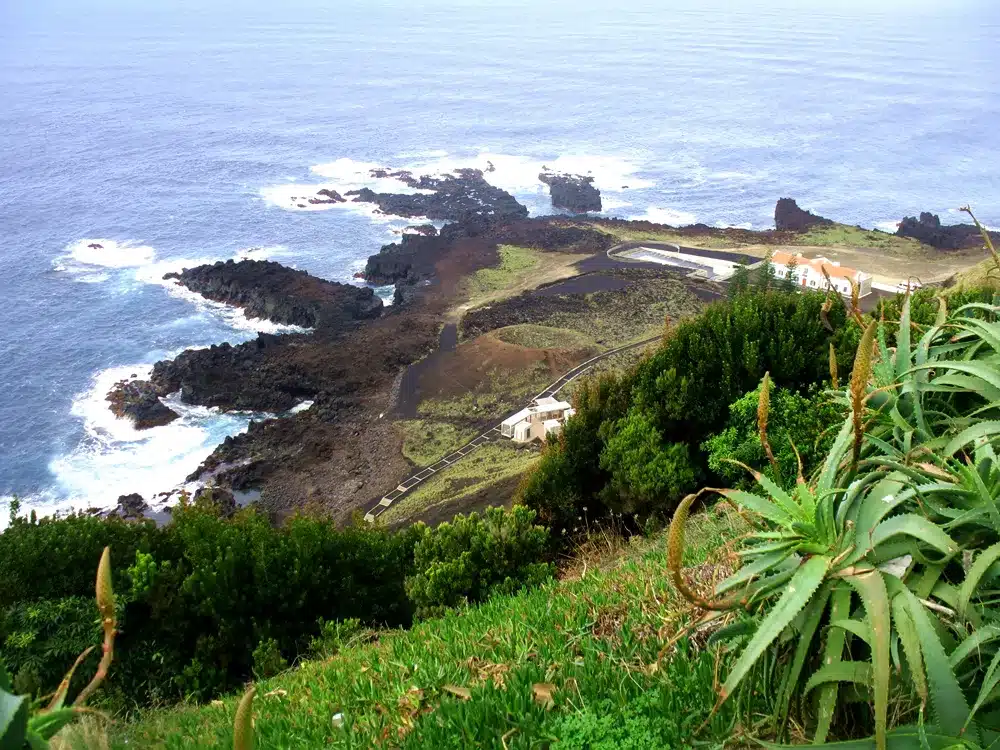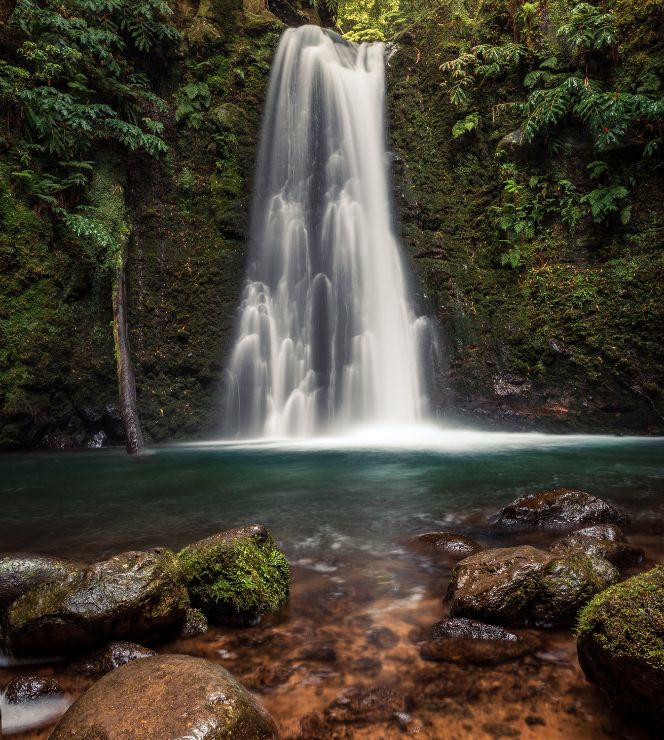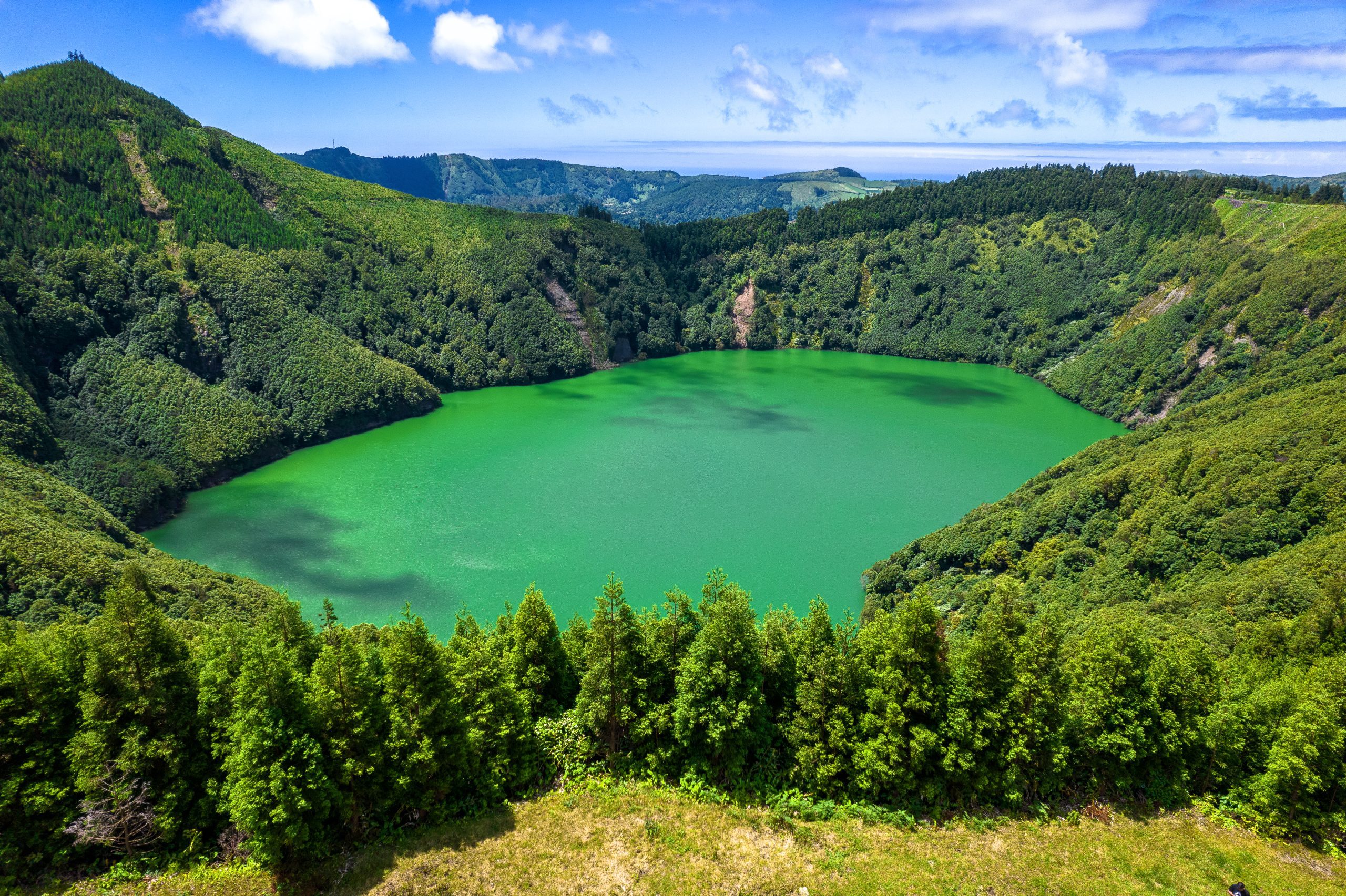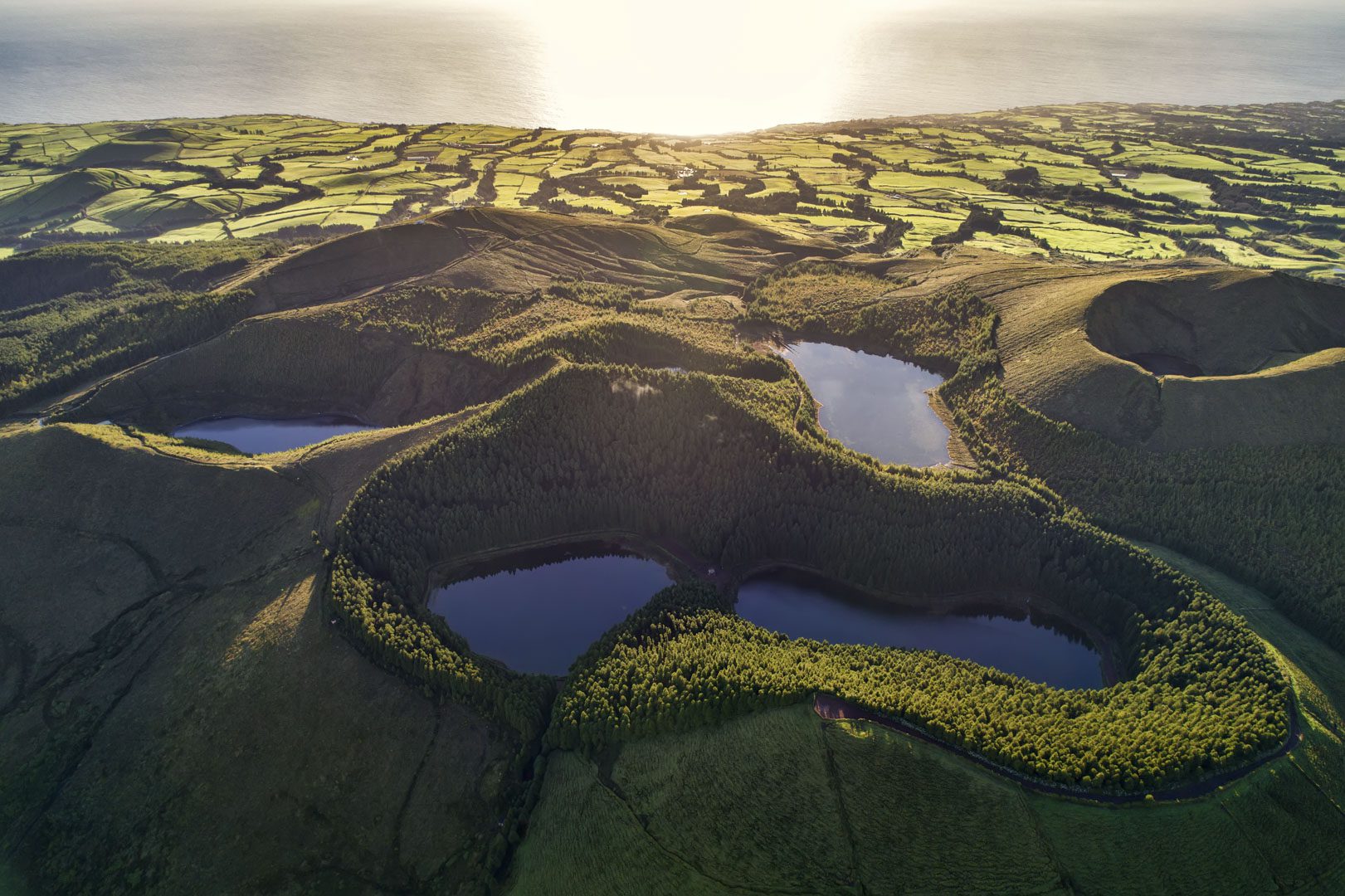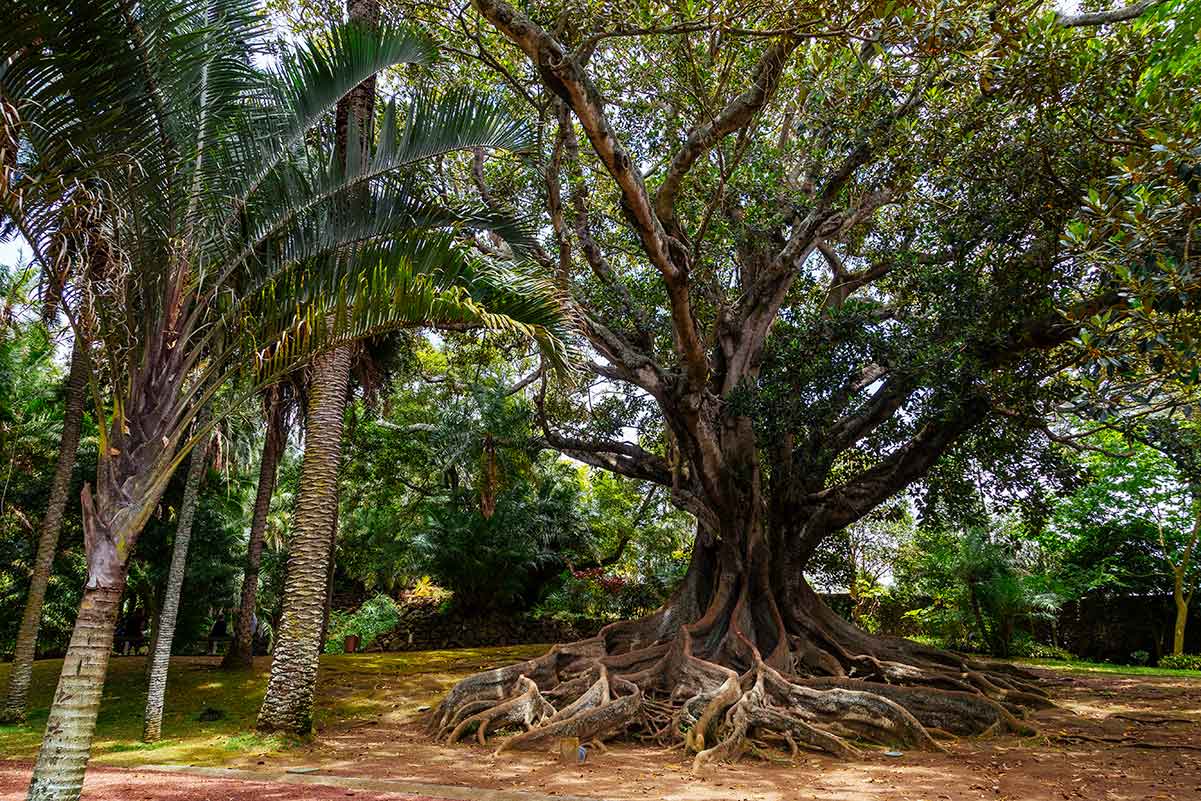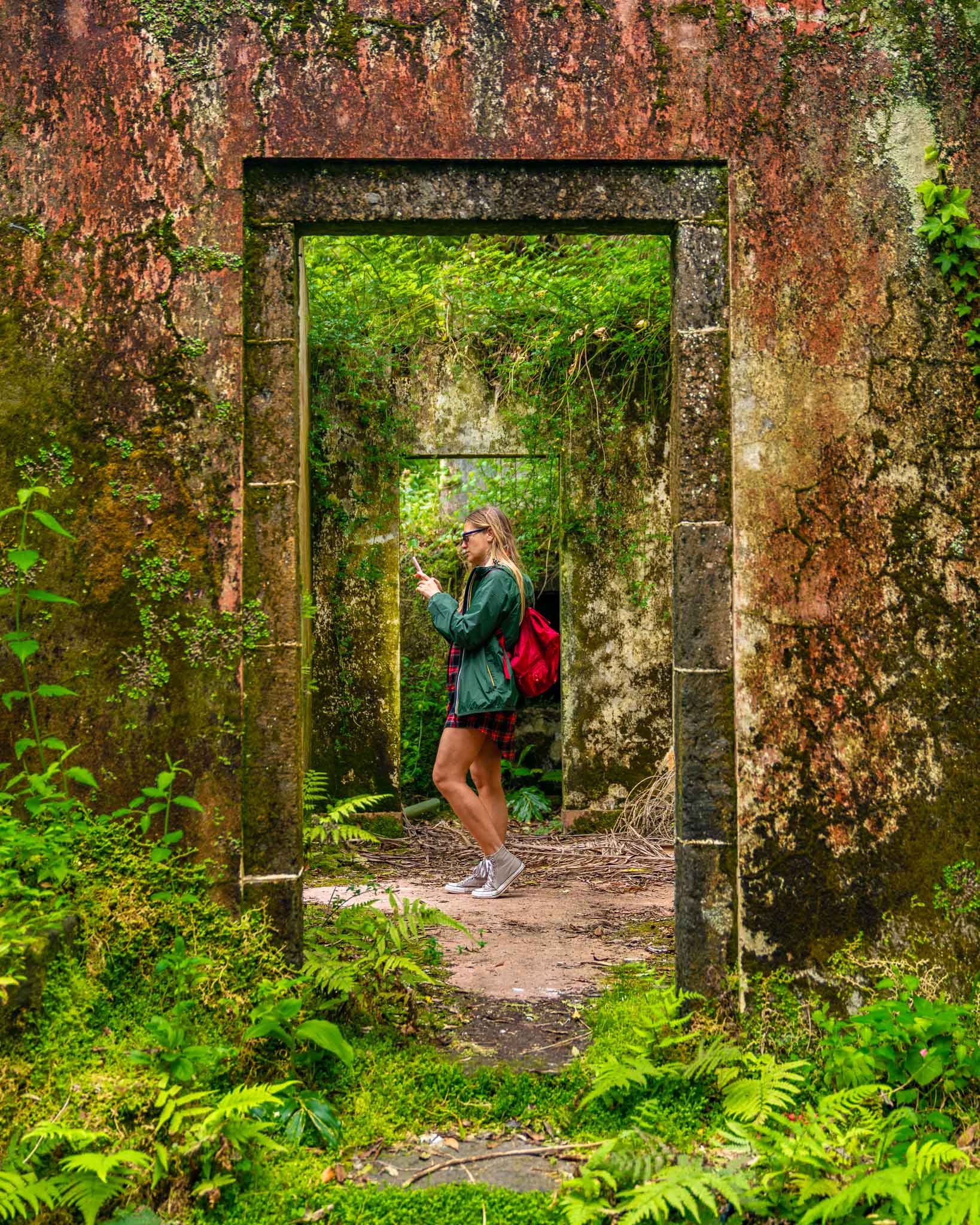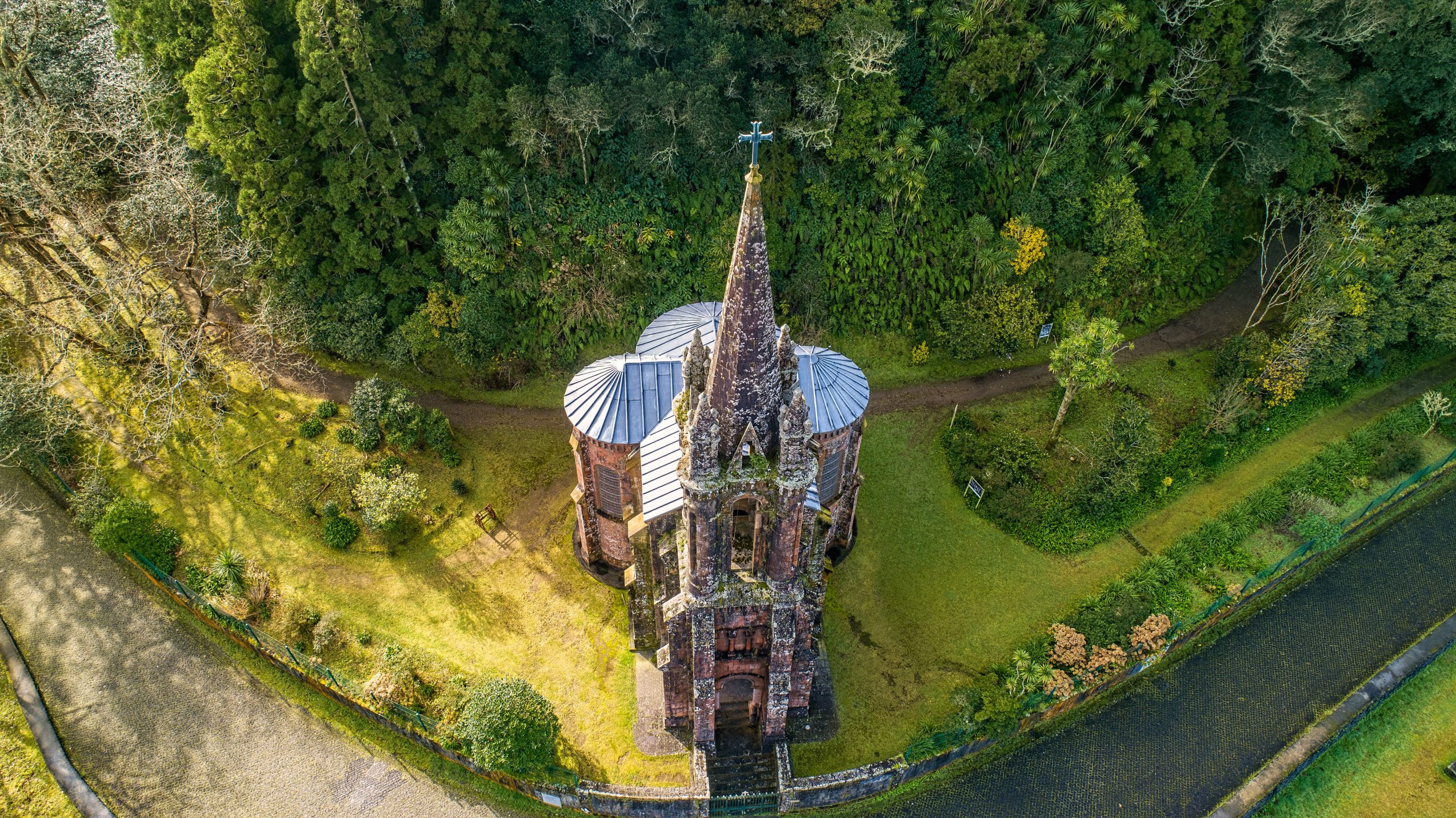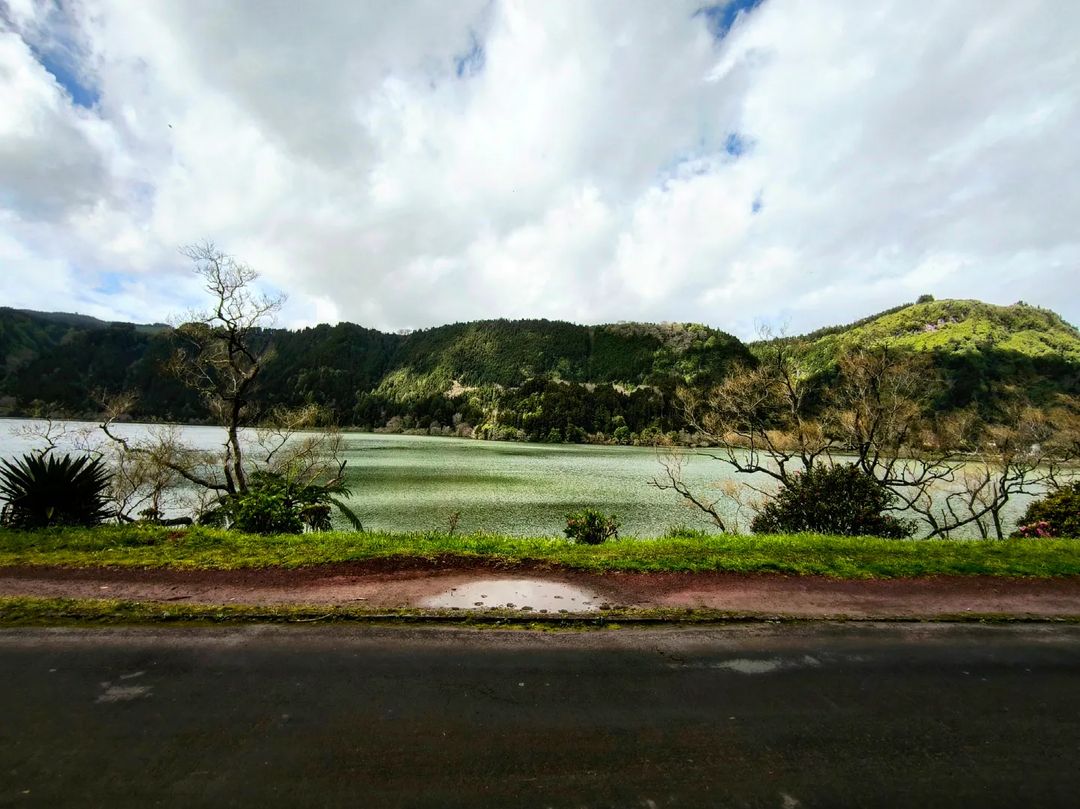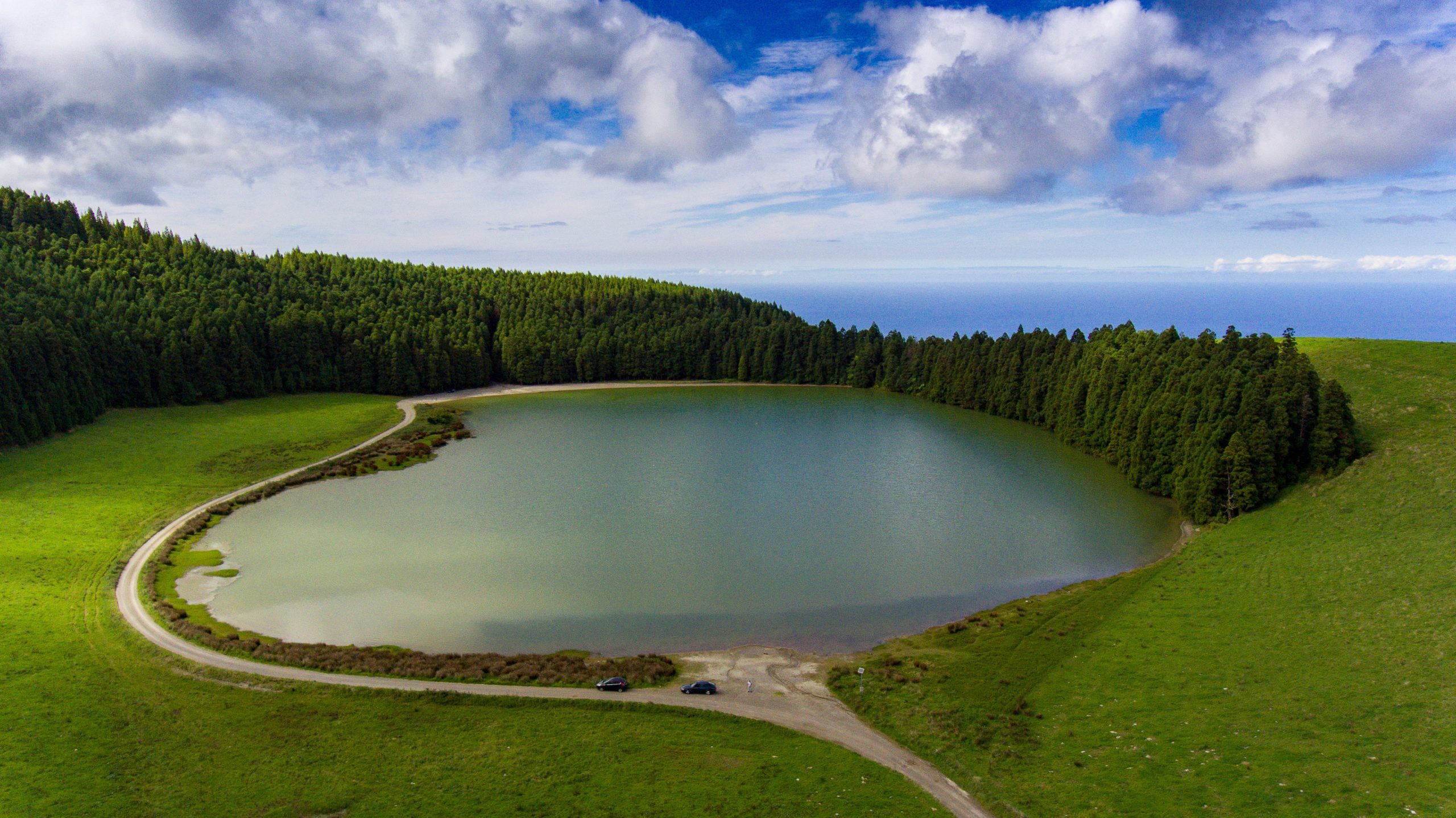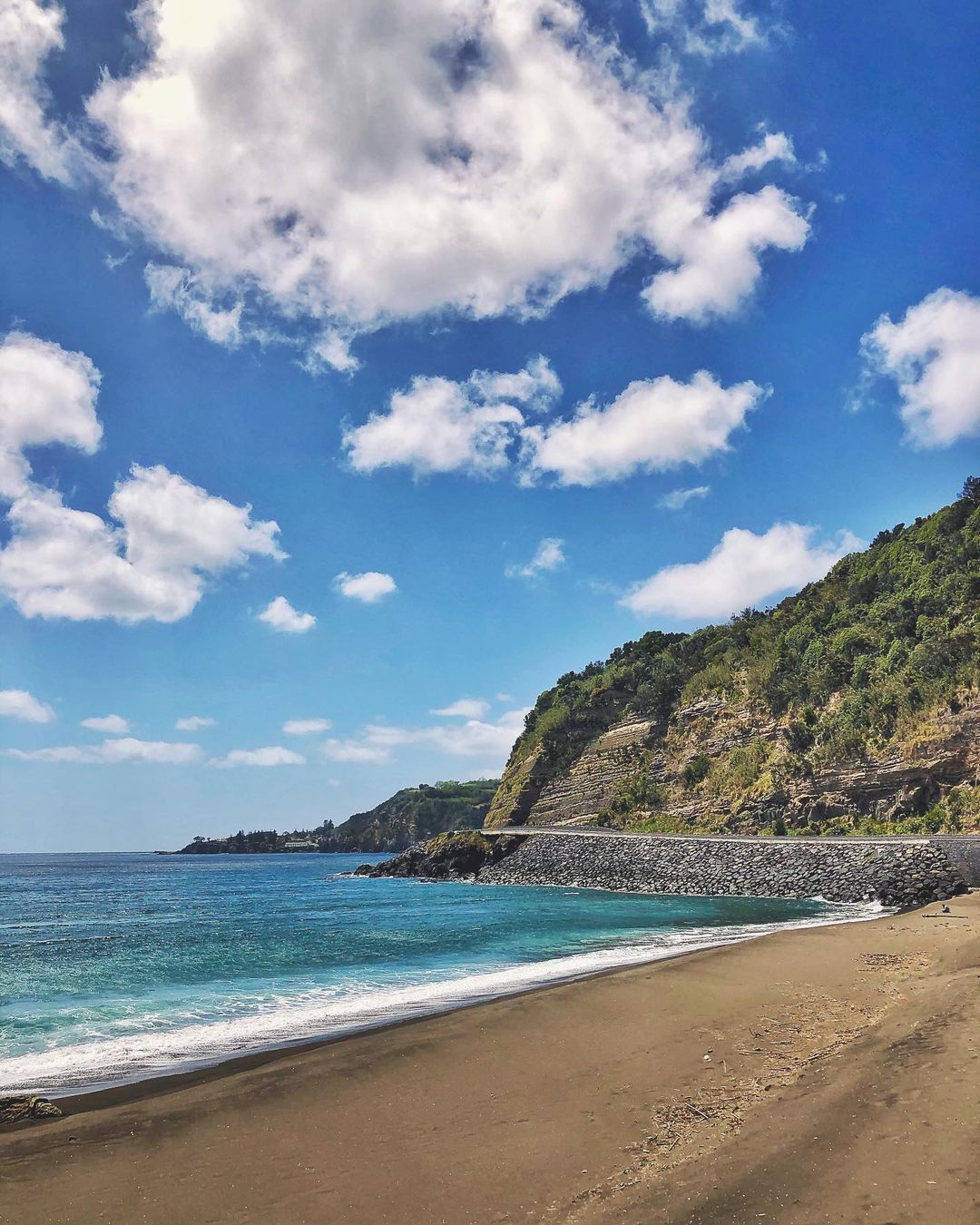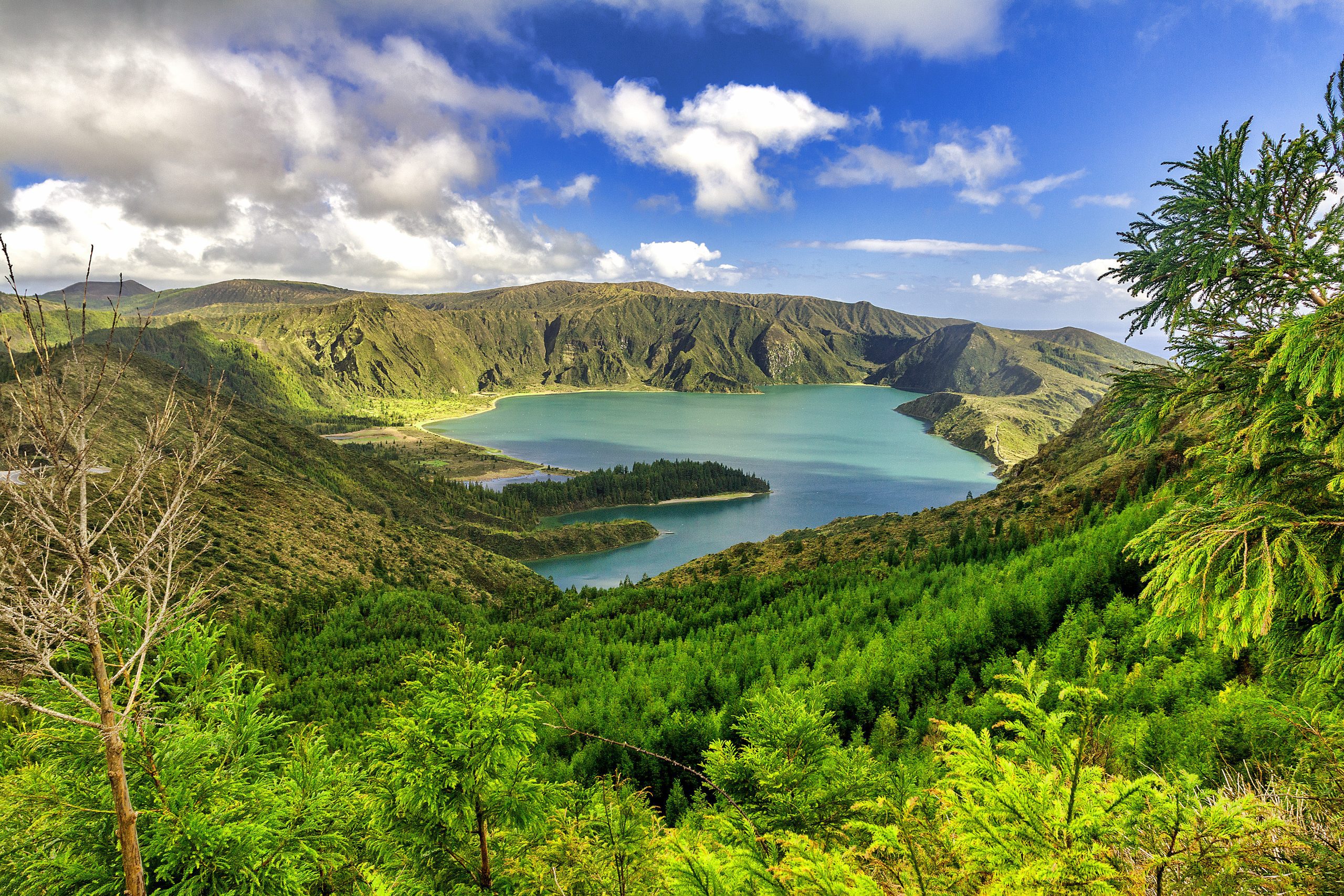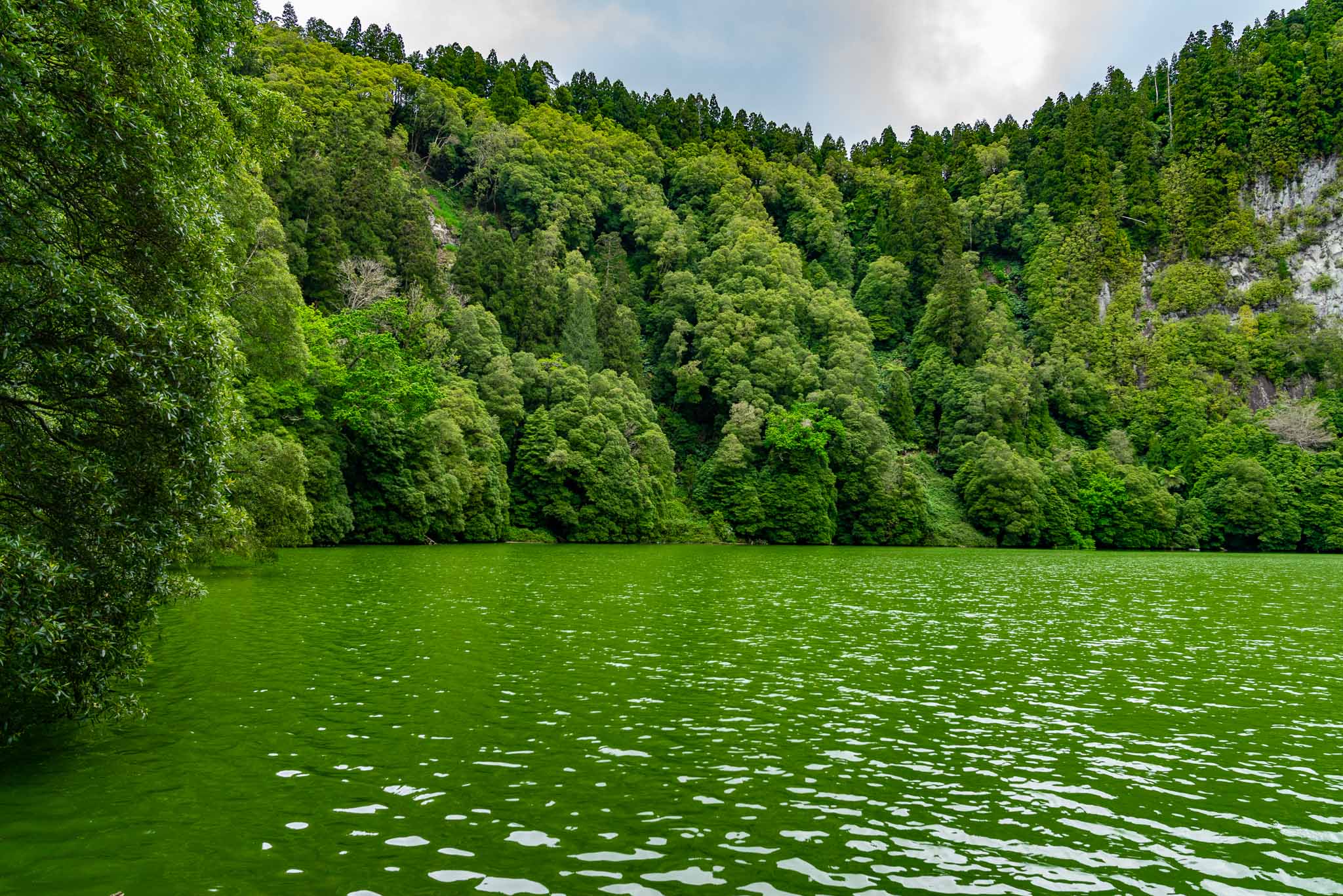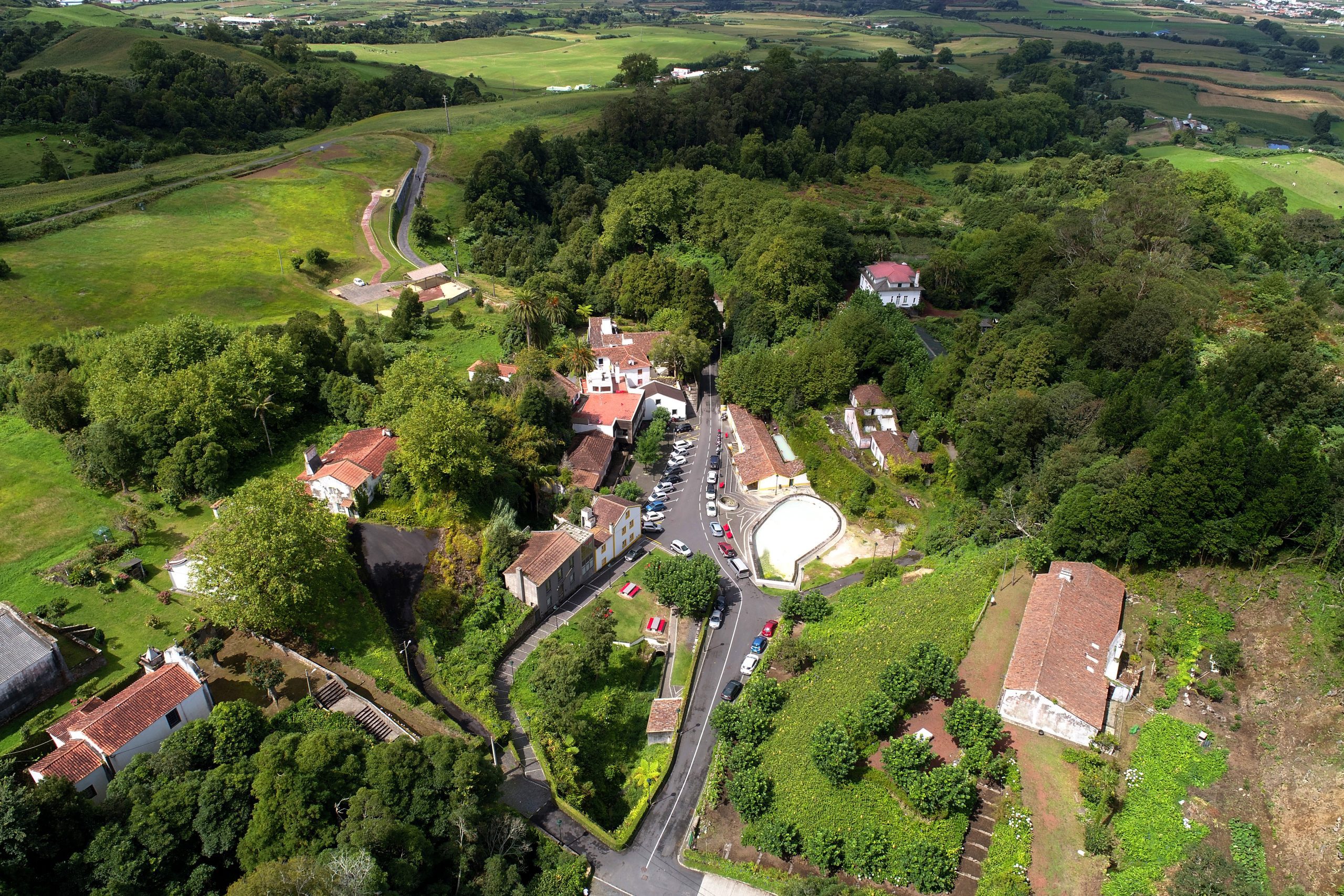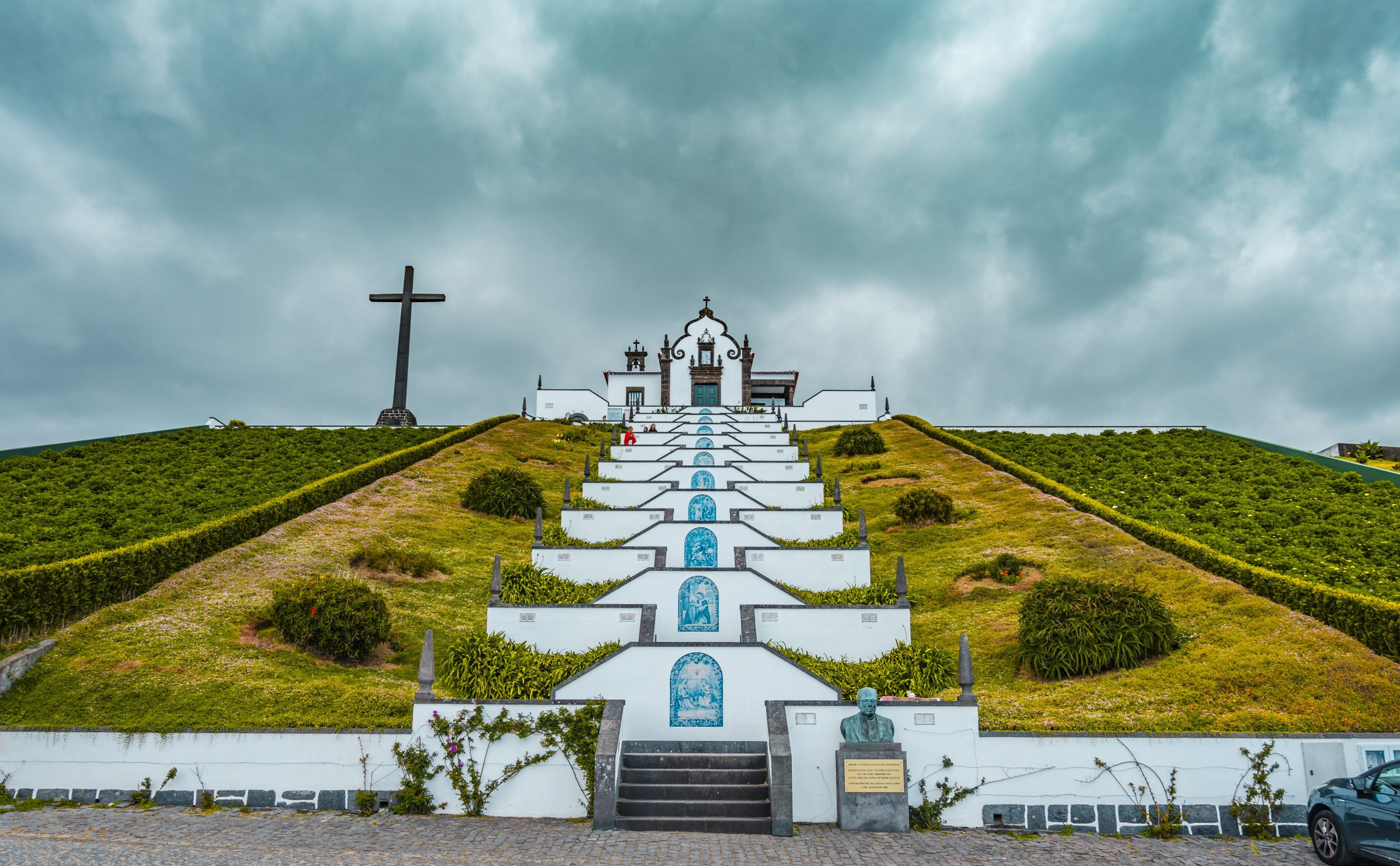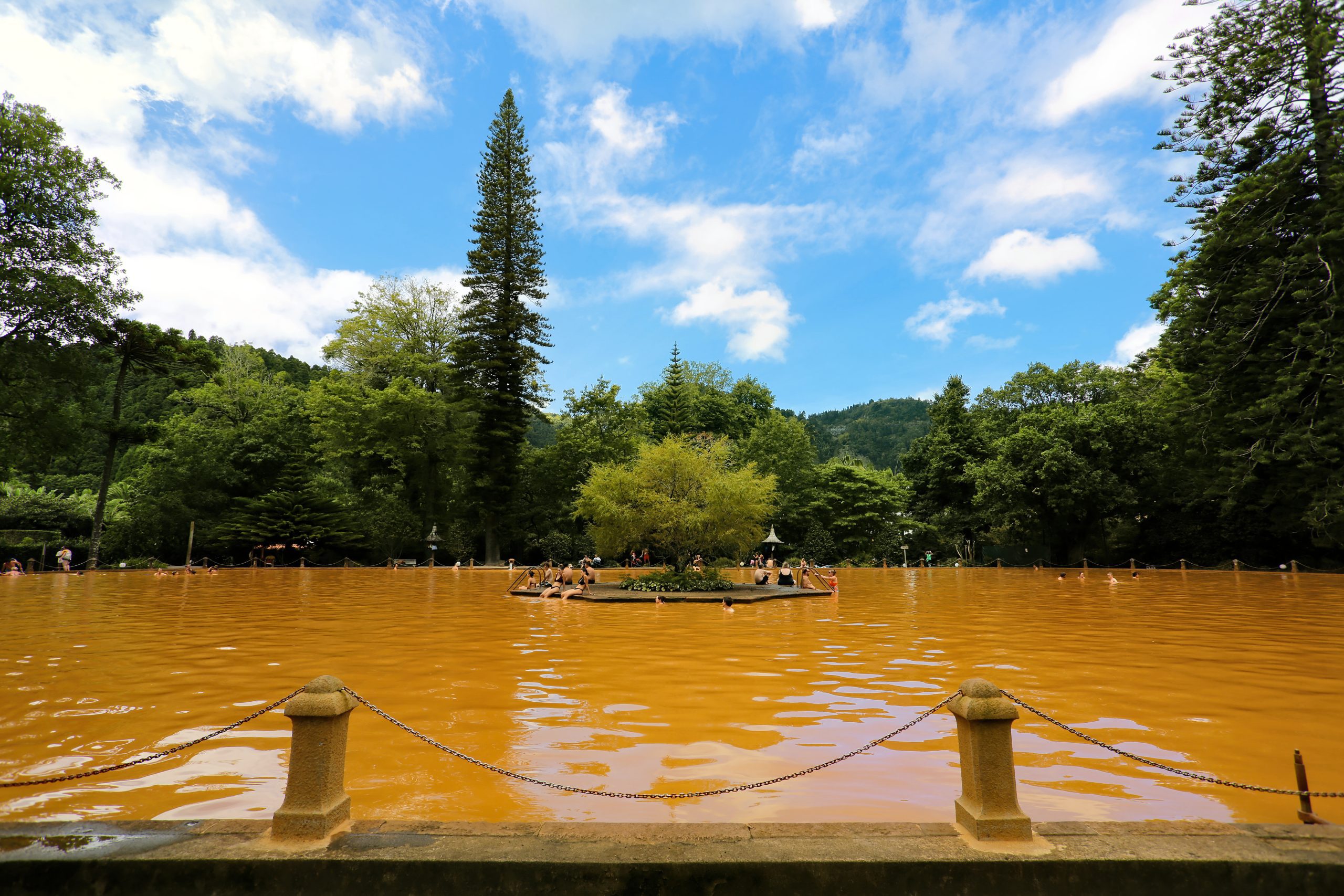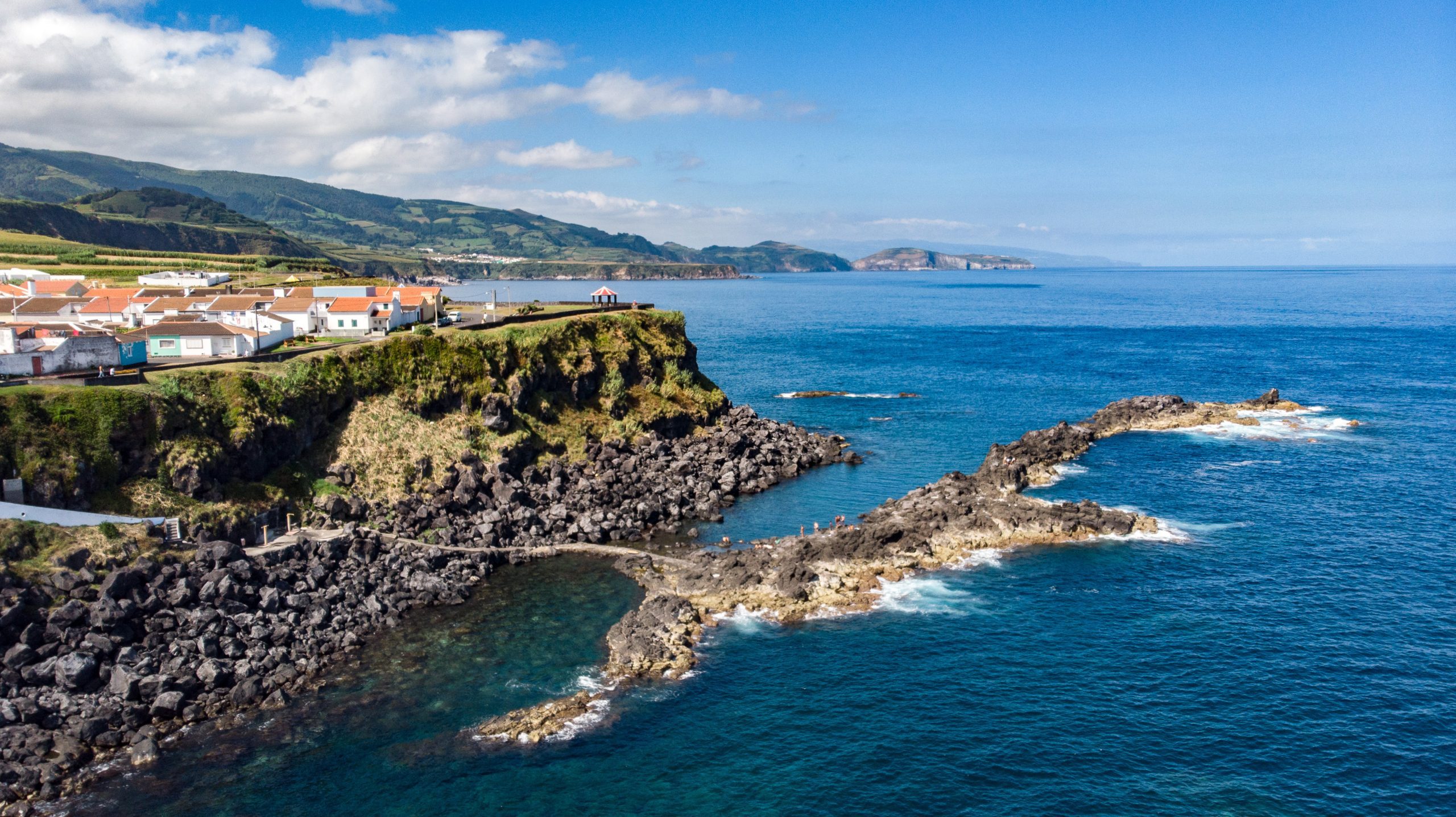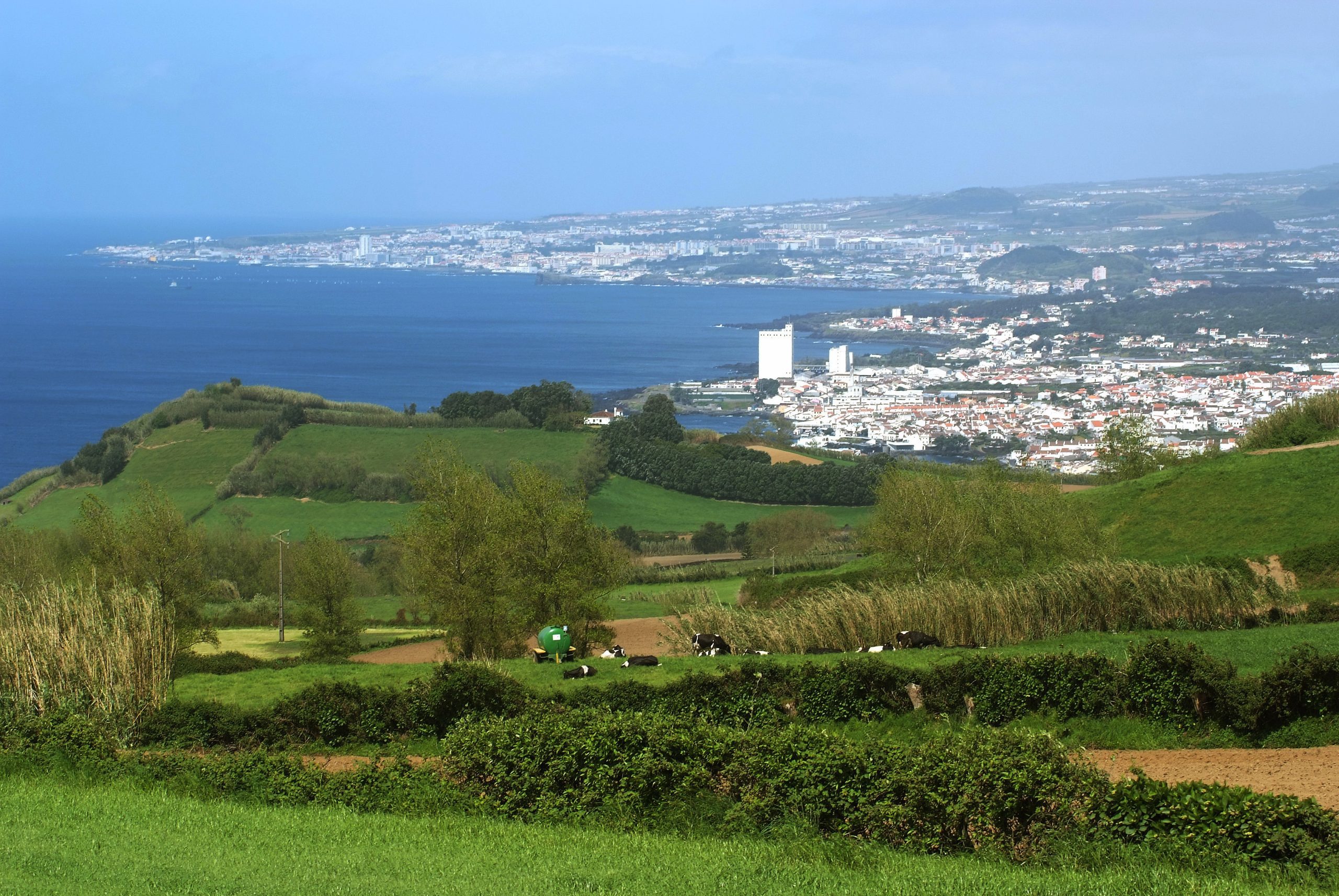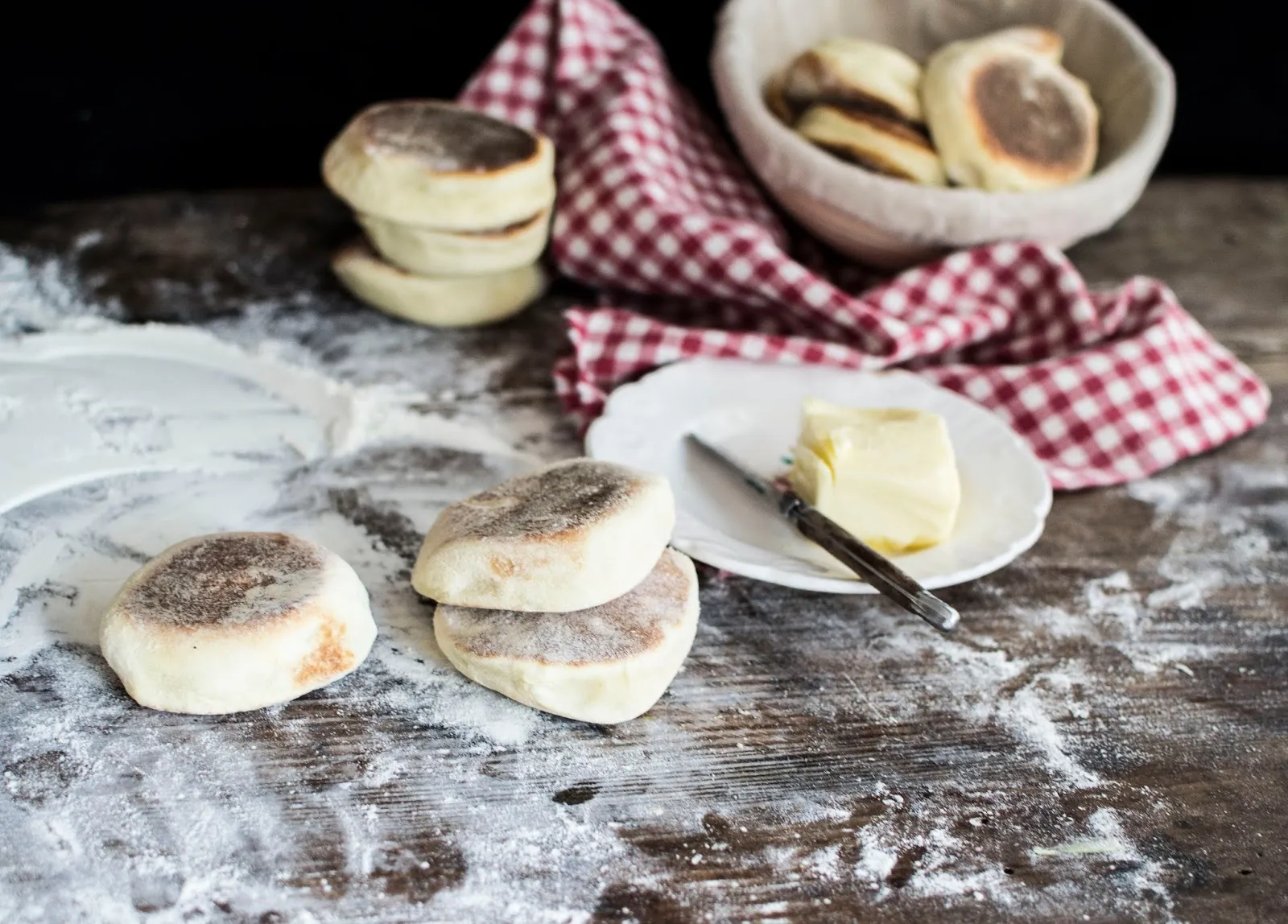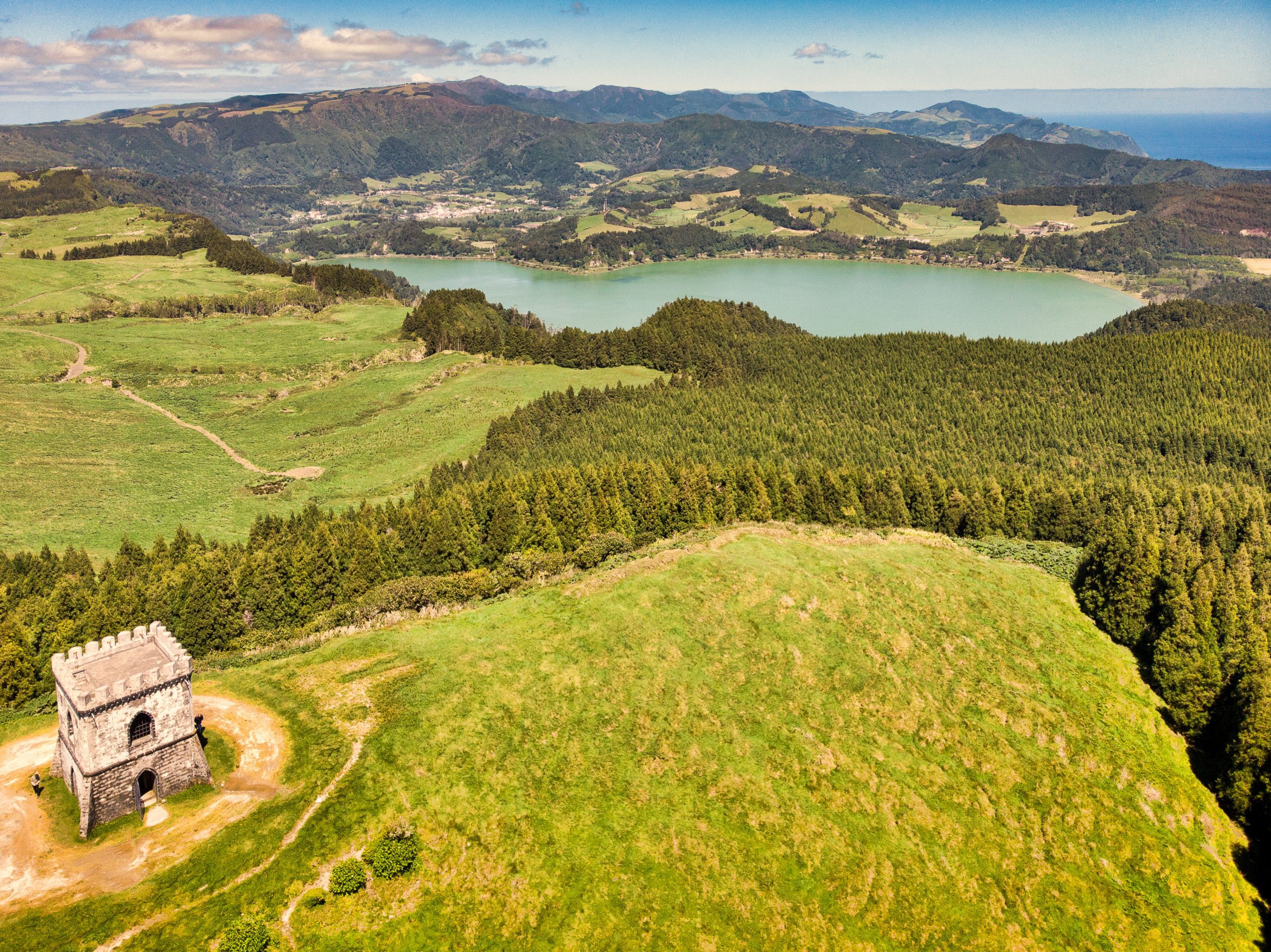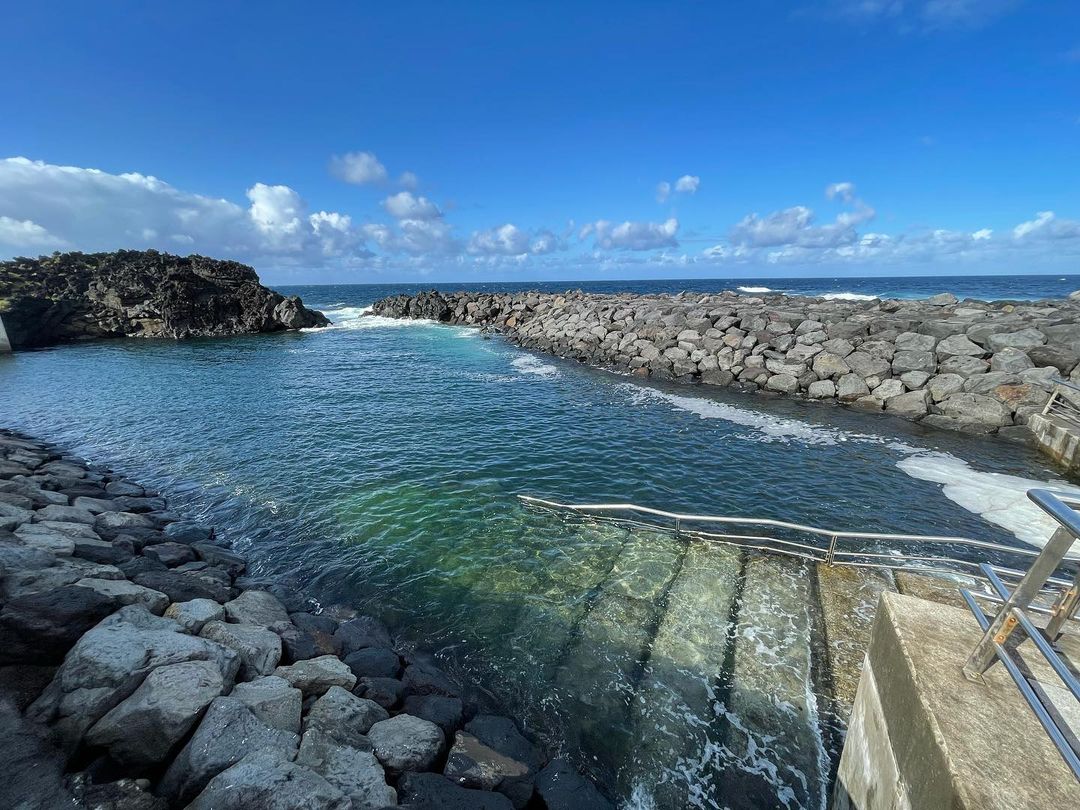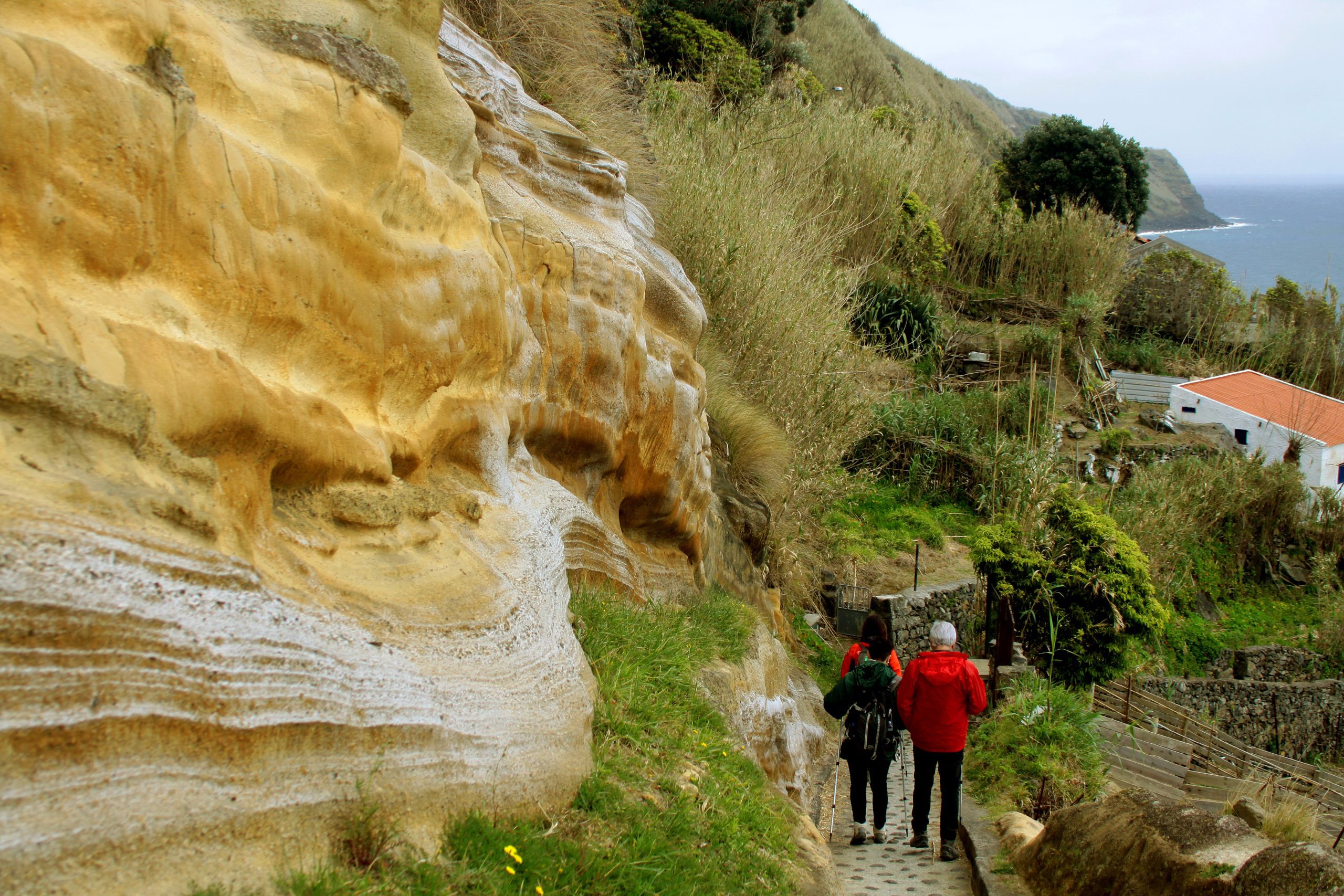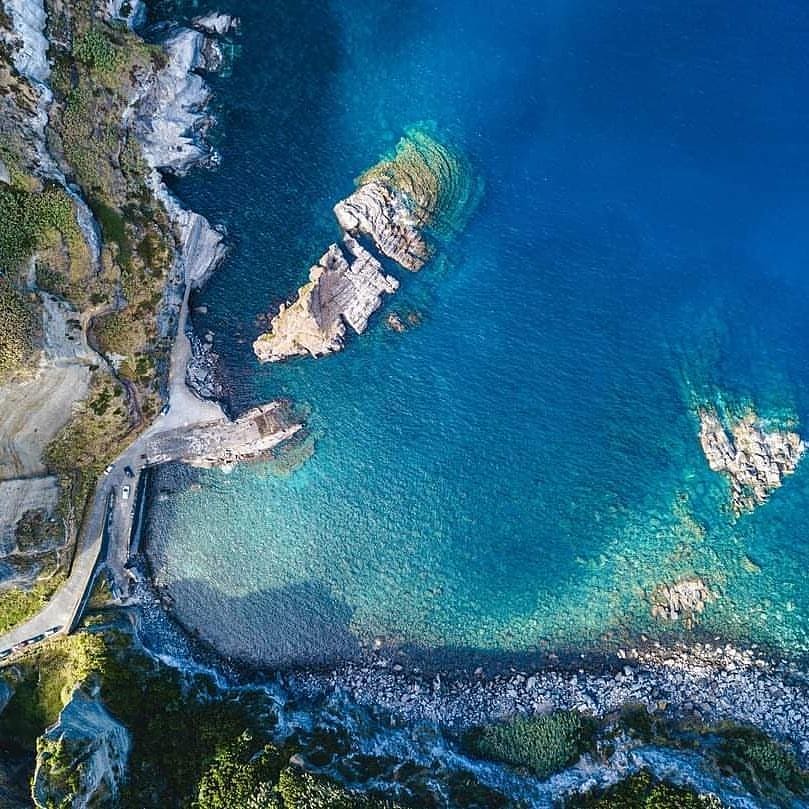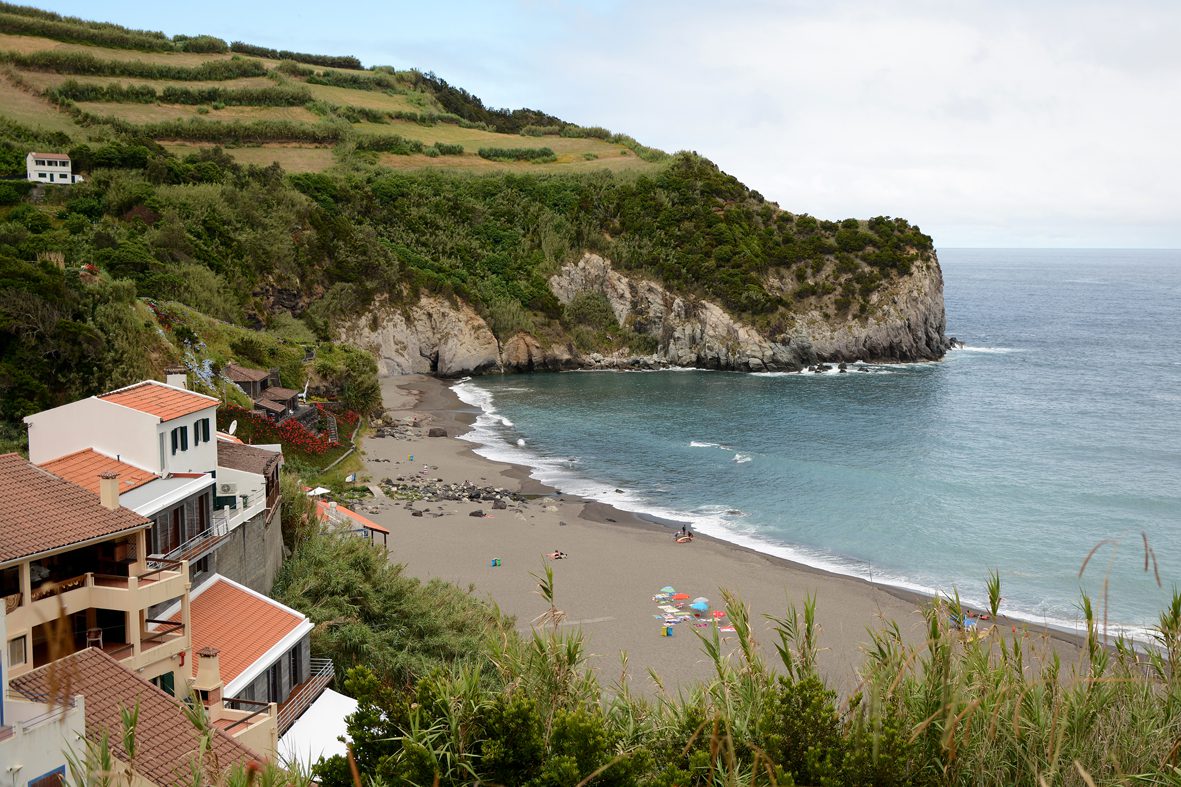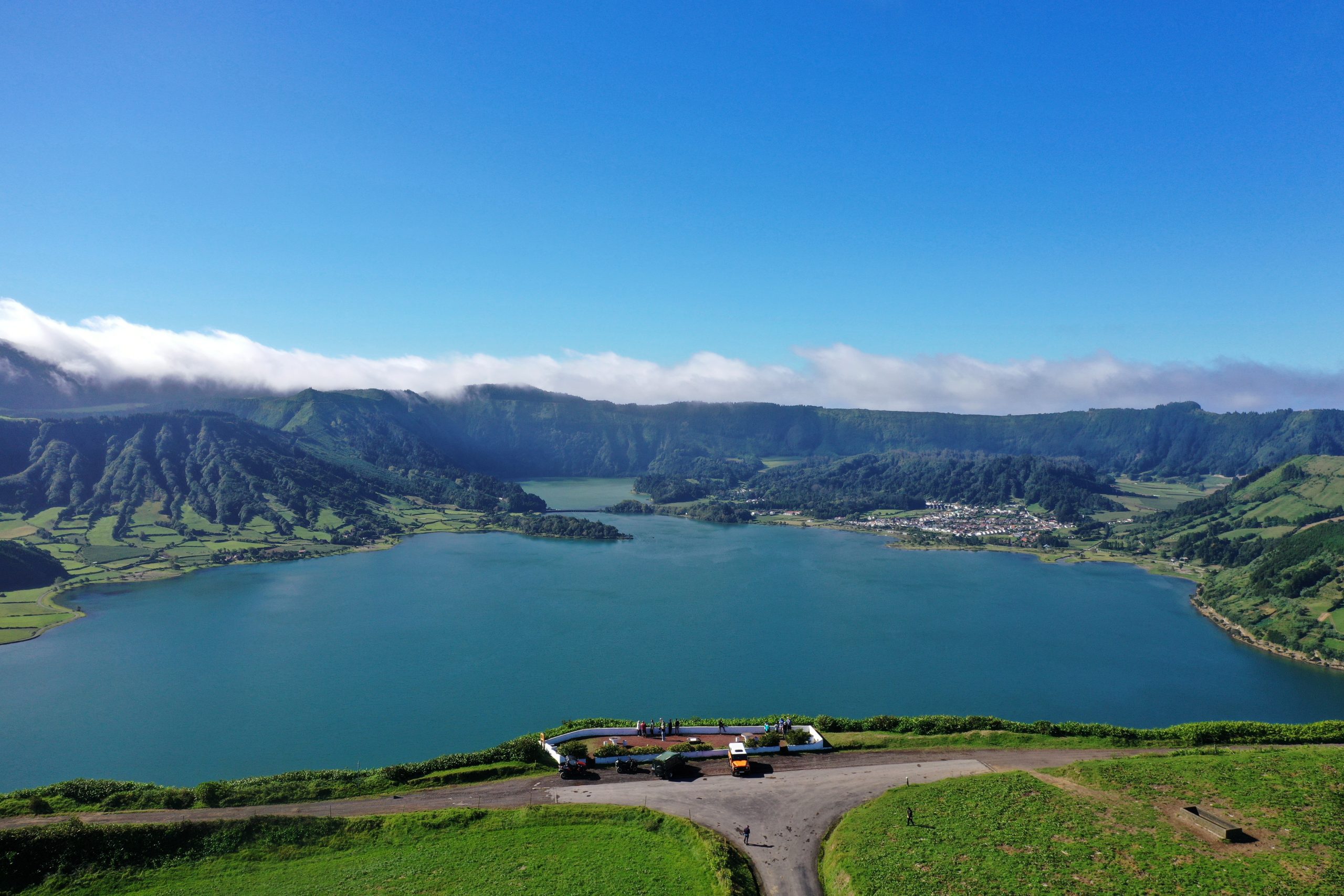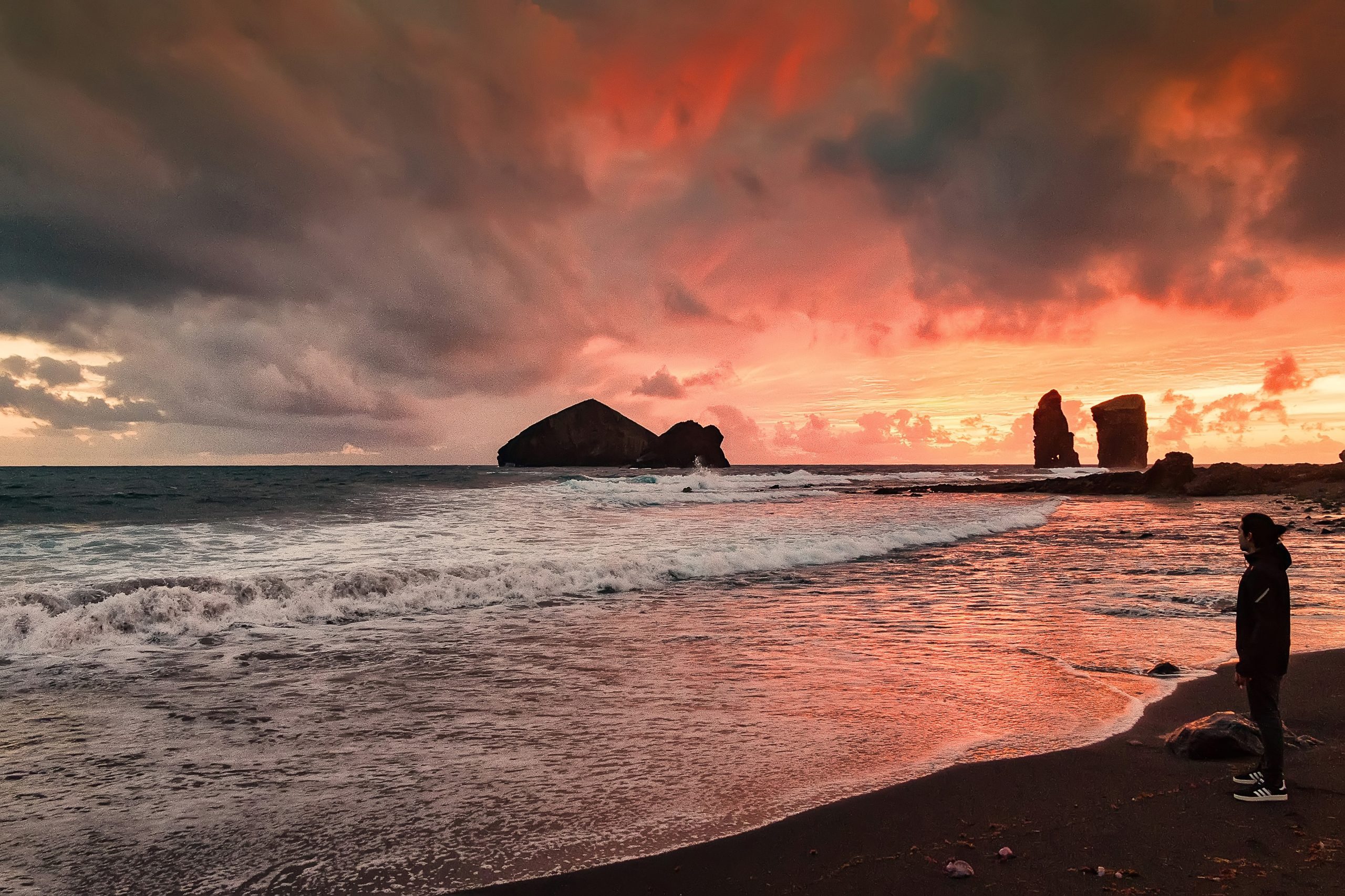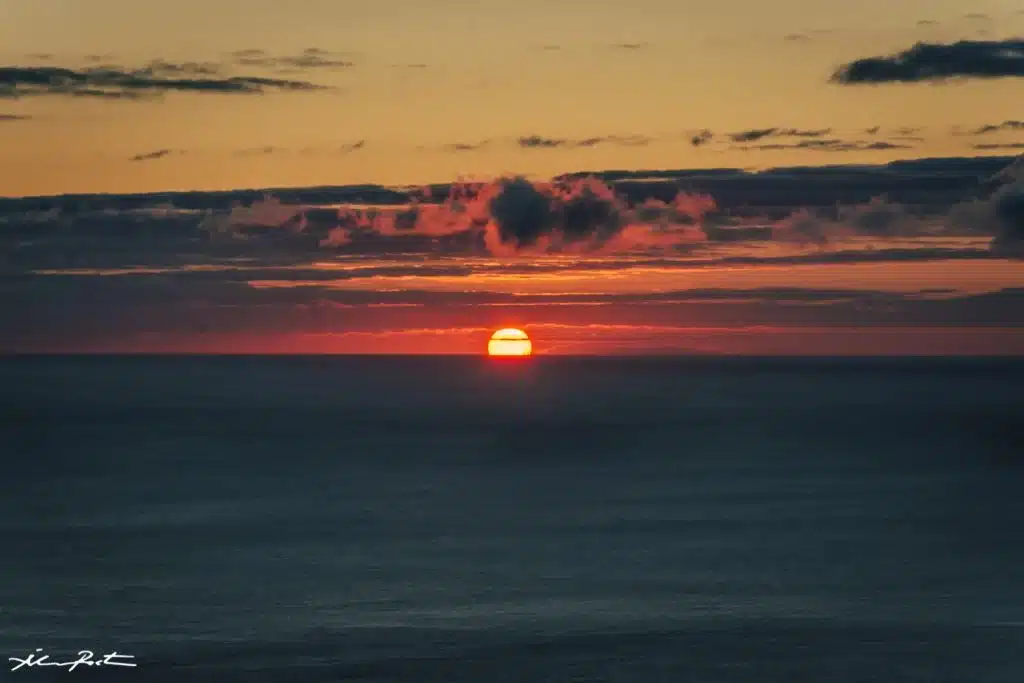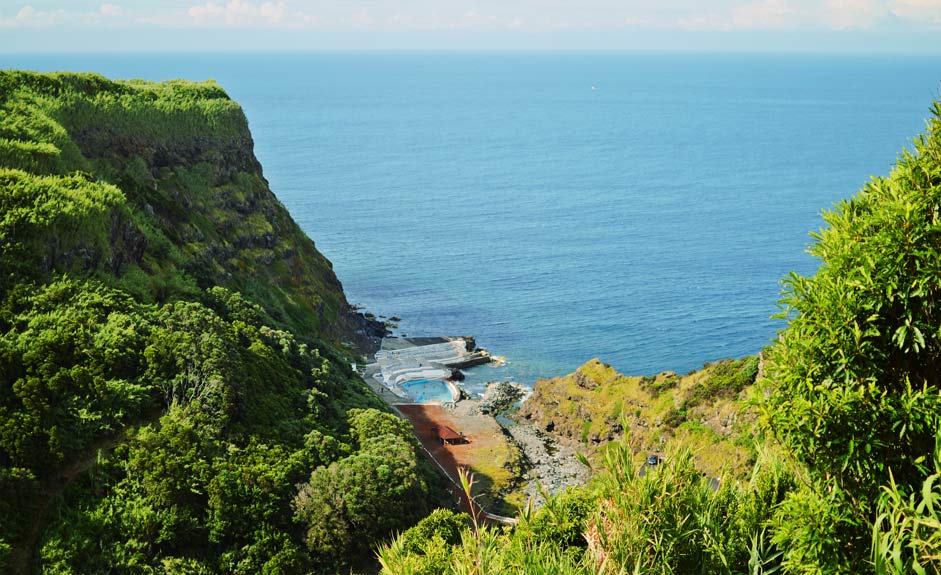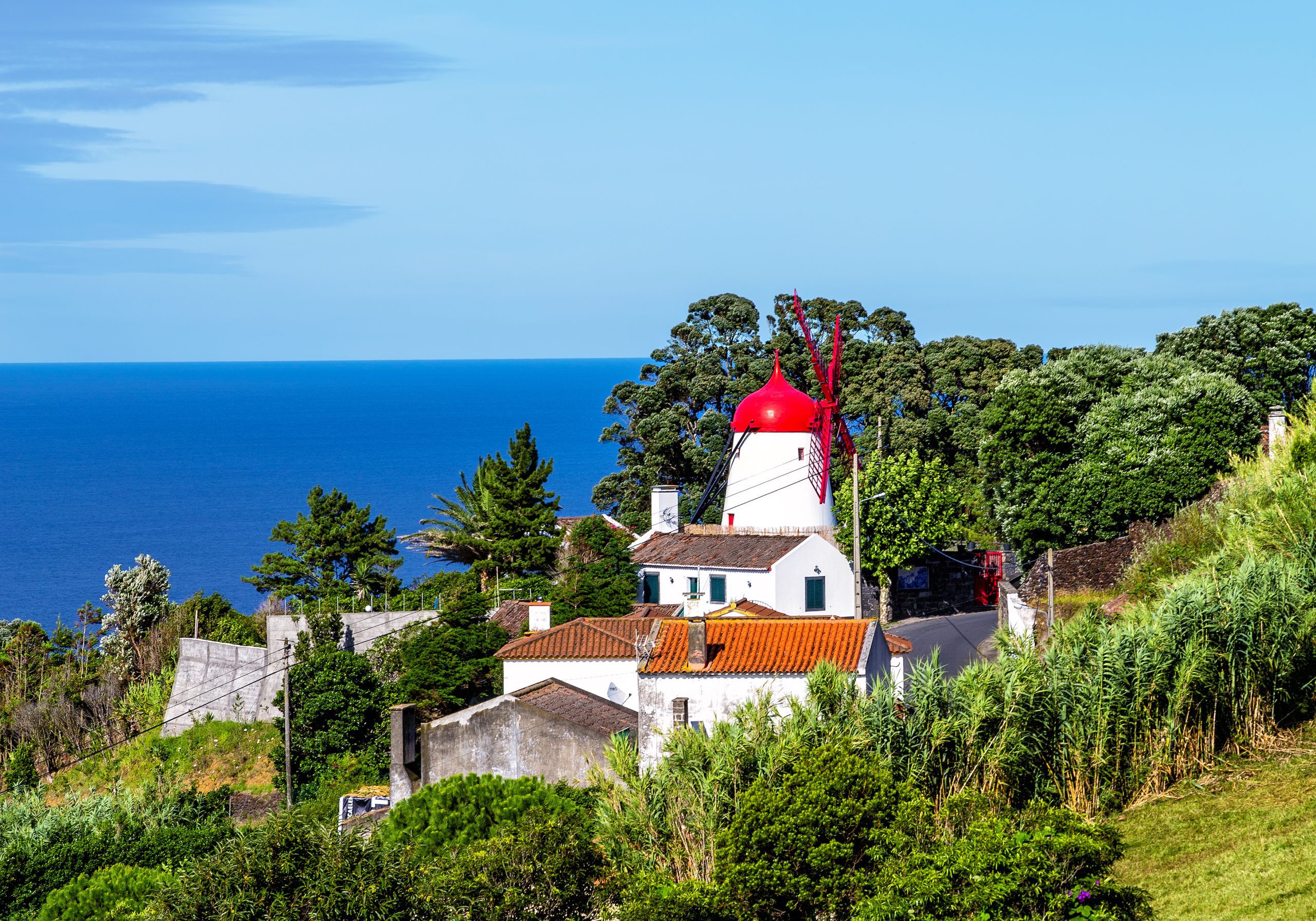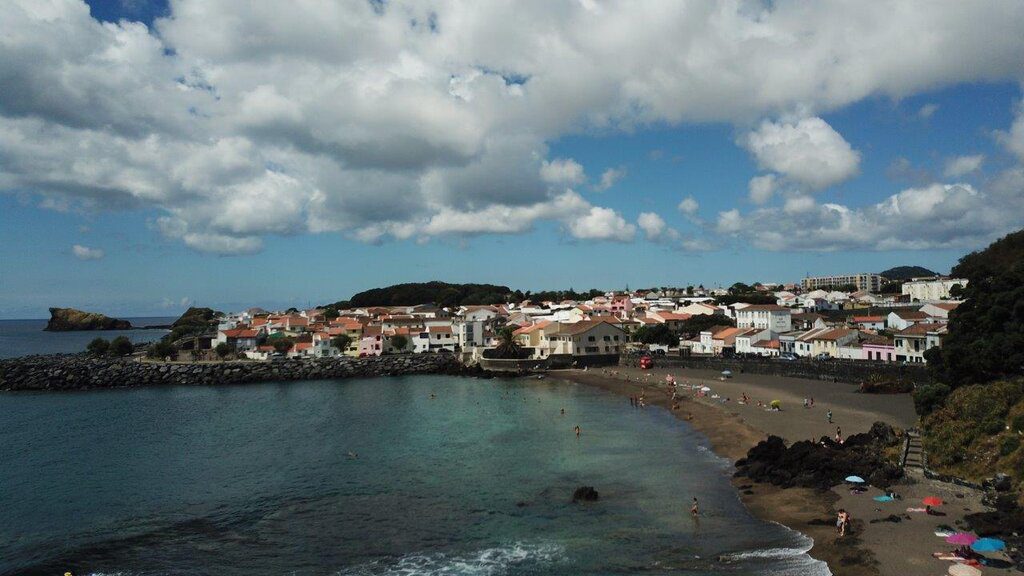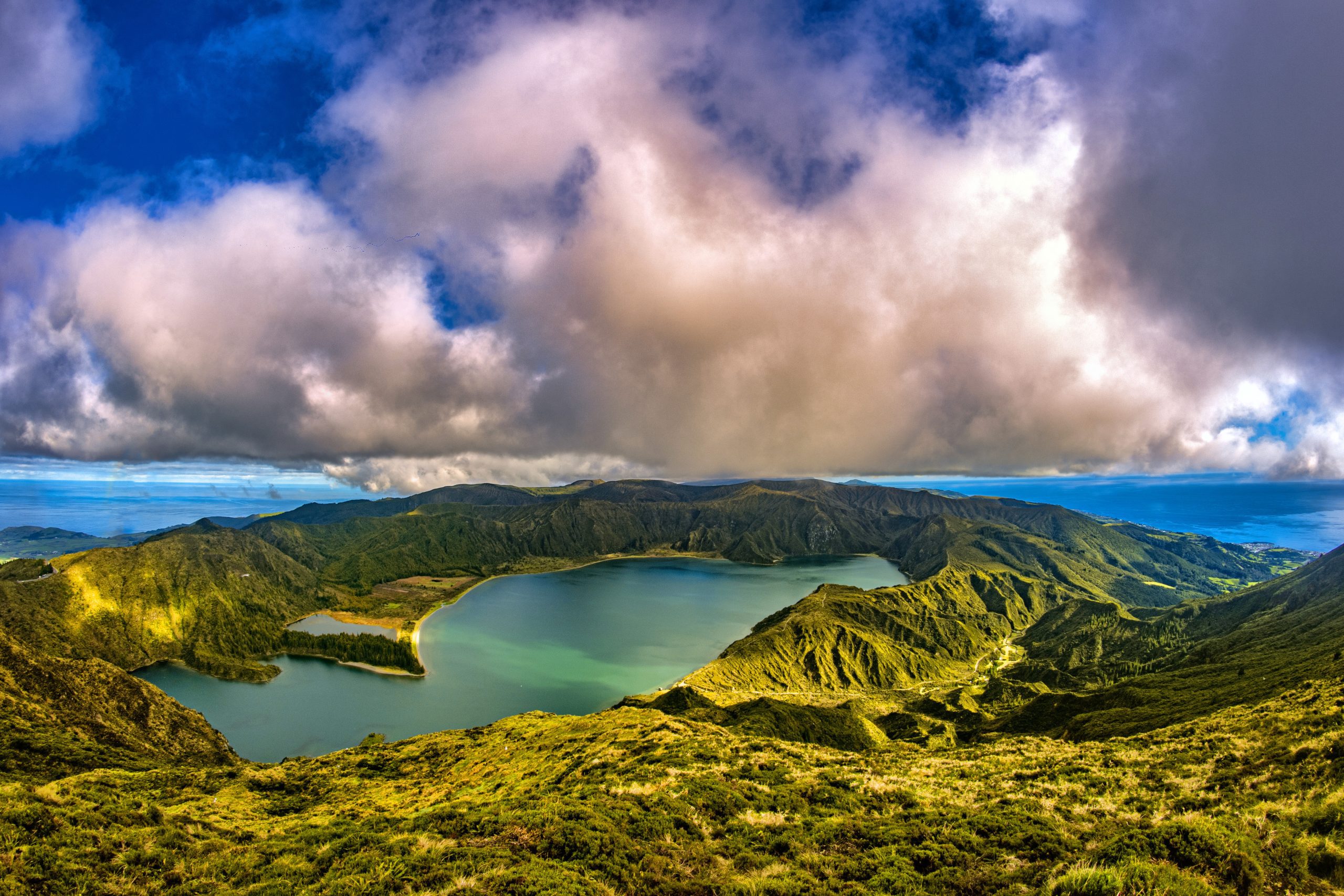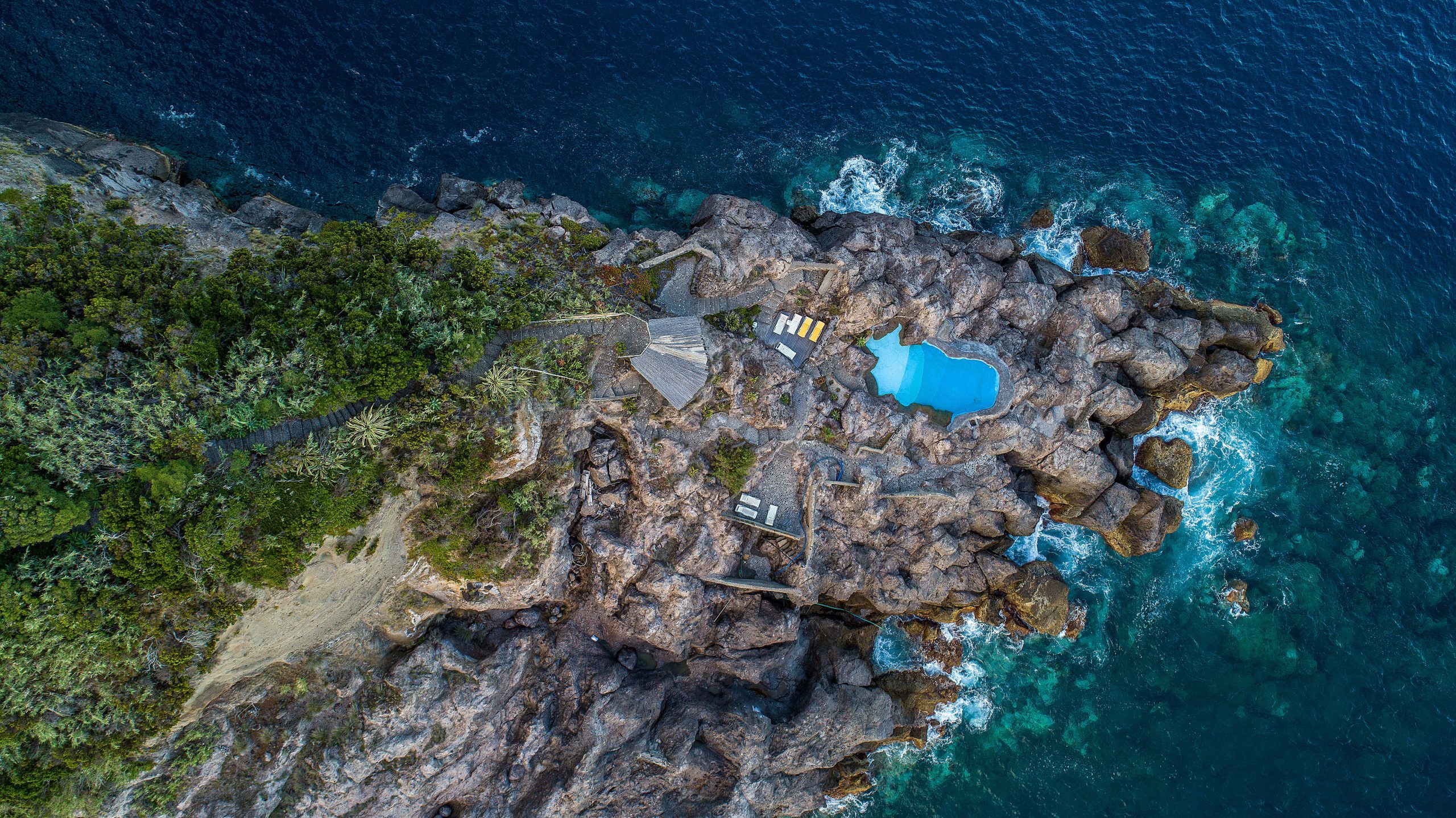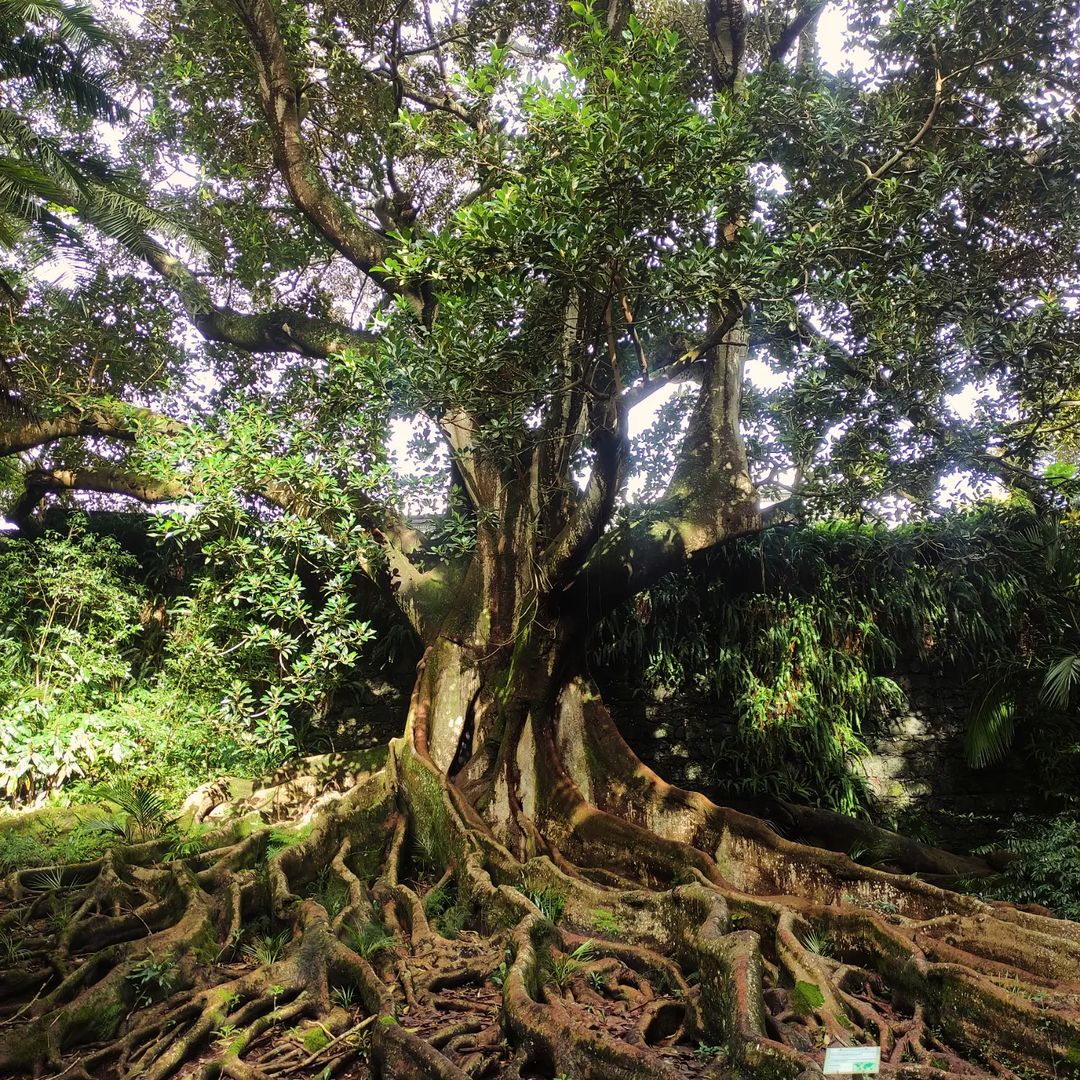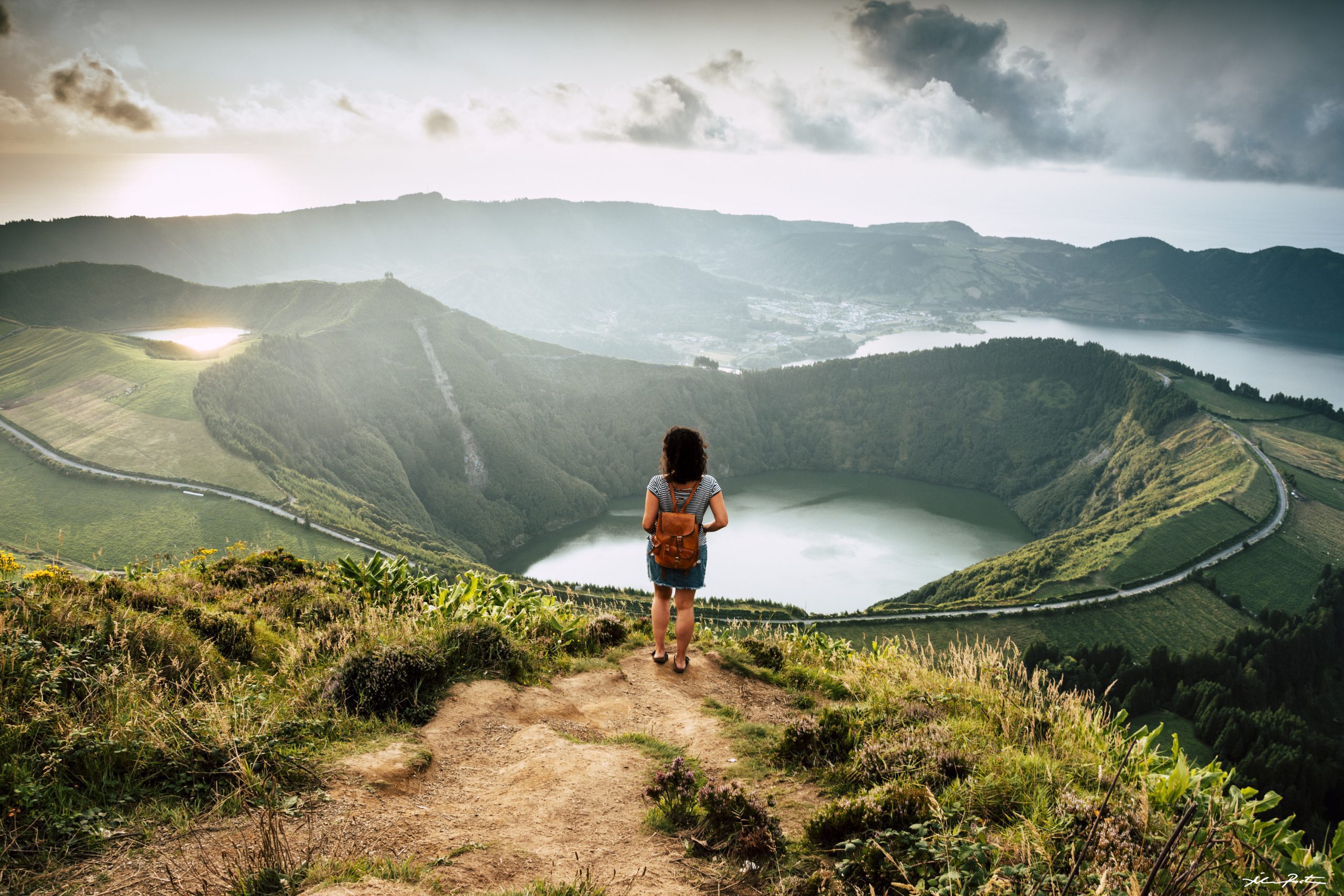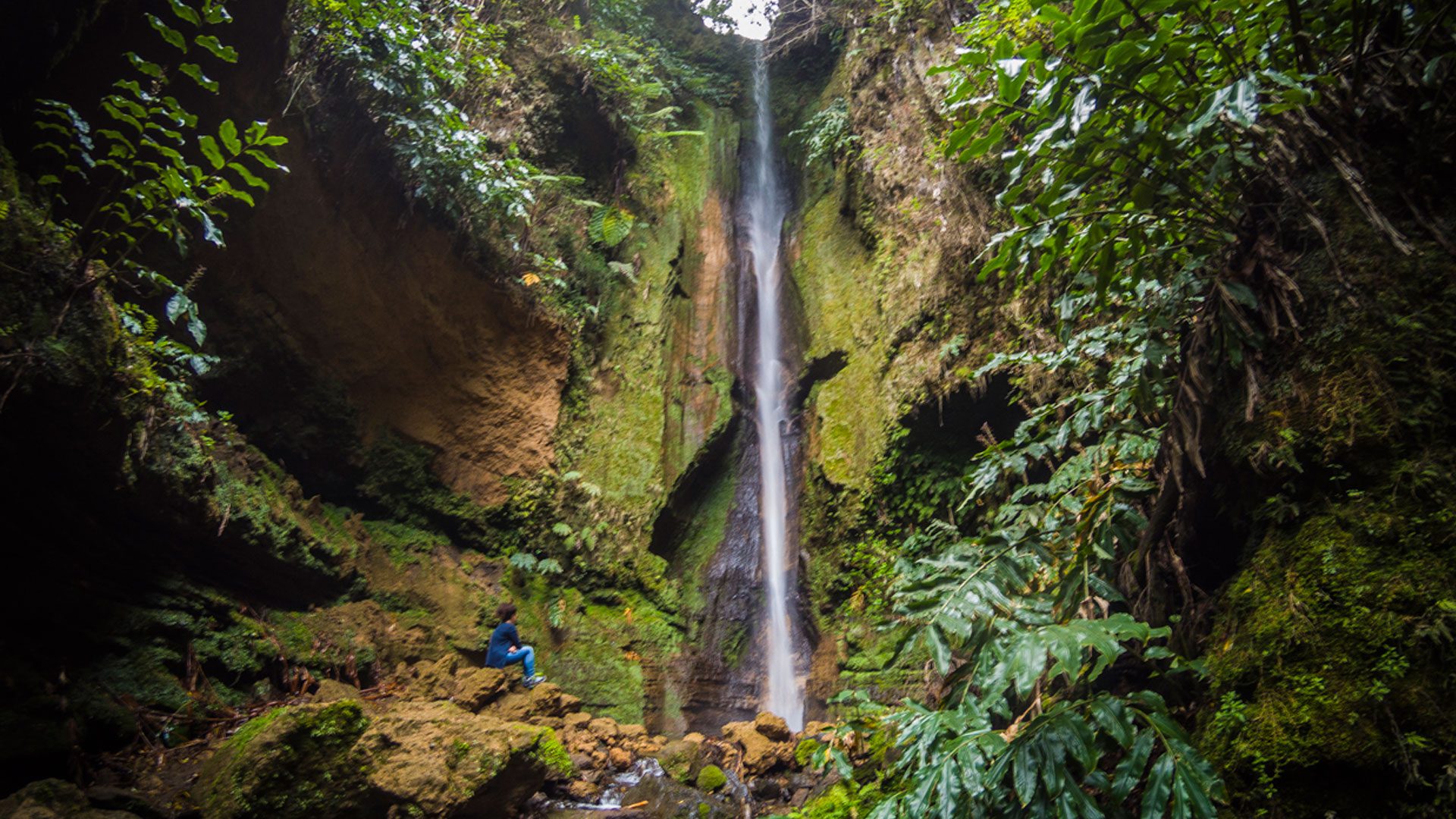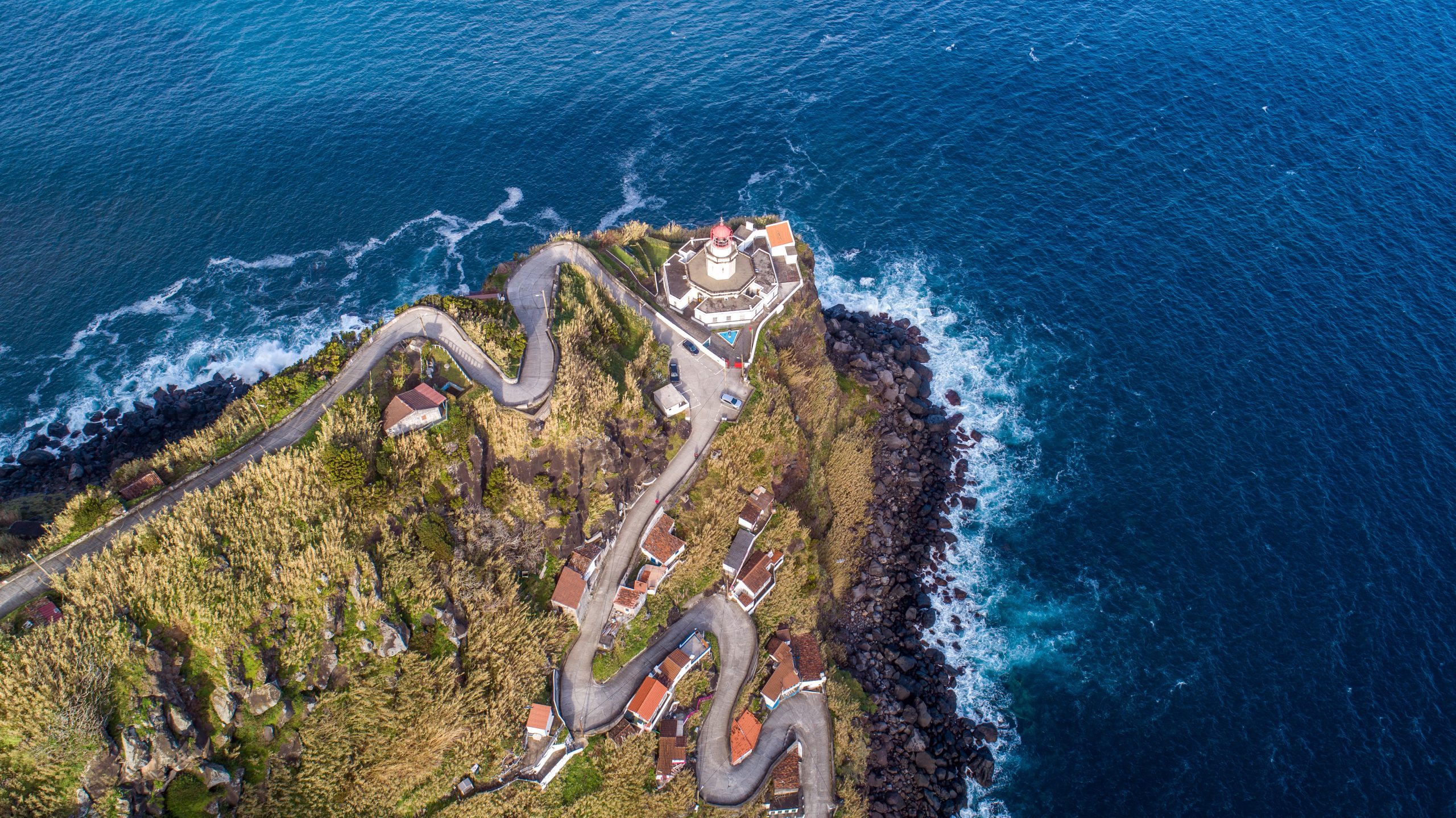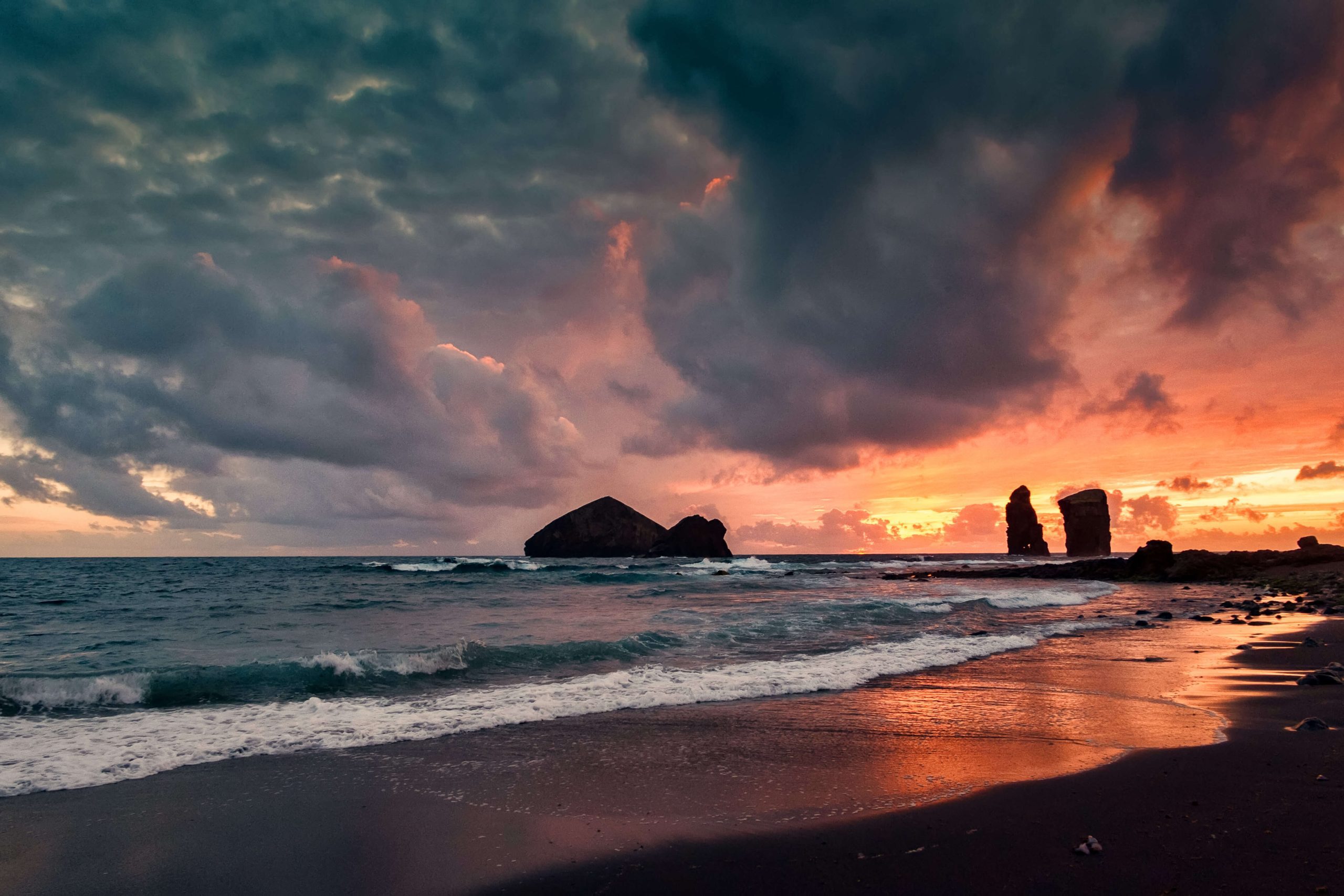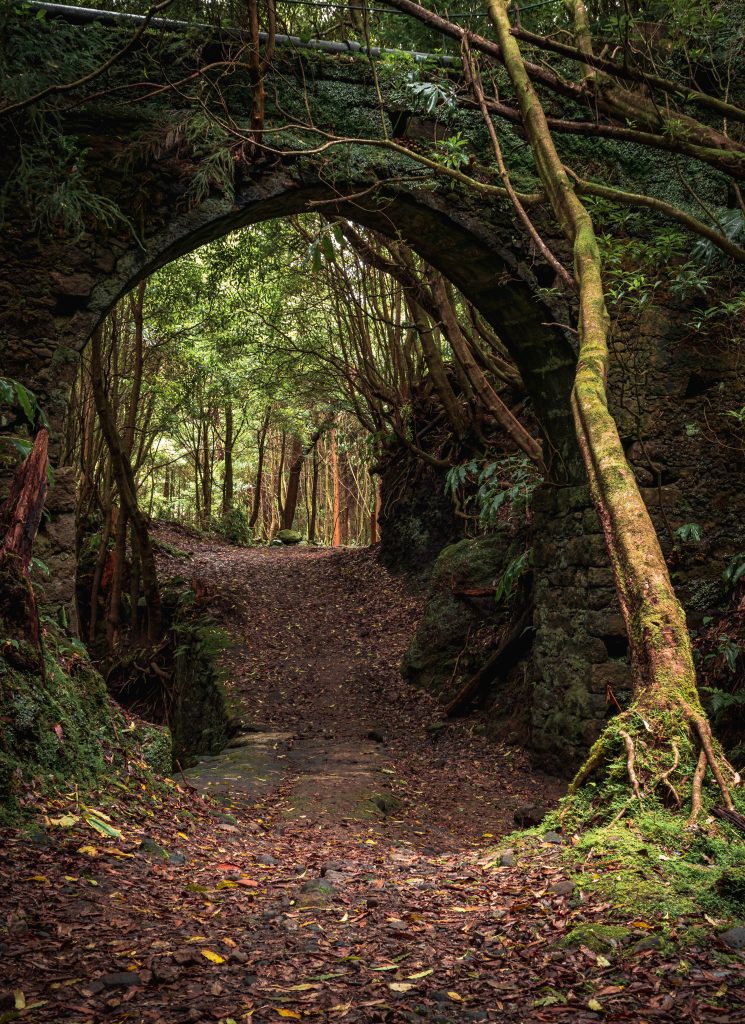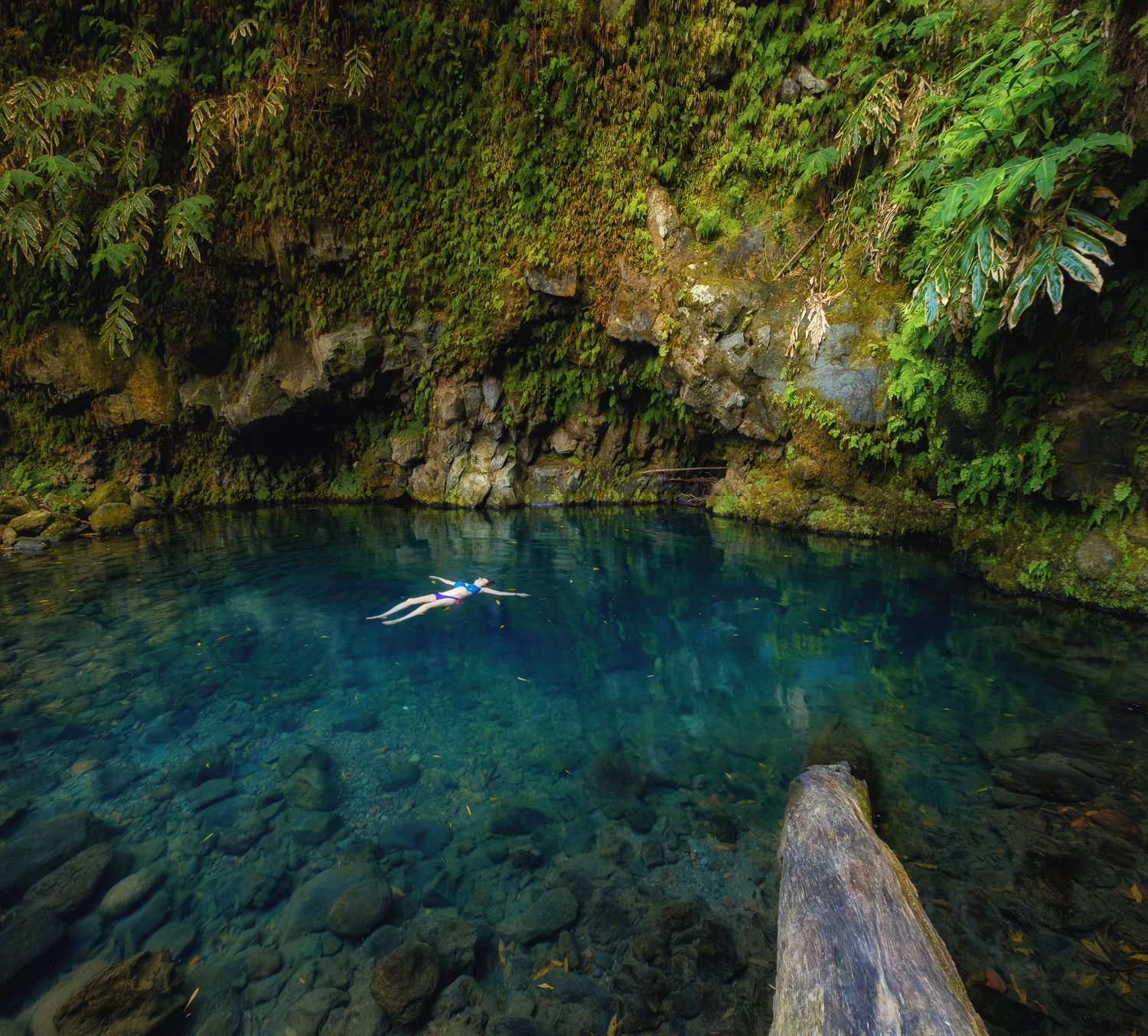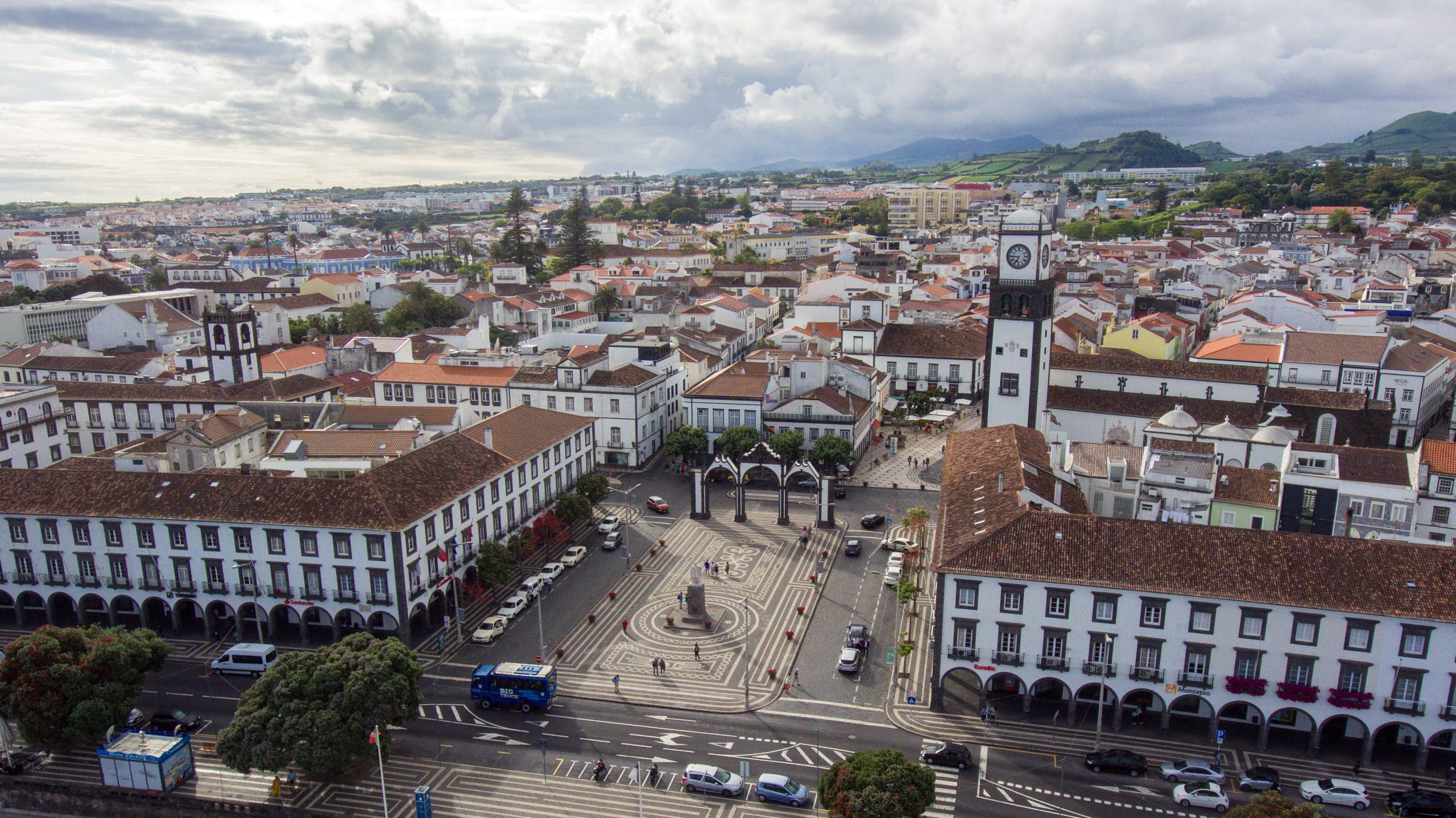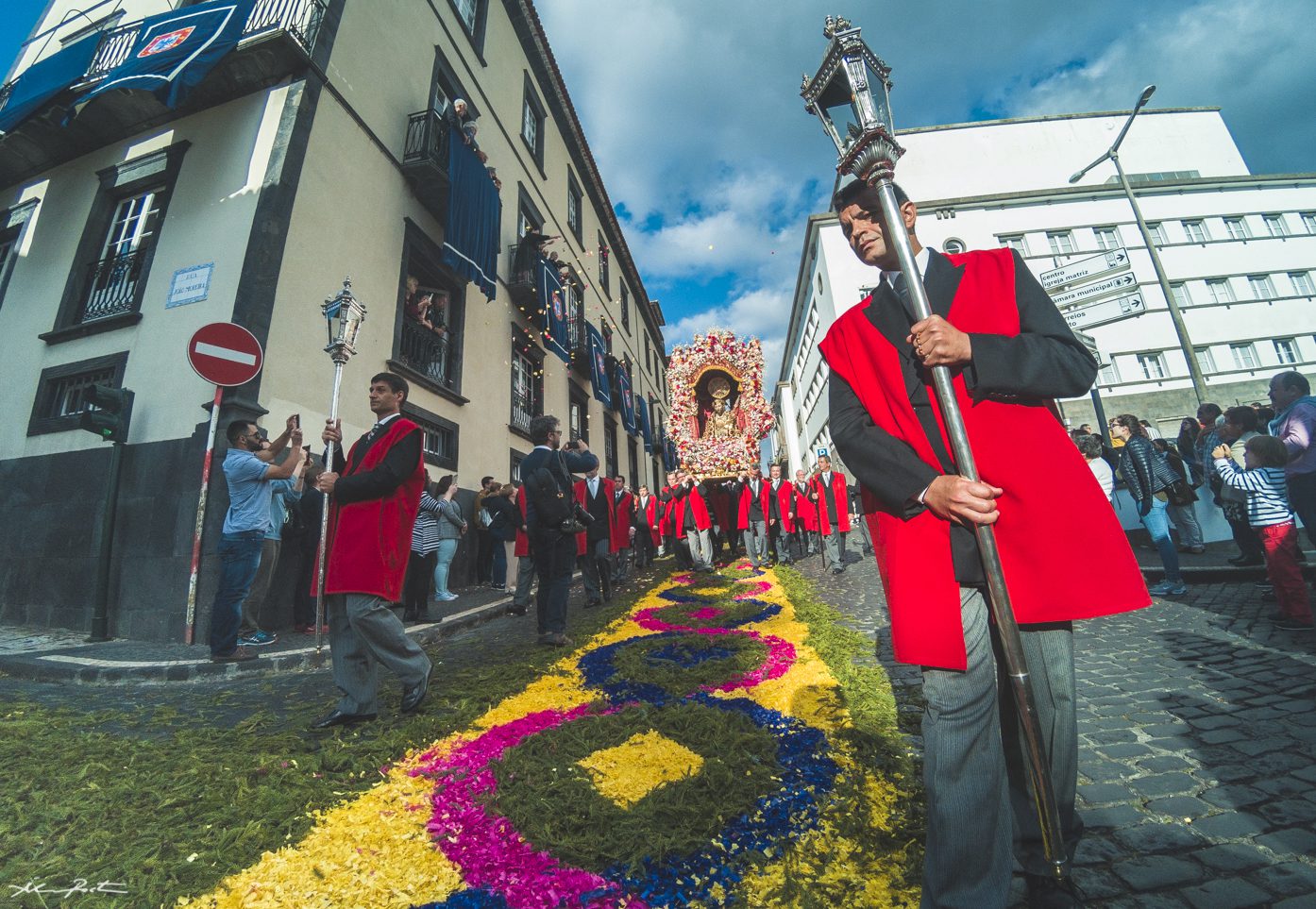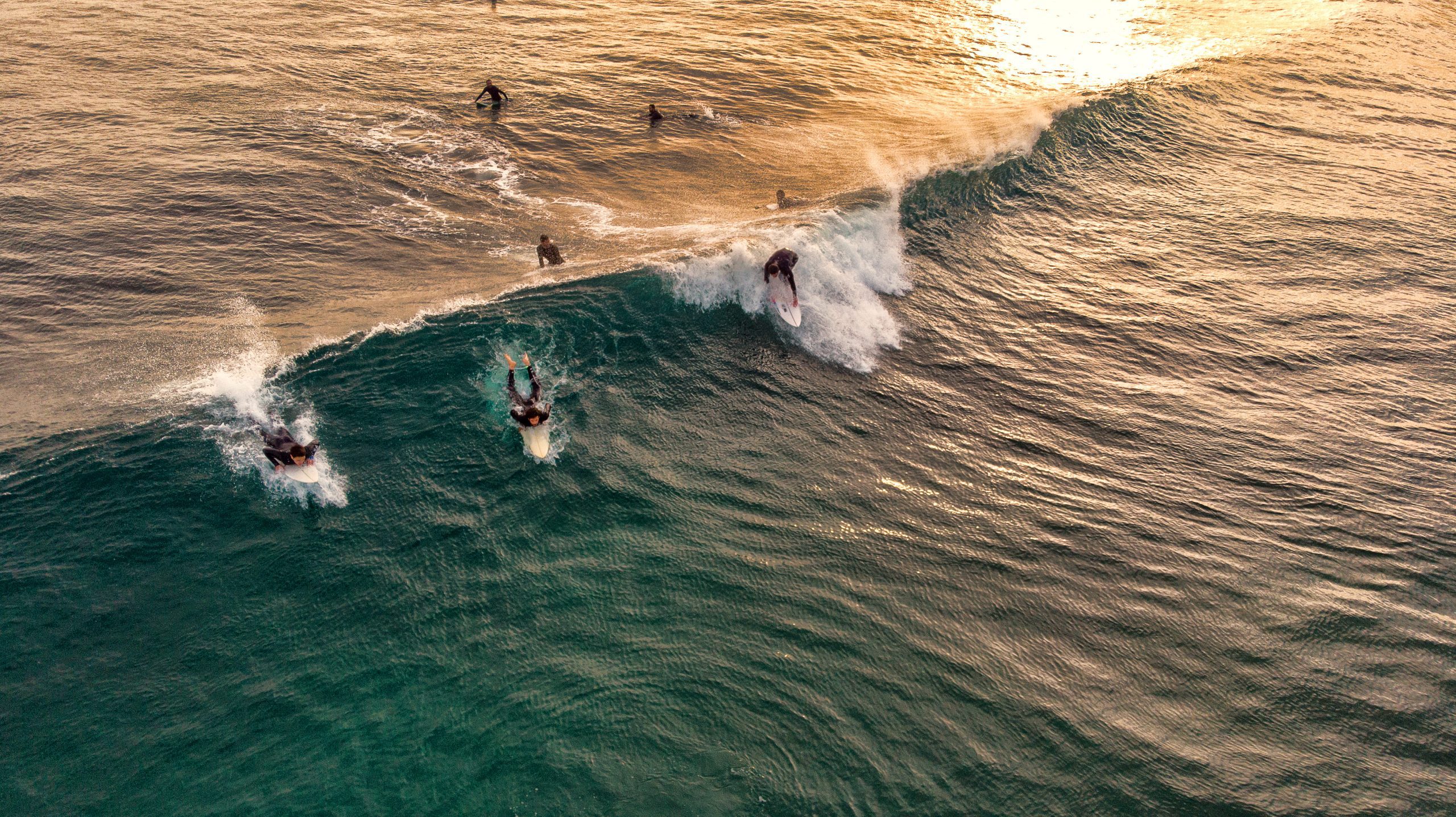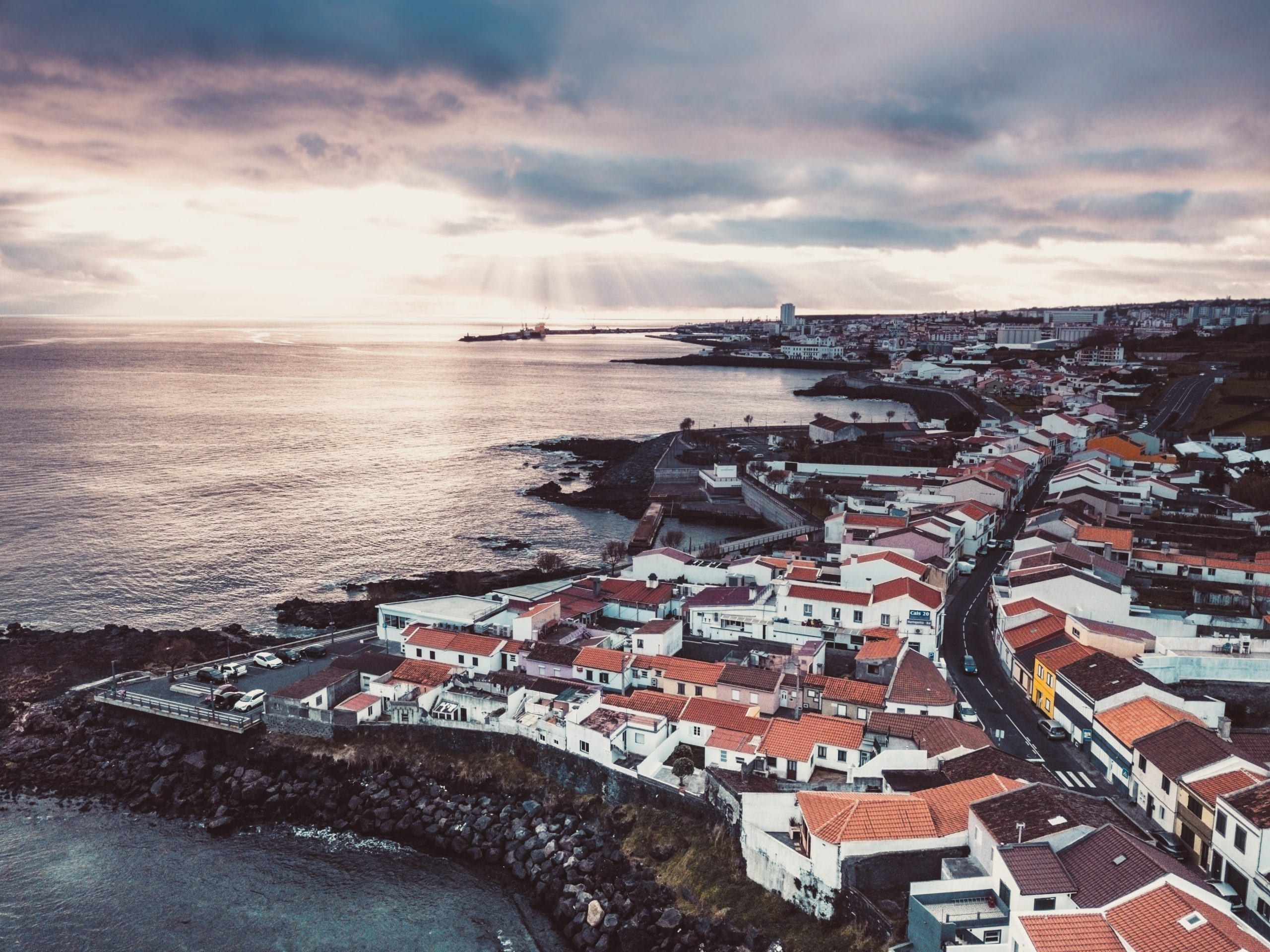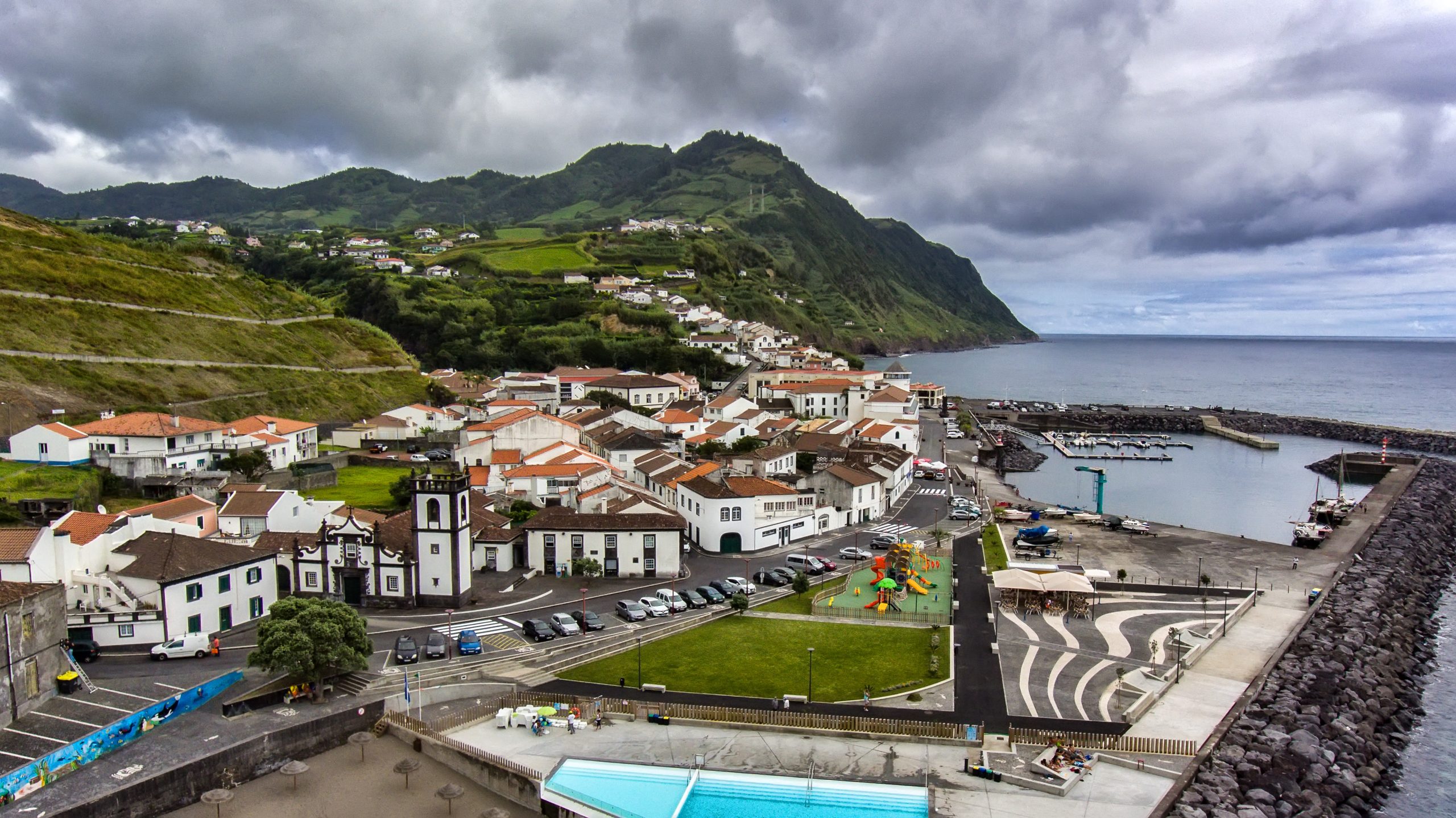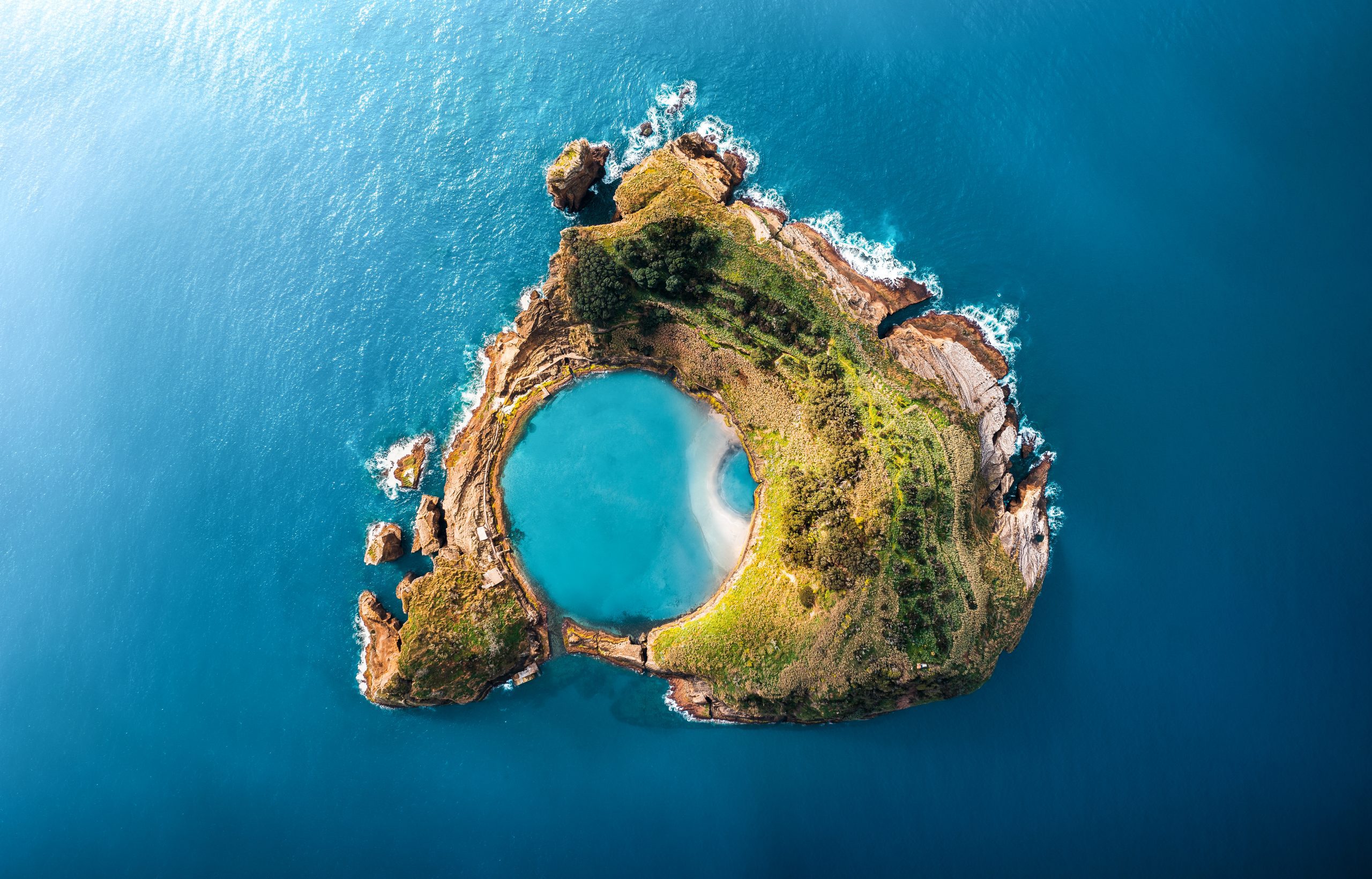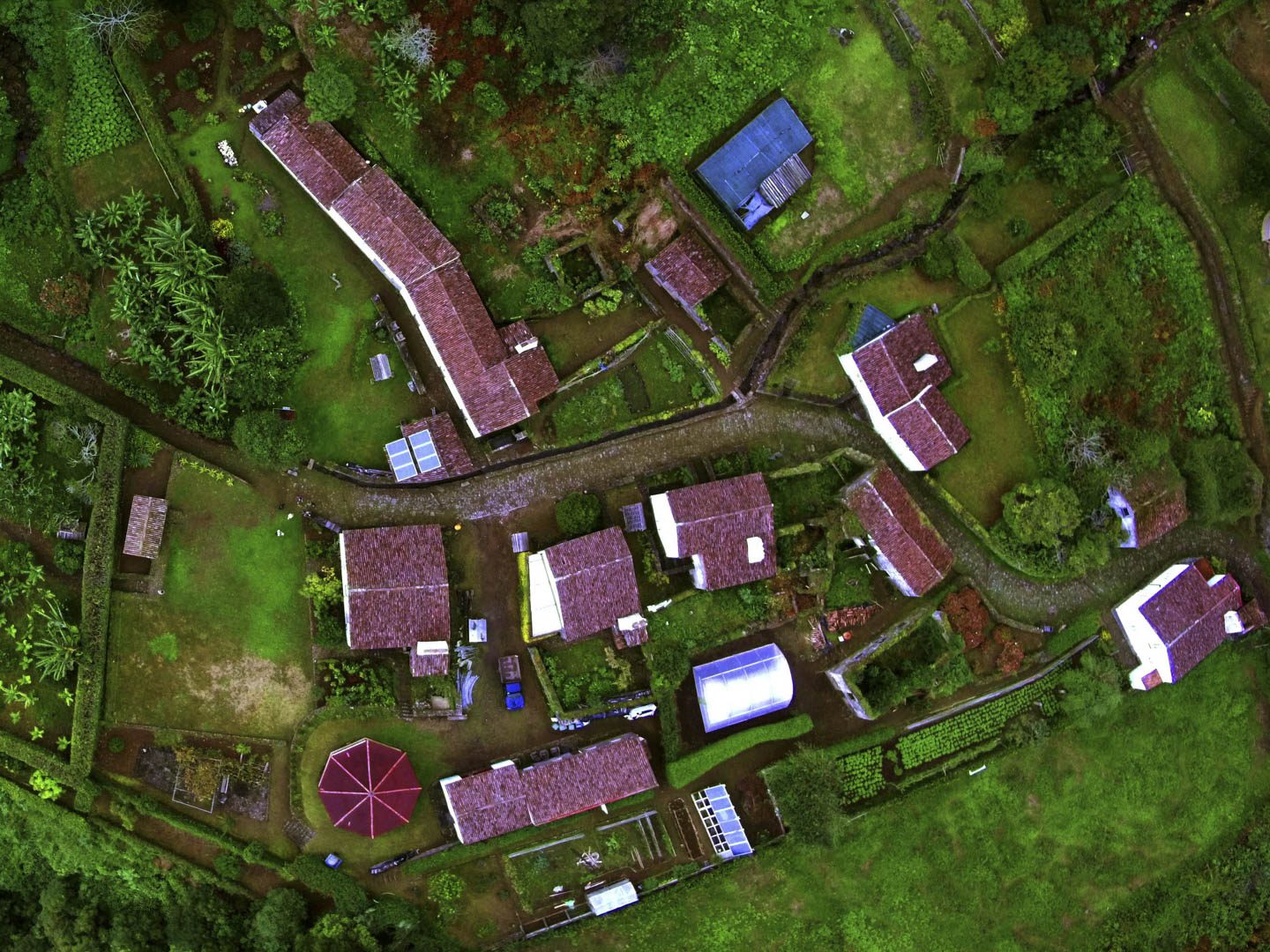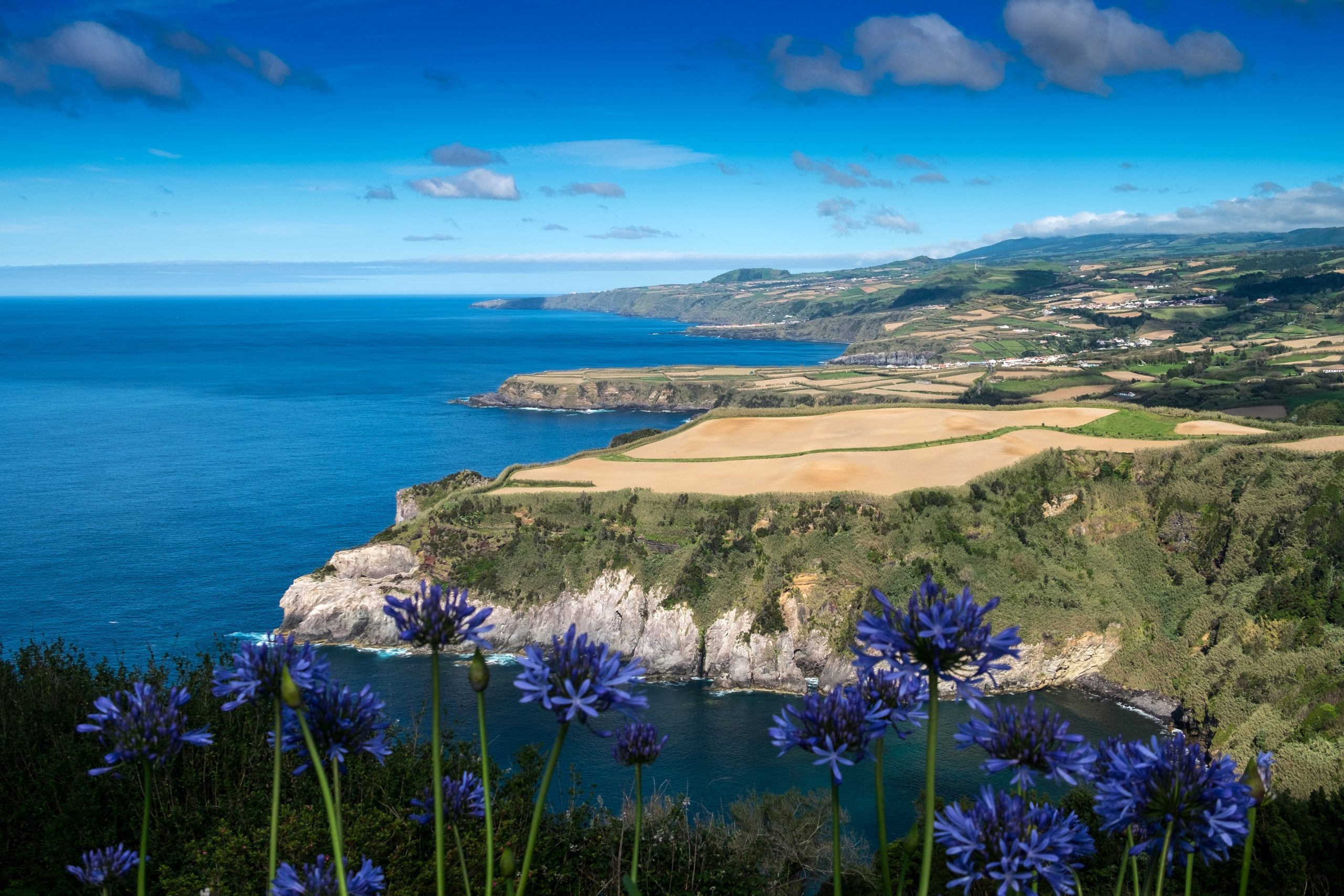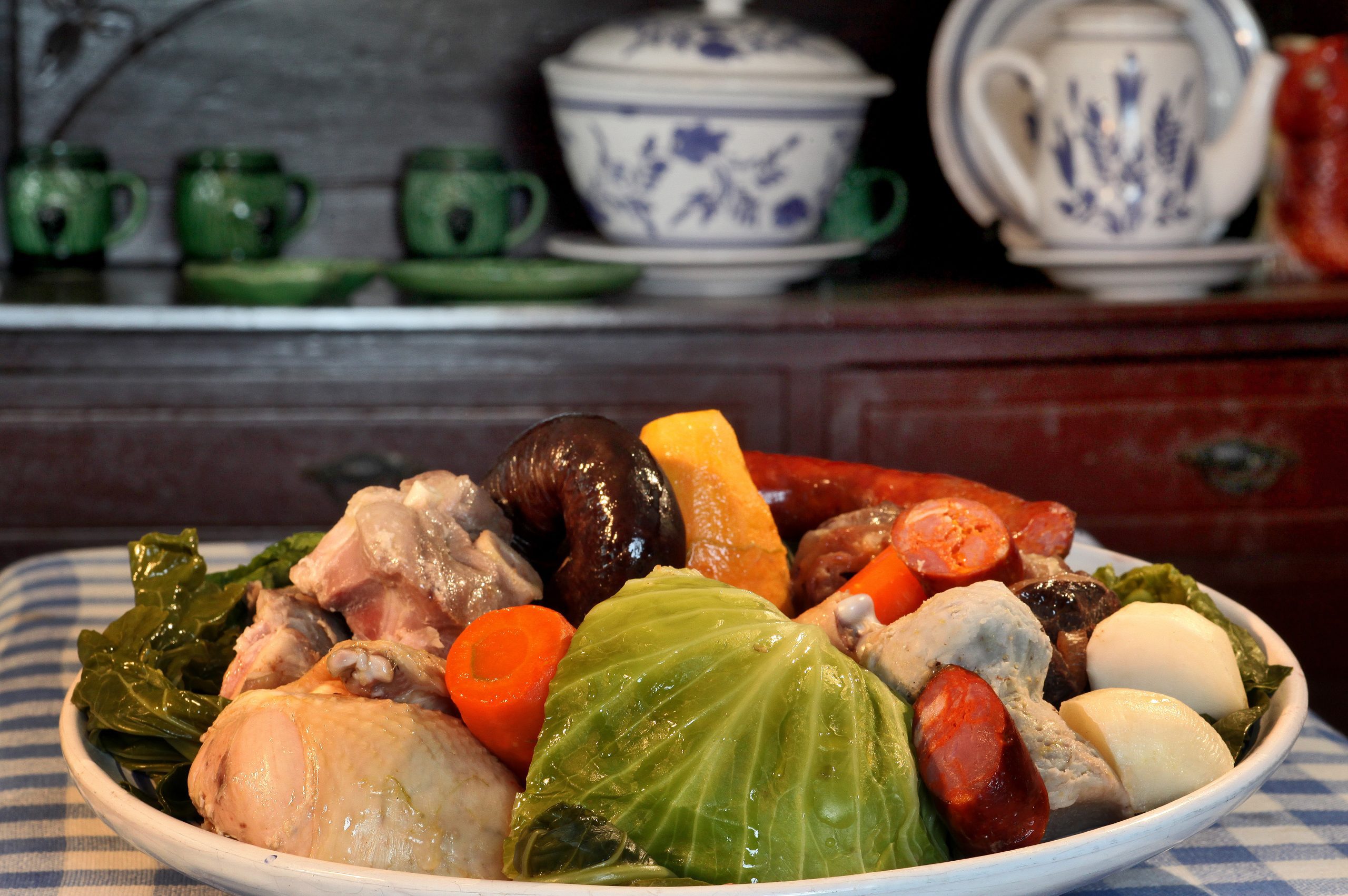Picture this: You are visiting the Azores islands during the wintertime, and it is raining and windy. You are in your hotel, thinking, ‘What can I possibly do today with this weather?’. You definitely can’t go on a hike or swim in the ocean. Well, in that case, we have the perfect spot for you: Poça da Dona Beija, of course!
Known for its therapeutic benefits, this natural haven is very popular among travelers and locals seeking a peaceful and relaxing experience. Whether it’s sunny or rainy, you can never go wrong if you go to Dona Beija. In this post, we will tell you all you need to know about Poça da Dona Beija, one of the best hot springs on São Miguel island.
What is Poça da Dona Beija
Geology & Volcanology

The naturally warm and iron-rich water inside the pools of Dona Beija comes from the Volcano of Furnas. It arrives at the pools at an average temperature of 39 °C (102 °F), although there is also a pool at 28 °C (82 °F). The Yellow Thermal River divides the pools into two sides. This color is due to the presence of cyanobacteria that react to iron oxidation.
At the hot springs, thermal water is known to have numerous health benefits, including improved blood circulation, reduced stress and pain, and aiding in the treatment of skin conditions such as acne. Iron water can also help alleviate symptoms of allergies, anemia, and parasitic diseases.
The clay found on the pools’ walls has mineral properties suitable for pelotherapy. So, to sum up, Poça da Dona Beija is a great place to take care of your physical and mental health, in addition to simply enjoying being in this little paradise in the middle of the Atlantic.

History & Geography
The story of Poça da Dona Beija goes back to 1988. At that time, a priest would use the spring daily for its beneficial properties. Then, the local population began to use it, but there was not enough space for everyone, and it was not safe as the thermal waters were under a cave. So in 2007, the government closed the space to the public.
It was only in 2010 that the pools that we know today were created. Indeed, after a public contest, the management selected a company called ‘Criações Naturais, Lda.’ this spring, which worked diligently to provide the safe and beautiful space that is Poça da Dona Beija. November 29 marked the beginning of the fame of the hot springs, and it has continued to improve since then. In fact, in 2015, they built two more pools.
About the name. Well, it is not what you might think. It originated from a Brazilian soap opera, featuring a main character named Dona Beija. The image of her swimming in a waterfall, shown in the series, gave this romantic place its name. Dona Beija is located in the county of Povoação, in the town of Furnas, the hot springs paradise. This is in the eastern part of São Miguel Island, in the countryside.
Fauna & Flora

At the hot springs of Poça da Dona Beija, you can see plenty of greenery surrounding the pools. But the one plant that stands out the most is, without any doubt, the local Taro (‘inhame’, in Portuguese). The taro from Furnas is renowned across the island for its distinctive flavor.
Did you know
Locals use iron-rich waters to irrigate taro plantations. The mud is a proper organic fertilizer for the roots.
What to Do at Poça da Dona Beija
Relax in the Warm Waters

At Poça da Dona Beija, you can find four tanks filled with water naturally warmed by Furnas’ volcano. Each pool is different, but the average temperature remains 39 °C (102 °F) in all of them. Here are the differences between the pools:
- Meditação: The first pool, located within the complex, is 130 cm deep (4’3″), making it the deepest of all. Two hot waterfalls are flowing down the walls, ideal for a back massage if you can handle the heat.
- Convívio Termal: on the other side of the river, this pool is relatively shallow, between 30 and 60 cm deep (12 to 24 inches). The depth varies due to an immersed bench all around the square pool.
- Mística: right across the former pool, Mística is undoubtedly the most famous spring. It is particularly appreciated for its long, cascading waterfall, creating an authentic, natural outdoor sauna experience. This pool is 90 cm (35 inches) deep.
- Serena: With 80 cm of depth (31 inches), this pool is by the end of the hot springs complex. Inside, you can find two small waterfalls coming out of the stone walls.
Cool Off

There is one last spring when you can swim at Poça da Dona Beija, but this one is relatively colder than the others. Indeed, with a temperature of only 28 °C (82 °F), the Ribeira pool is situated within the stream that runs through the entire complex.
Swimming in this fresher pool is a great way to cool off after the warm waters, especially on a hot day. It is approximately a meter deep (3.3 feet) and is a mixture of fresh river water and warm geothermal water.
See the Original Hot Spring

The source of the iron-rich water of Poça da Dona Beija is a small hot spring under the cave of Lomba das Barracas. Located near the stream, this spring provides heat to all the pools of the complex. This is where it all began, where locals initially took a dip. However, for safety reasons, it is forbidden to enter the cave or swim in the water due to the risk of rocks falling.
Shop Local

Inside Poça da Dona Beija, you will also find a gift shop filled with handicrafts and souvenirs from the Azores islands. Let yourself be tempted by the handmade jewelry, the cute toys for kids, or the typical postcards to send to your loved ones, for instance.
Best Time to Visit Poça da Dona Beija
Best Season

Naturally, the best time to visit the hot springs is when the air temperatures are cooler. Even though it never gets freezing in the Azores, in the late fall, throughout winter, and at the beginning of spring, the temperatures are at their lowest — about 15 ºC to 18 ºC (59 ºF-64 ºF).
Indeed, if you go in the summer, with temperatures over 20 °C, the warm waters are not as relaxing as you will get too hot quite quickly. However, on a rainy and windy day, even in the summer, the hot springs feel excellent.
Furthermore, during the summer, the island attracts many tourists, and the pools can become overcrowded. Please note that there is a quota of people allowed inside the complex at any given time. If it is full, you will have to wait outside in line for people to exit so new visitors can enter. From October to May, there are not so many travelers, and you can enjoy the place almost to yourself at times.
Check all our articles about the weather in the Azores throughout the year 🌤️ ☔️: January | February | March | April | May | June | July | August | September | October | November | December
Best Time of the Day

If you visit during the high season (summer), the hot springs can become crowded quickly. You need to arrive at the opening times as early as possible to avoid the crowds.
However, to fully enjoy the experience of Poça da Dona Beija, the best time to visit is at night. This is one of the few hot springs that are open at night, where you can experience another atmosphere with different light effects and see the stars. This is even more relaxing as air temperatures are usually lower at night.
Plan Your Visit to Poça da Dona Beija
How to get to Poça da Dona Beija
The easiest way to get there is to rent a car. You can also get a taxi, of course, but depending on where you are leaving, this can be expensive. Although a few buses go to Furnas, they take much longer than if you go by car, as they stop at every village.
From Ponta Delgada, Furnas is a 40-minute drive. Once you enter the town, there are indications towards the hot springs, and you will find a free parking lot at the entrance. Depending on the time you arrive, the parking lot may be full, and you will need to park on the street.
Planning a trip to the Azores? These articles will help you: How to Get to the Azores 🗺️ | Azores airports 🛬 | Flights between islands ✈️ | Ferries between islands ⛴️ | Which island to choose? 🏝️ | What airlines fly to the Azores? 🛩️
If You are Traveling with Kids or Older People

Poça da Dona Beija is a relaxing environment where both locals and travelers seek peace and spend quality moments. Children are welcome inside the complex (kids under 6 years old even receive a special price!), but they should refrain from jumping and splashing everywhere. It is essential to respect the peacefulness that people love about this place. Children must be under adult supervision at all times. Moreover, for the younger ones, it is forbidden to wear regular diapers; children must wear proper swim diapers.
Note that pregnant people and people with low blood pressure or any medical condition should consult a physician before their visit.
What to Bring
If you are visiting Poça da Dona Beija, be sure to bring your swimsuit. Avoid wearing white or clear-colored ones, as the iron in the water can cause them to stain orange. Flip-flops are always good to have when you get out of the pool to avoid walking barefoot on the cold ground. A towel and a robe can be great for staying warm after swimming in the comfortable waters.
Pricing & Operating Hours

The price to enter the hot springs and enjoy the pools is 8 euros for adults and 6 euros for children up to 6 years old. Tickets can only be purchased at the entrance, and you are allowed to be inside the complex for 1.5 hours.
This price includes a basket to put your belongings in while you swim in the hot springs. Changing rooms and cold showers are also included in the price. You can rent a locker for an additional 2 euros, with a security deposit of 20 euros, which is refundable upon exit from the complex. It is also possible to rent a towel.
Regarding the operating hours, the complex is open from 8:30 am to 11 pm every day of the year. The last admission is at 10:15 pm, and the pools must be left at 10:45 pm.
Where to Eat
If you need a place to eat near Dona Beija, click here. In this link, you will find the Top 10 restaurants on TripAdvisor.
Where to Stay
To make it easier for you, we already filtered the search on:
Pro Tips

Staying in Furnas for a couple of days is a great idea. This way, you have more time to explore the region and more availability to visit the hot springs. You won’t need to worry about parking space, and can decide to go later if you see a long waiting line.
As mentioned earlier, the water at Poça da Dona Beija can stain your swimwear and towel, so it is advisable to wear dark clothing only. To minimize decoloration, rinse your swimsuit in the shower before heading back home. Don’t let them dry without rinsing. Additionally, refrain from wearing jewelry at the pool. They can also change color due to the iron.
What to do around Poça da Dona Beija
Furnas is one of the locals’ favorite places to have a weekend getaway, and it is easy to understand why. Firstly, it is a hot springs paradise; there is more than only Poça da Dona Beija. The town is also very picturesque, with its beautiful lake. Let’s see what to do near the hot springs.
Around Furnas Lake

Next to the town of Furnas, Lagoa das Furnas is a good spot to discover unique scenery. You can hike around the lake and see many wonders, such as the Chapel of Nossa Senhora das Vitórias, a unique structure on the island, located in the Mata-jardim José do Canto, which features a diverse array of plant species. Furthermore, the waterfall Salto do Rosal.
On the other side of the lake is another park inside a forest: Grená! If you are brave enough to climb the 633 stairs, you will see a beautiful and very tall waterfall called Salto da Inglesa. Right at the entrance of the park is the popular area of Caldeiras das Furnas, where you can witness the omnipresent volcanic activity in the Azores. Follow the path, and you will discover fumaroles and boilers like you may have never seen before. This is where they prepare our famous Cozido das Furnas.
Eat a Cozido at a local restaurant

Cozido das Furnas is a local dish cooked with volcanic activity. Yes, we don’t use any electric machines or fire to cook the ingredients inside the big pots. Only the warm earth. If you visit Caldeiras along the lake by 12 pm, you will see professionals taking the pots out of the ground.
Inside the pot are several types of meat (pork, beef, and chicken) and a variety of vegetables (carrots, cabbage, yams, potatoes, and many more). To eat it, it is always better to book in advance at one of the restaurants in Furnas. Portions are enormous, but it is an experience to have in São Miguel.
→ Explore the authentic flavors of Azorean cuisine in our articles: Bolos Lêvedos | Cozido das Furnas | Grilled Limpets | Massa Sovada | Pimenta da Terra | Gorreana Tea
Terra Nostra Botanical Garden and Hot Springs

Another spring of warm, iron-rich water is Terra Nostra Park. There, in addition to hundreds of flora species — from fascinating flowers to centenary trees — you will find the famous huge yellow pool, two smaller tanks with waterfalls, and one of the most prestigious hotels on the island.
→ Related article: Parque Terra Nostra | Parque Terra Nostra’s Thermal Pool
Furnas

You couldn’t go to the hot springs and not visit the beautiful town of Furnas. Even breathing the air of Furnas is an exceptional experience. Indeed, when you get close to the fumaroles inside the city, you will smell an air with a sulfur smell, similar to rotten eggs.
In the summer, locals sell corn cooked in natural boilers. Another specialty of Furnas is the local sweet bread, called Bolo Lêvedo, which is sold at every café and souvenir shop. Also near the fumaroles are the springs of cold iron water, which you can taste (spoiler alert: it is not the best water you will drink).
Check all our articles about each one of the most relevant points of interest in Furnas: Caldeiras das Furnas | Furnas | Capela da Nossa Senhora das Vitórias | Castelo Branco Viewpoint | Lagoa das Furnas | Lagoa das Furnas Viewpoint | Mata-Jardim José do Canto | Parque Terra Nostra’s Thermal Pool | Pico do Ferro Viewpoint | Poça da Dona Beija | Ribeira Quente | Praia do Fogo | Salto do Cavalo Viewpoint | Salto do Rosal | Terra Nostra Garden
Complementary Information
Best Season to Visit the Azores
The Azores Archipelago boasts a unique climate that shapes its lush landscapes, making it a splendid year-round destination. With mild temperatures and minimal fluctuations, each season offers something unique. Spring averages 16 °C, summer reaches 21 °C, autumn cools to 18 °C, and winter remains mild at 14 °C.
→ For a detailed breakdown of the weather by month, check the following links 🌤️☔️: January | February | March | April | May | June | July | August | September | October | November | December
How to Get to the Azores
The Azorean Archipelago is easily accessible through numerous flight routes. Lisbon and Porto are the main entry points to the continent, with direct flights available to São Miguel (PDL), Terceira (TER), Faial (HOR), Pico (PIX), and Santa Maria (SMA). To find the best flight, use search engines like eDreams or Skyscanner. These platforms let you compare prices and schedules from multiple airlines in one convenient location.
For more details on how to get to the Azores, take a look at our complete guide. But what if you want to explore beyond your arrival island? We’ve got you covered!
- Azores airports 🛬
- Flights between islands ✈️
- Ferries between islands ⛴️
- Which island to choose? 🏝️
- What airlines fly to the Azores? 🛩️
→ Once you’ve found the perfect route, book your tickets and get ready to experience one of the world’s most stunning island groups!
Travel Essentials
Essential Information for your Azores trip: Azorean Language & Phrases 🗣️ | Currency & Banks 💵 | Credit Cards & Traveler’s Cheques 🏧 | Driving in the Azores 🚗 | Electricity 🔌 | Experiences & Tours 🗺️ | Health & Safety 🩺 | Internet & Wi-Fi Access 🛜 | Phones & Mobile Service 📞 | Post Offices & Buying Stamps ✉️ | Public Holidays 🏖️ | Shopping 🛒 | Time & Daylight 🕒 | Whale Watching Guide 🐳 | Best Island to Visit 🏞️
Useful Tools & Apps
The weather in the Azores can be variable, so it’s helpful to use some apps before visiting the islands. Spotazores provides live camera feeds from the main tourist attractions, allowing you to check the weather and plan your visit. For accurate weather predictions, use Windy or Windguru — they provide the most reliable predictions.
Video
Conclusion
Poça da Dona Beija should be on your bucket list. If you want to relax during your holidays in the Azores, this is the place to be. In addition to the hot springs, don’t forget to visit the beautiful town of Furnas for the whole experience. Keep in mind that this is not the only hot spring on the island! Try out Terra Nostra Park, Caldeira Velha, Ponta da Ferraria, and Caldeiras da Ribeira Grande. Each one of them is unique.
Authors’ Note
I am pleased to inform you that all the recommendations in this article are based on my personal experience and observations. As the author, I have personally visited each attraction mentioned, ensuring that every suggestion is grounded in first-hand knowledge and genuine enthusiasm.
FAQs
Poça da Dona Beija is a natural thermal pool complex situated in Furnas, on the island of São Miguel, Azores. It is known for its therapeutic and relaxing waters sourced from volcanic springs.
It is recommended to bring swimwear, a towel, flip-flops, sunscreen, and a water bottle for your visit to Poça da Dona Beija. The facility offers changing rooms and lockers for the convenience of visitors.
Entrance prices at Poça da Dona Beija vary depending on the season and ticket type, typically ranging from €4 to €8 per person. Discounts are available for residents and children.
Poça da Dona Beija is located in the parish of Furnas, in the eastern part of São Miguel Island, Azores, Portugal. It is accessible via the Regional Road passing through Furnas, with parking available nearby.

